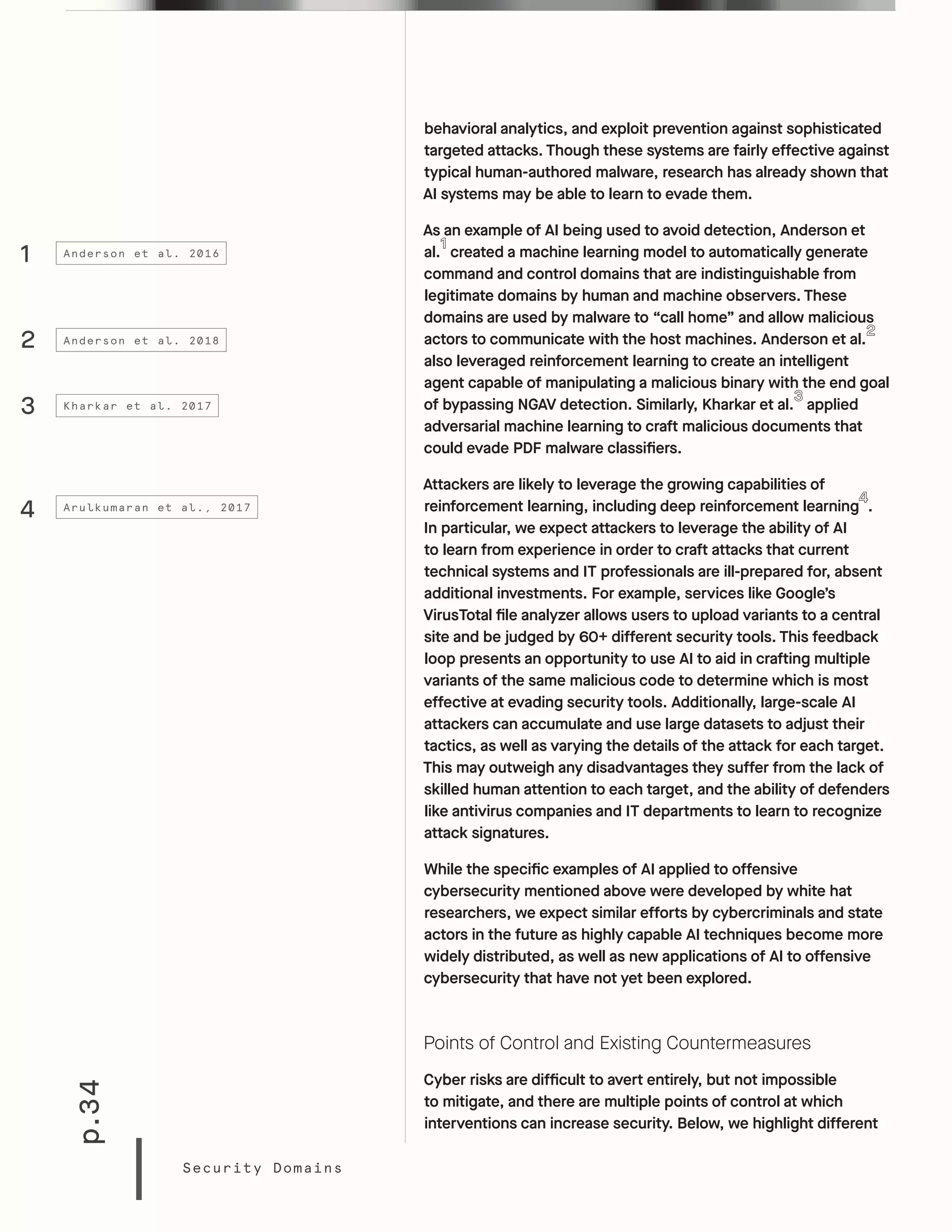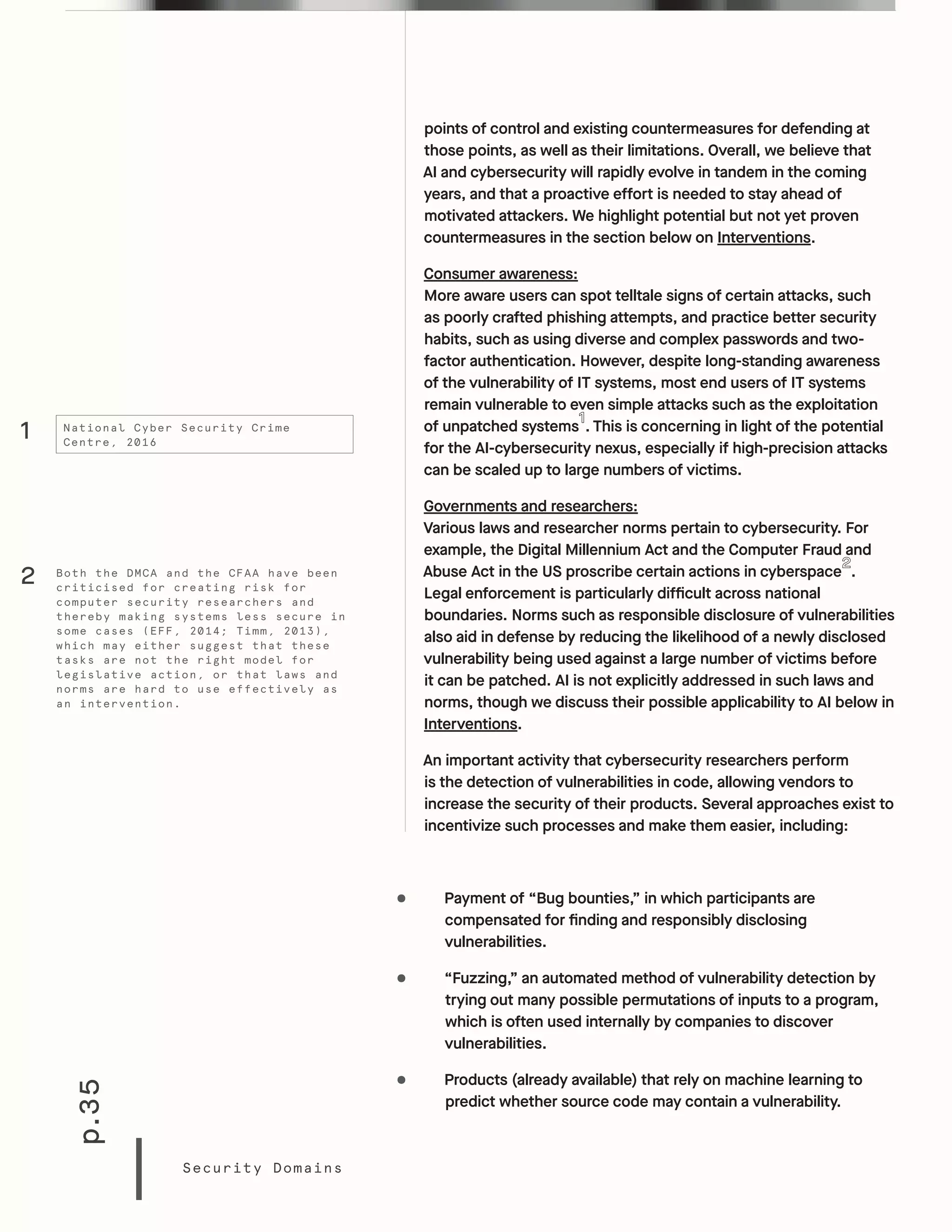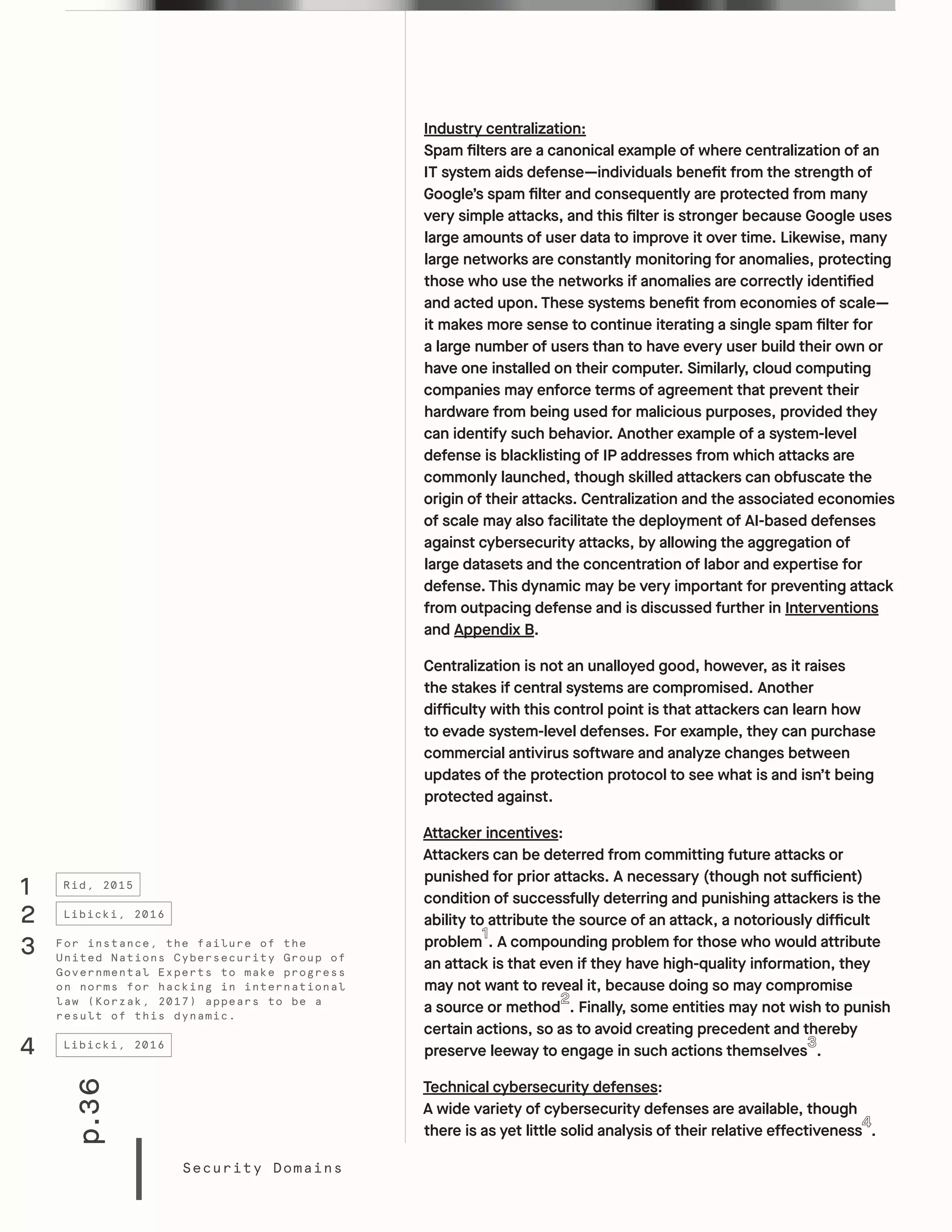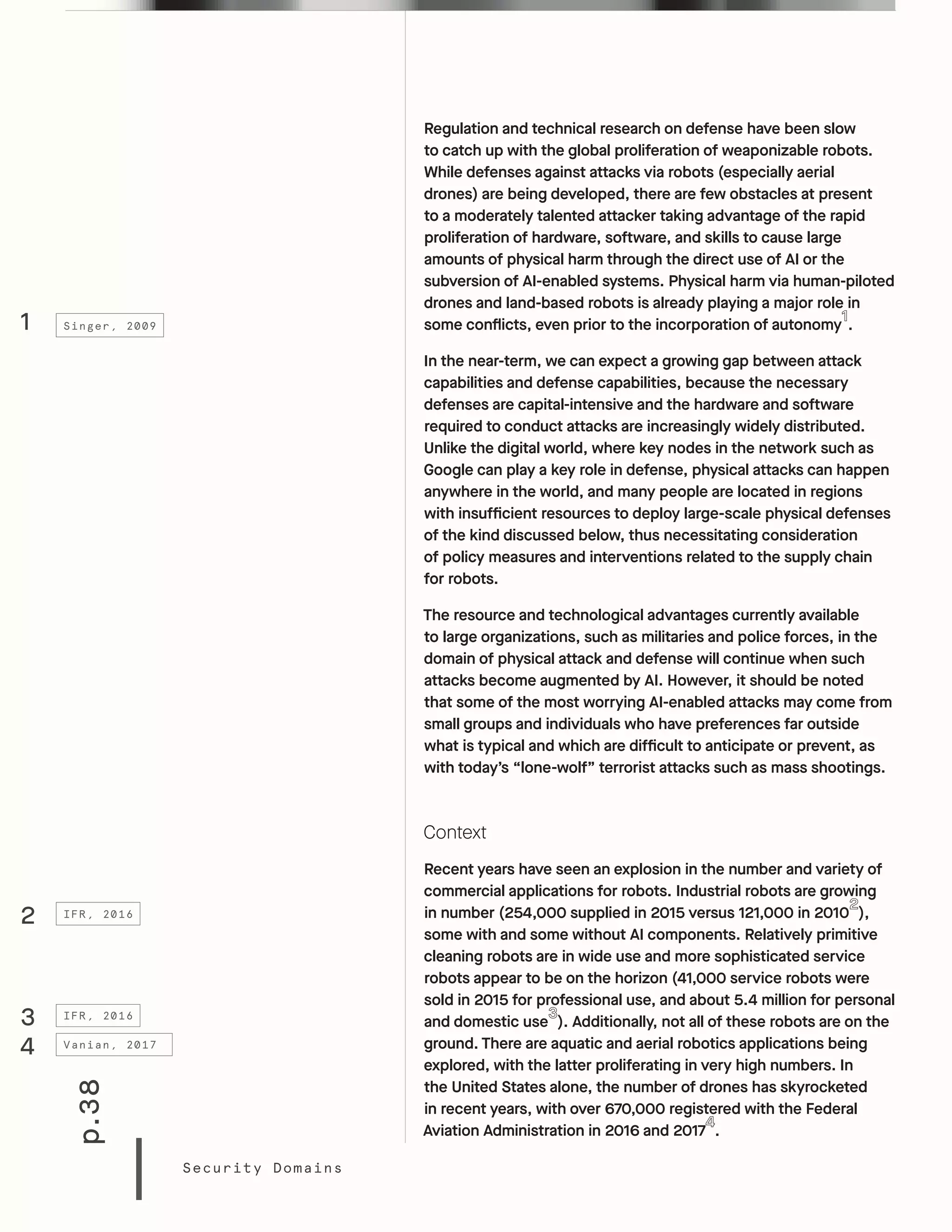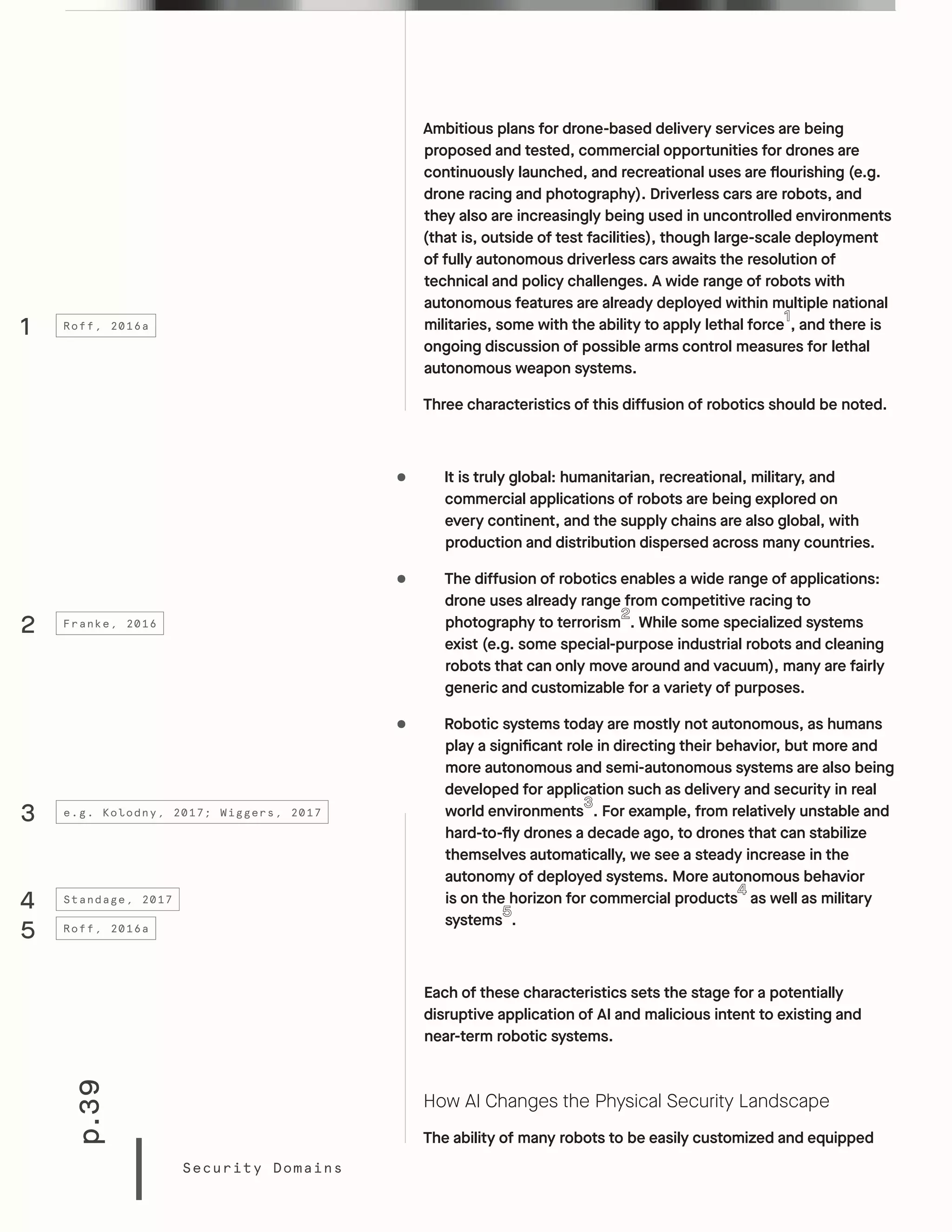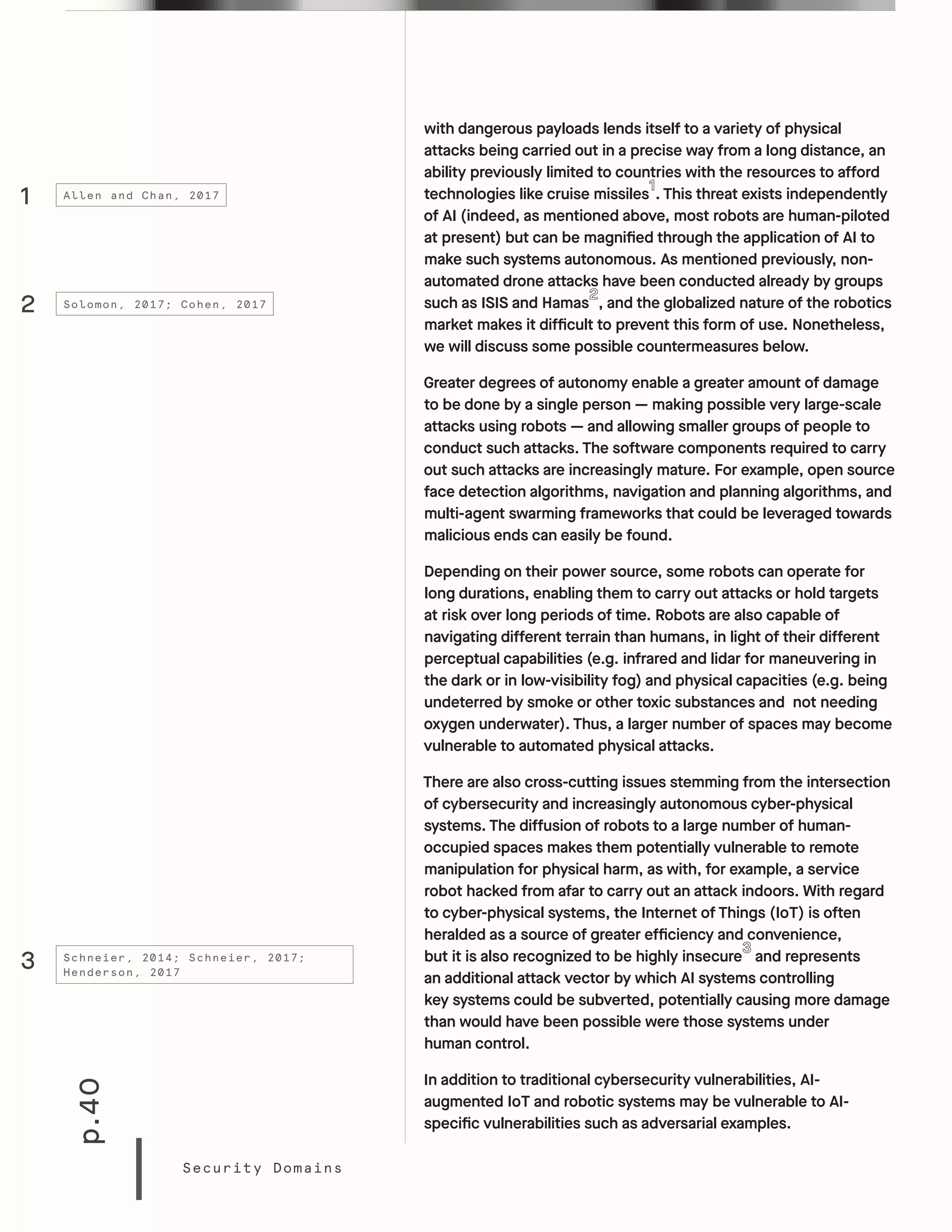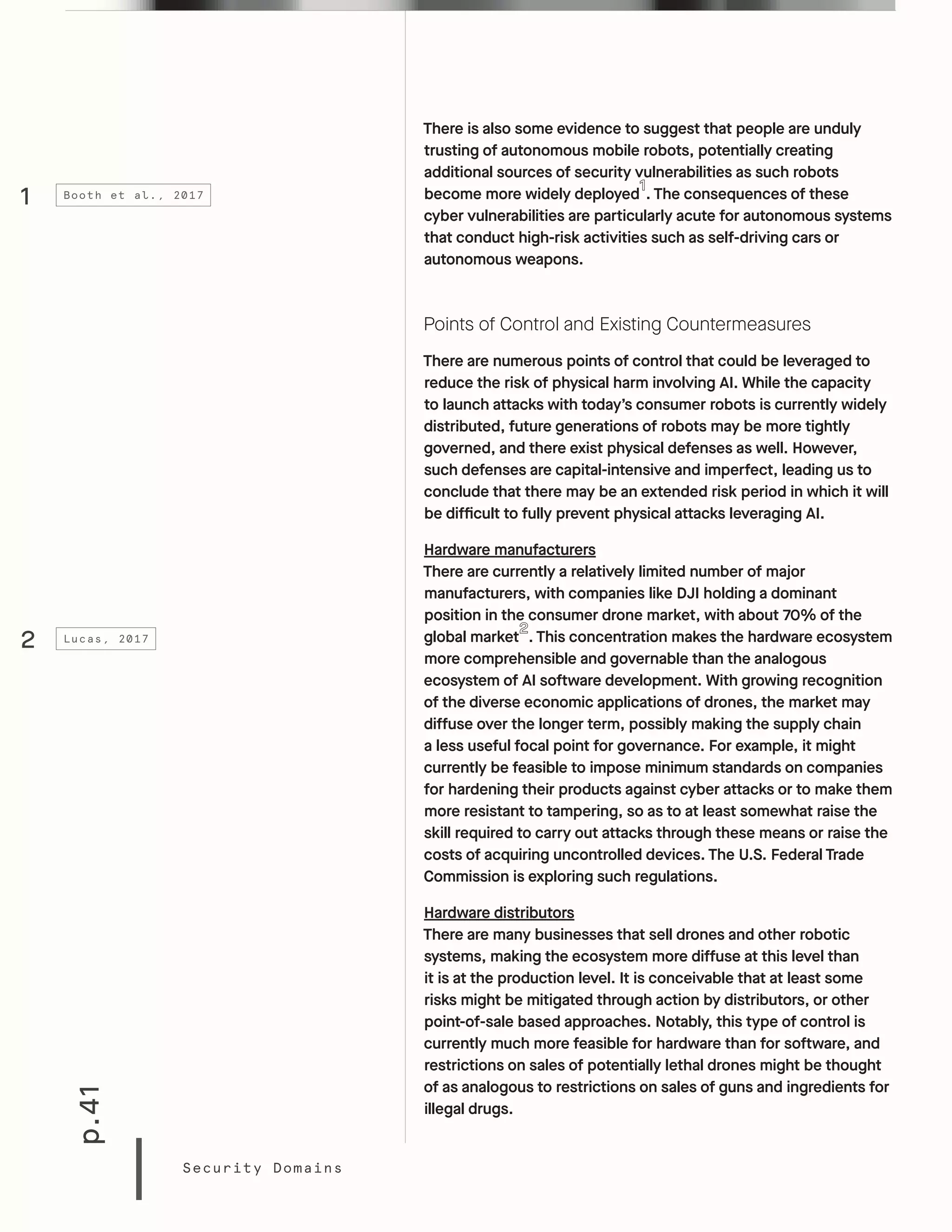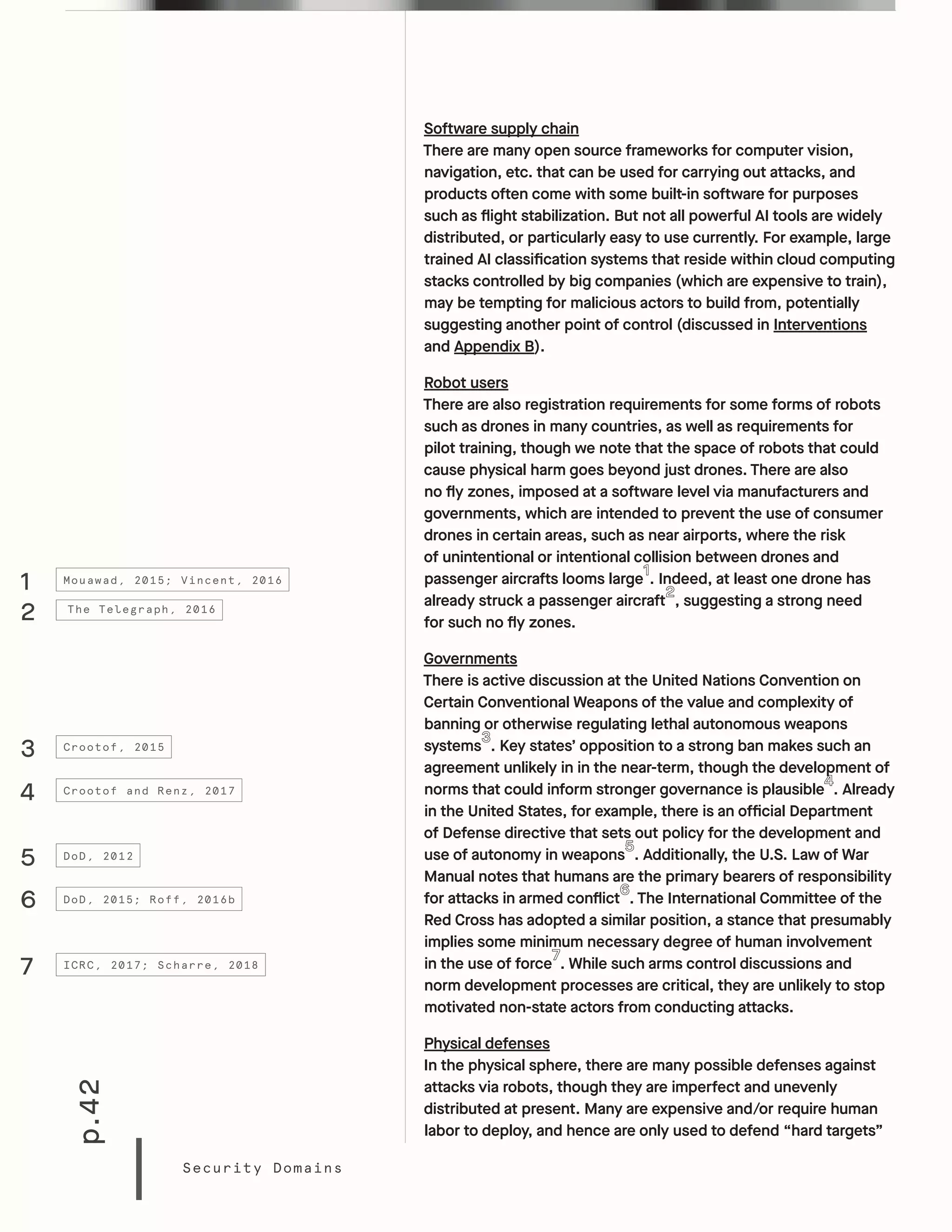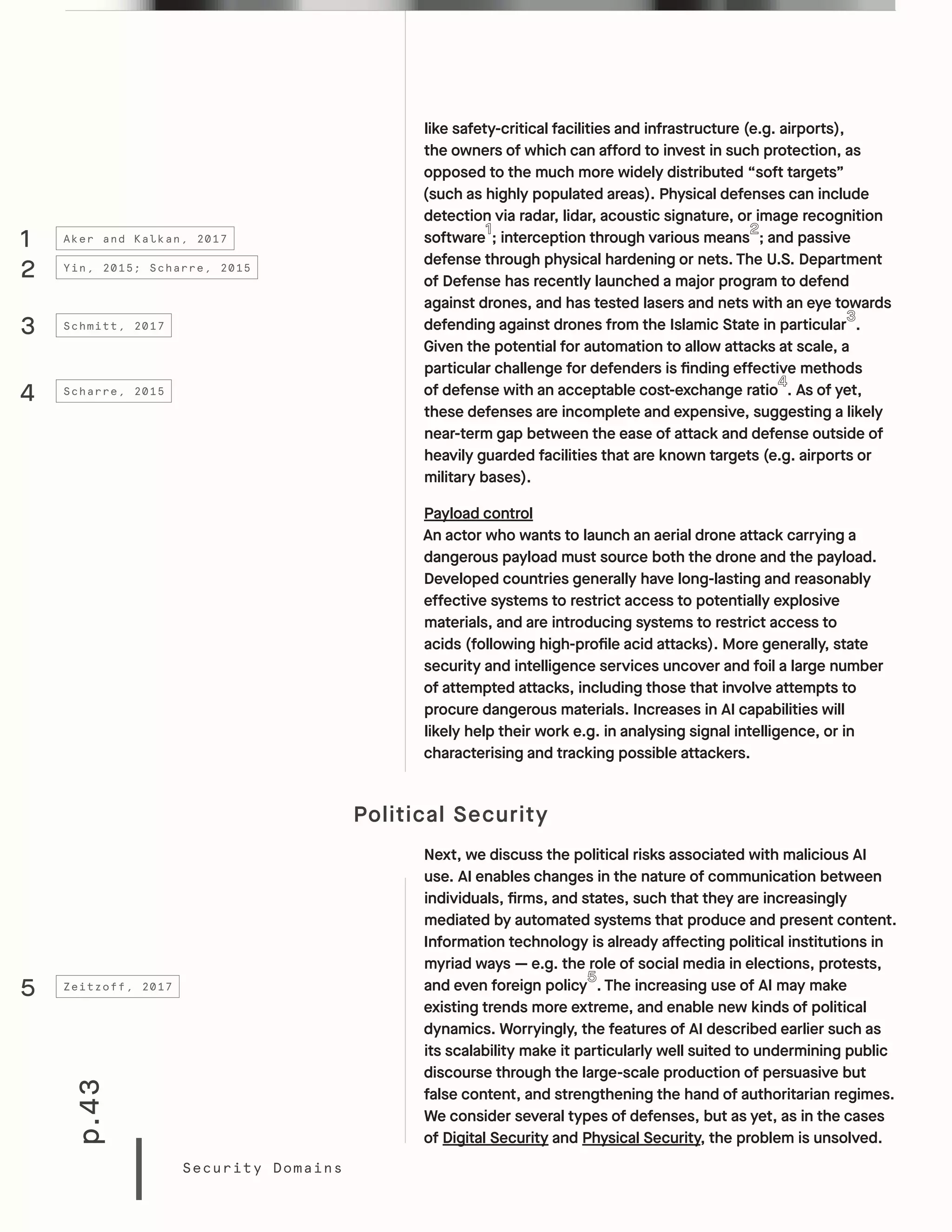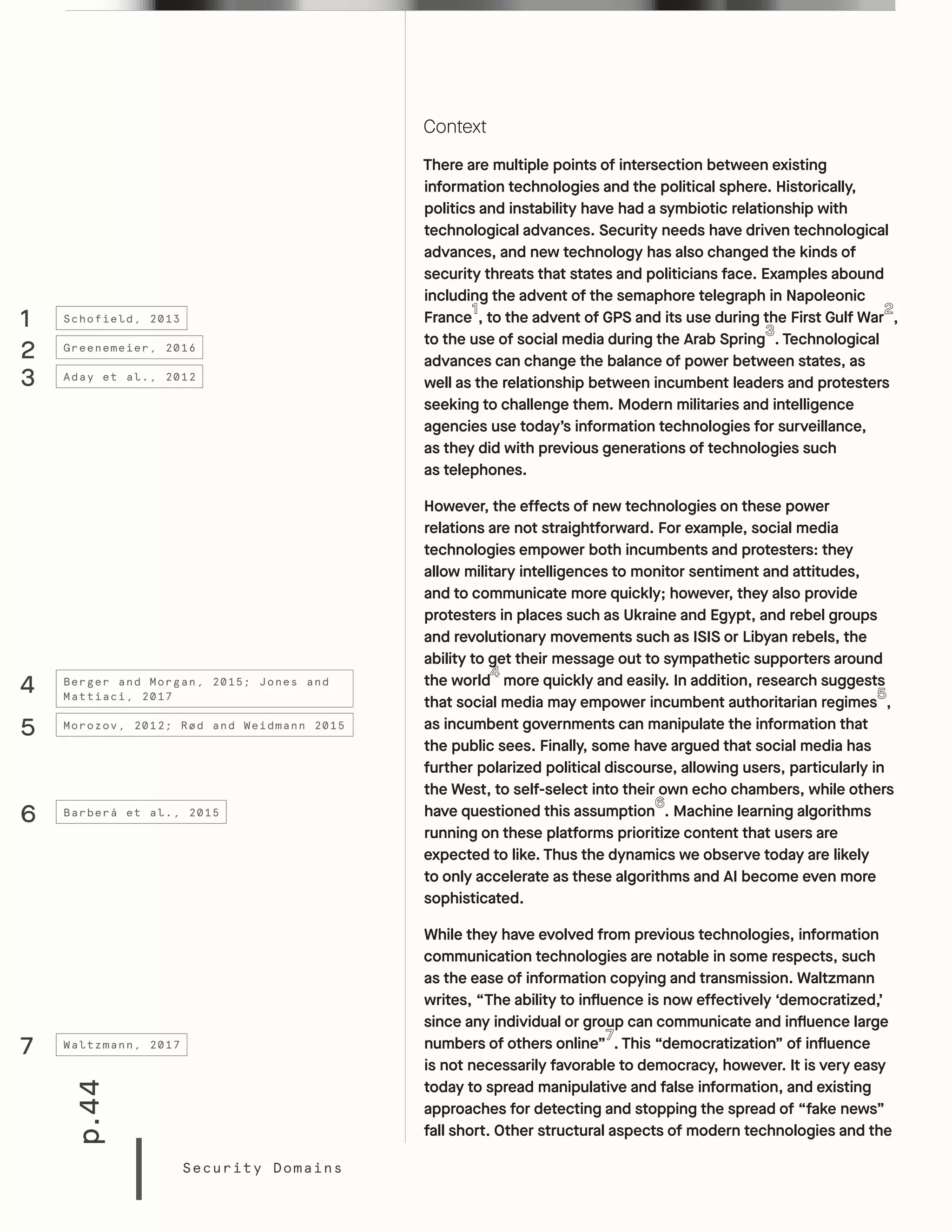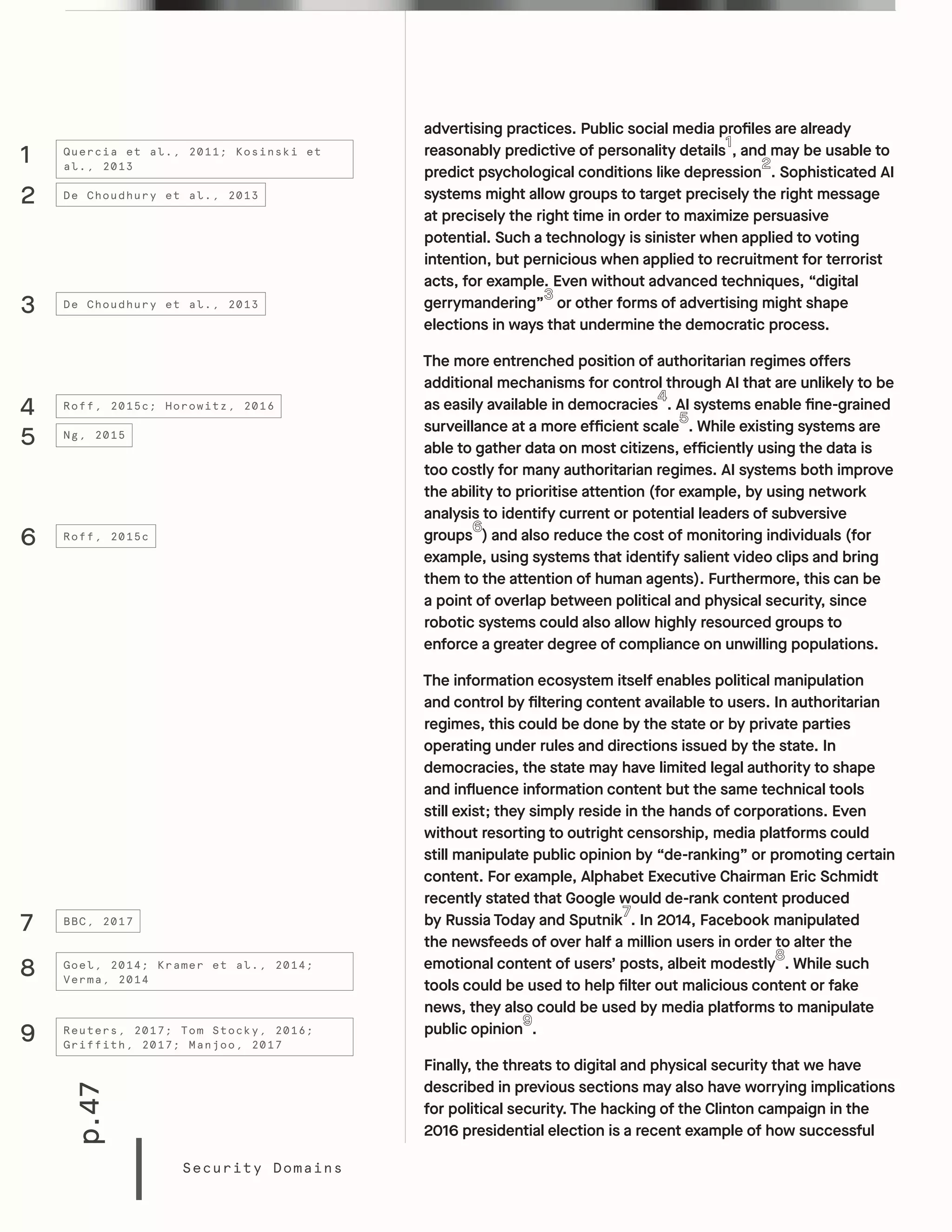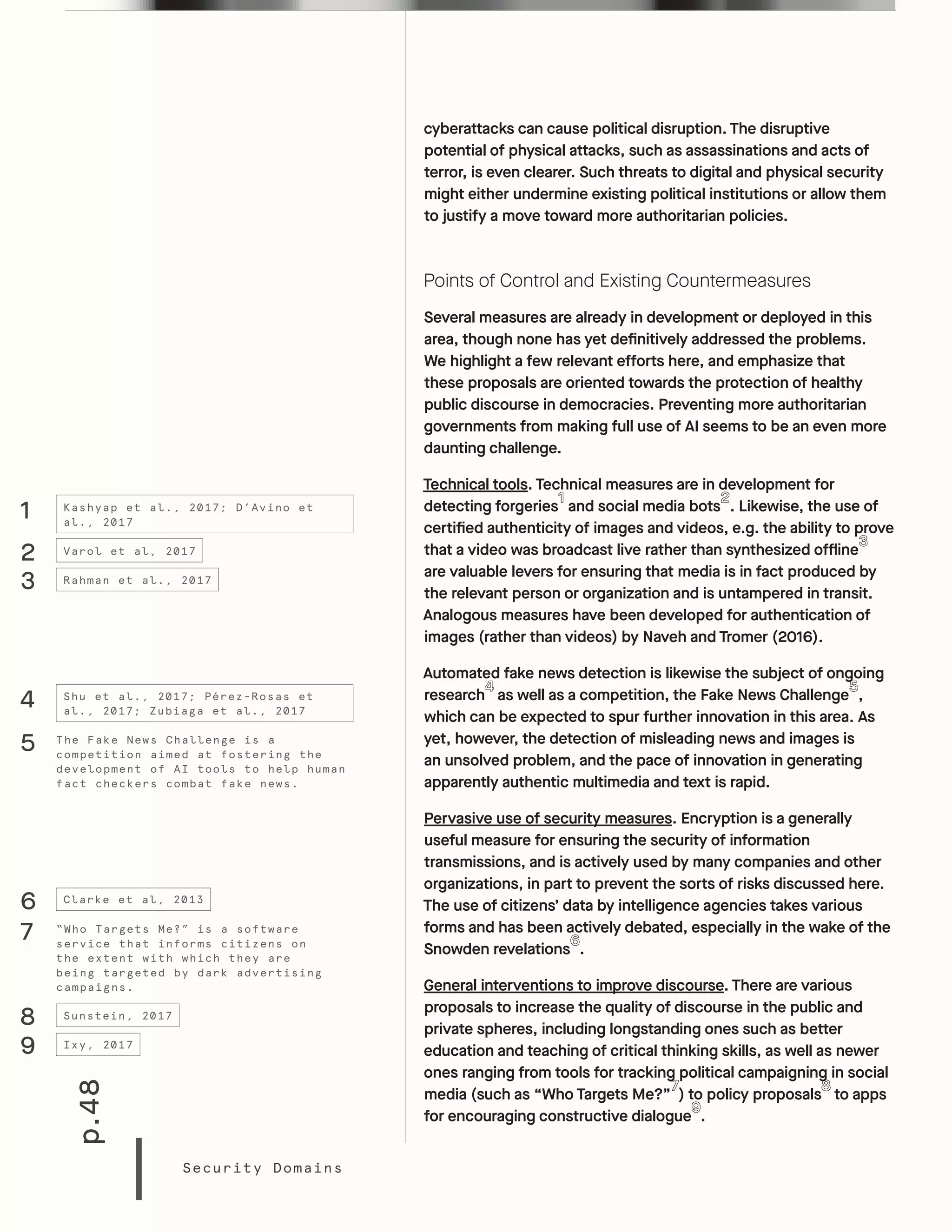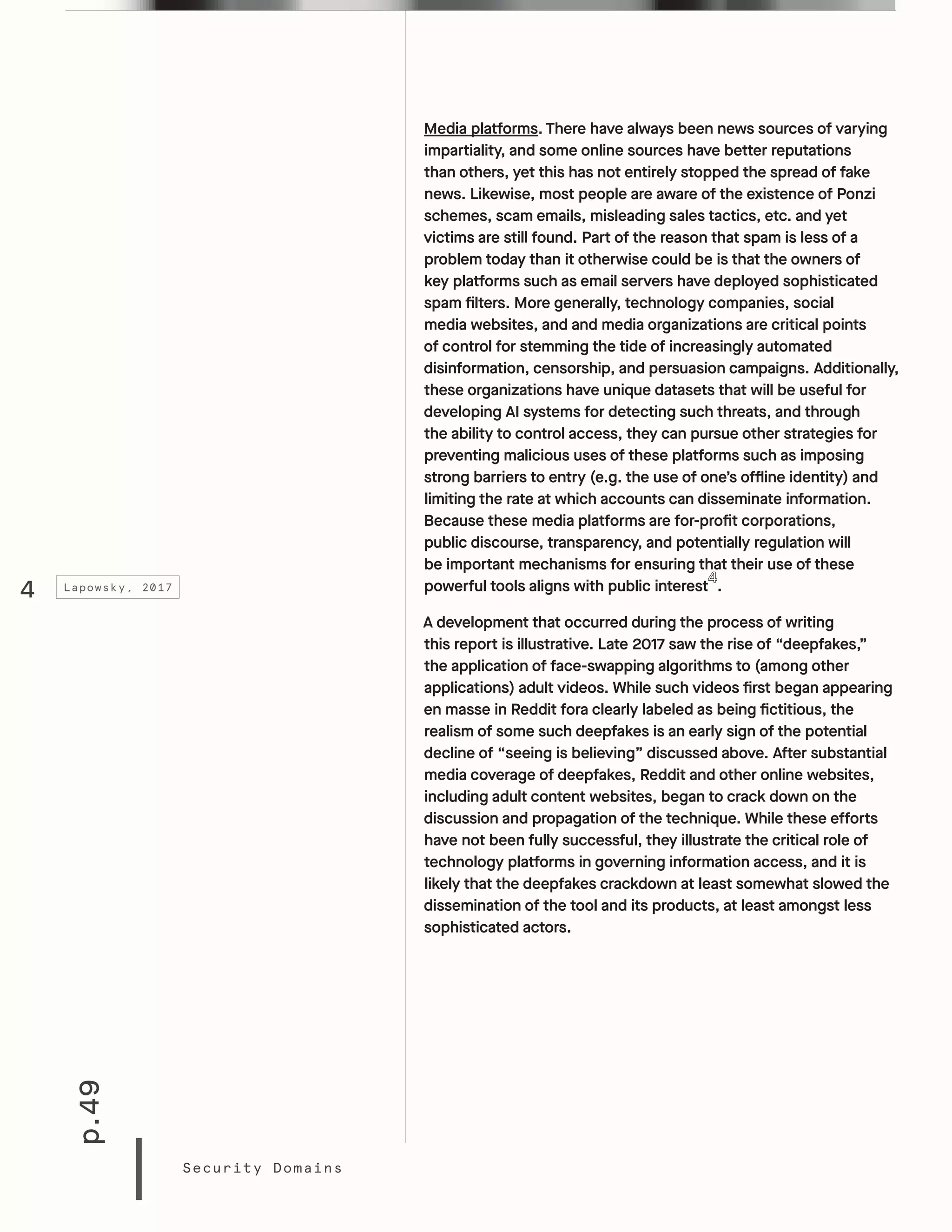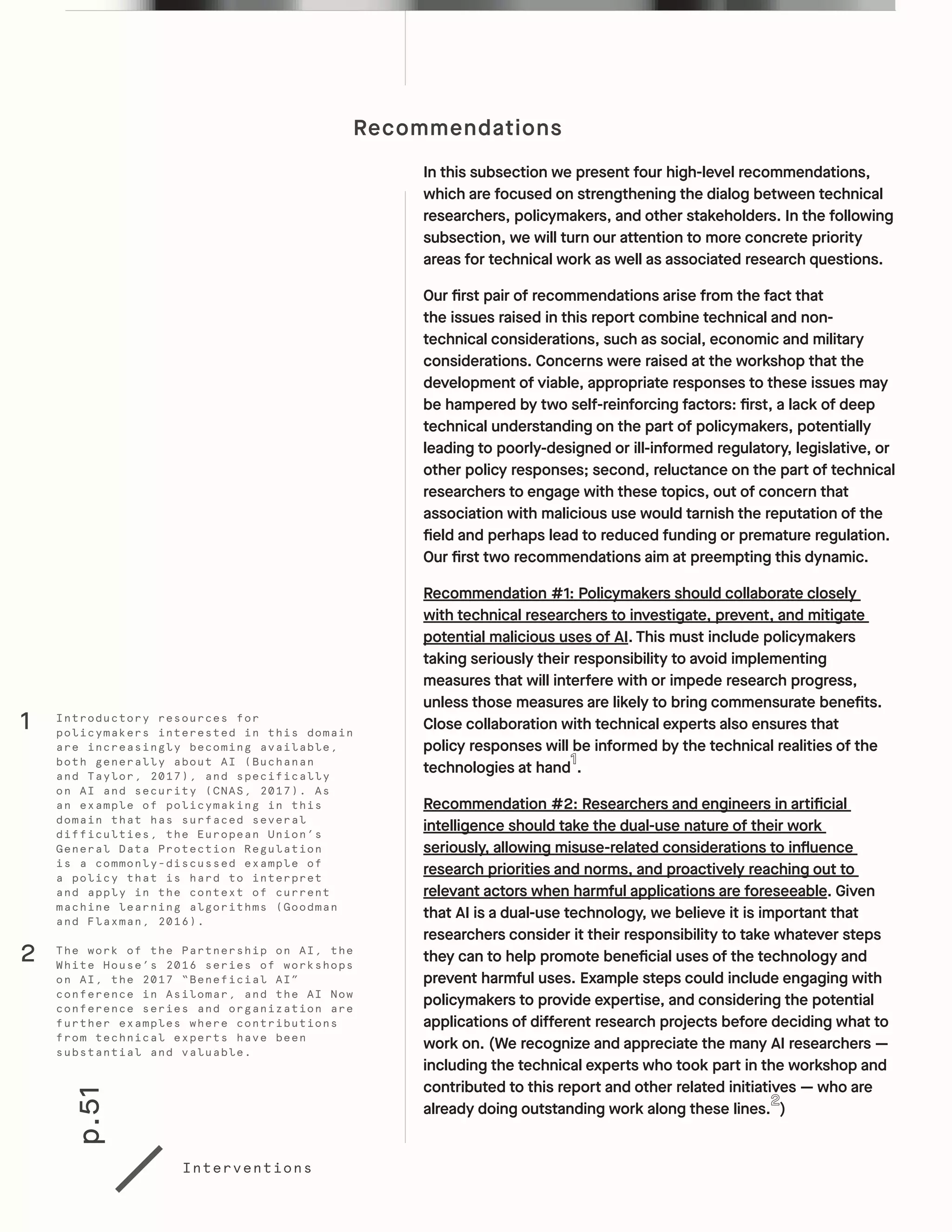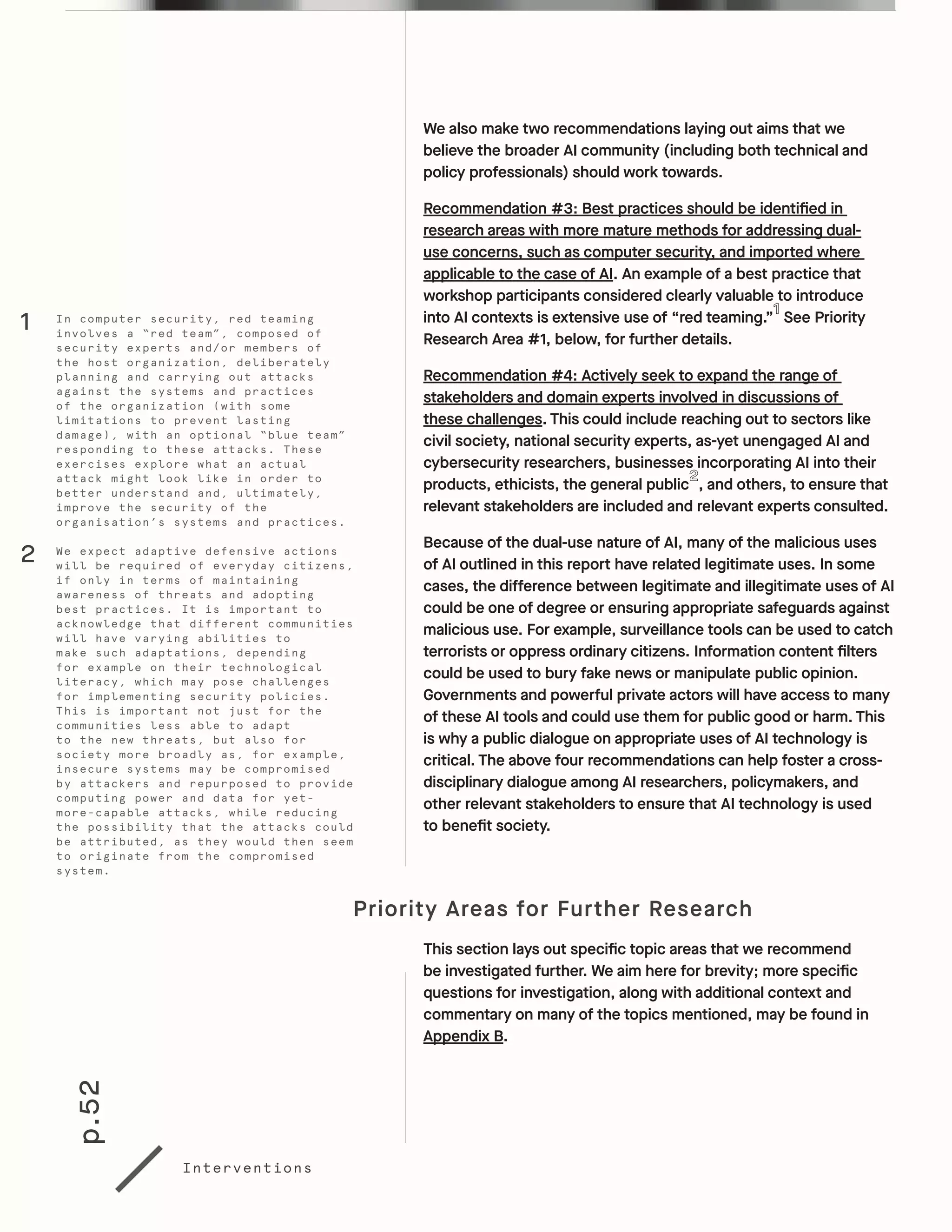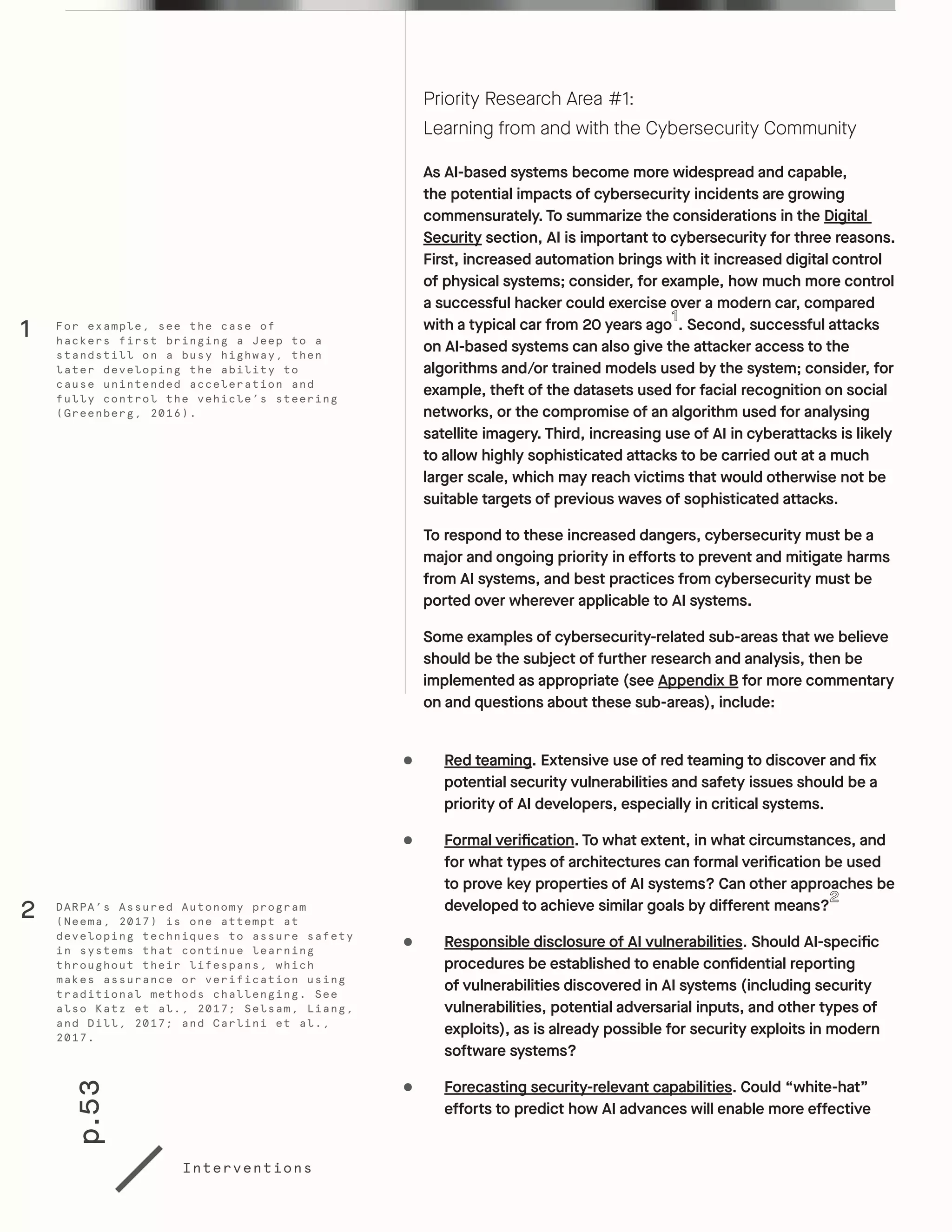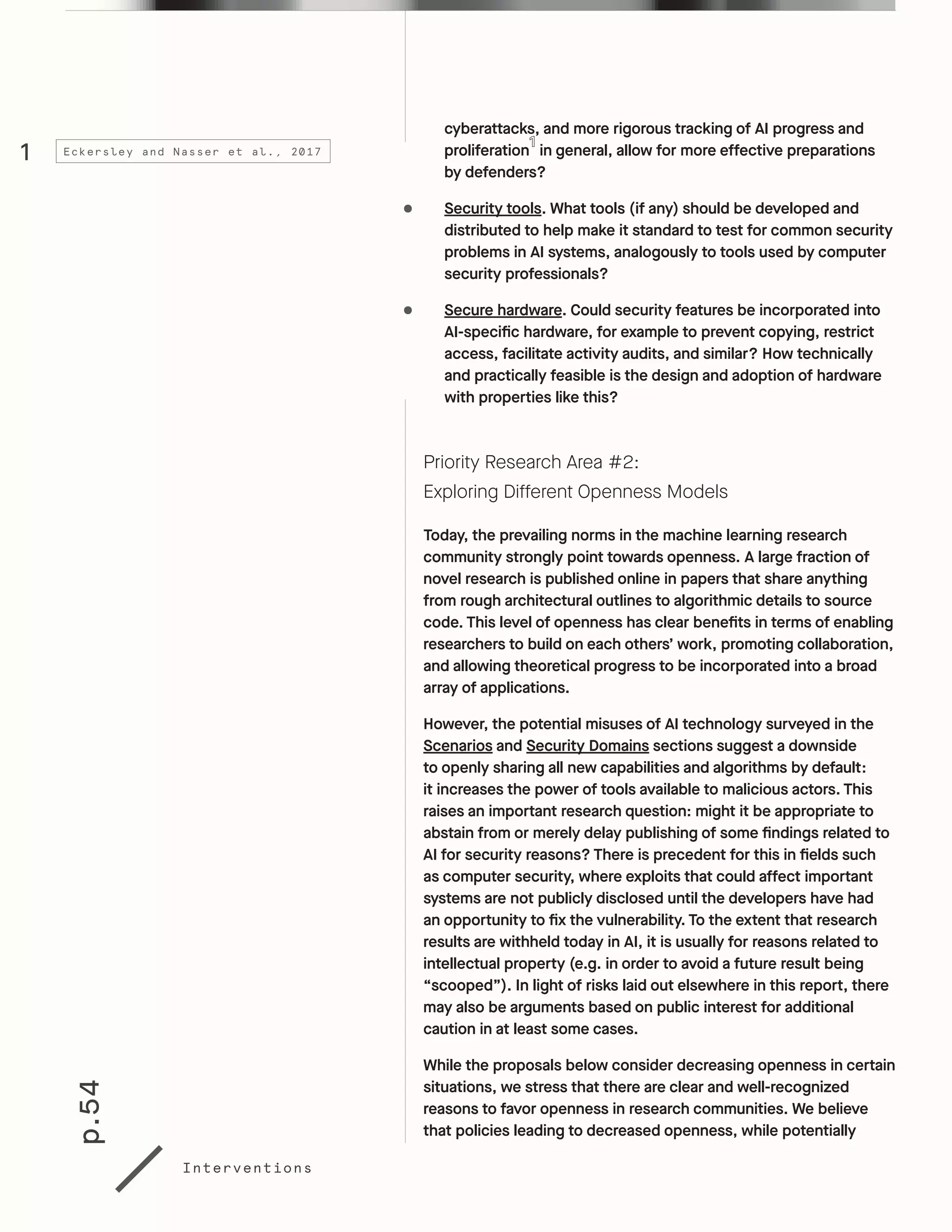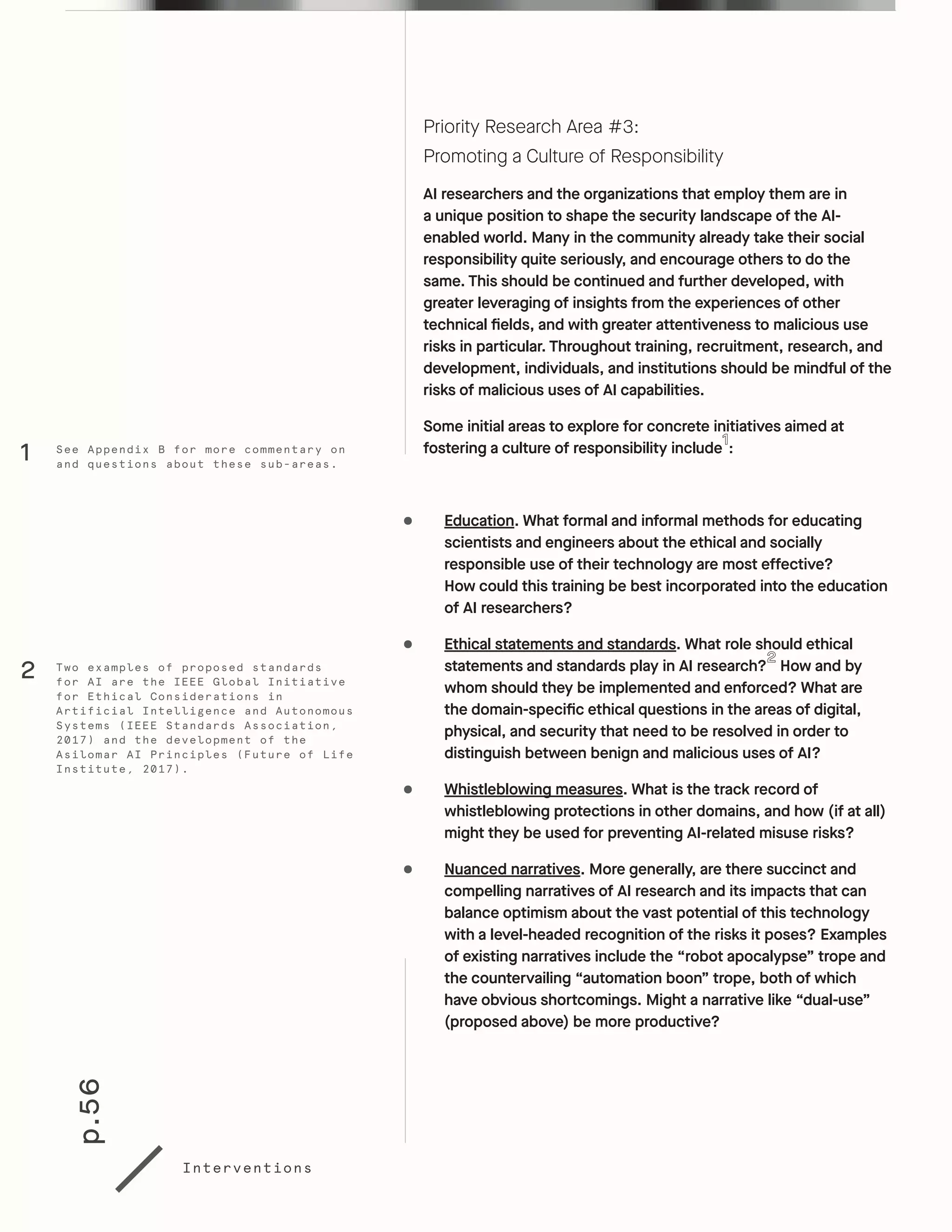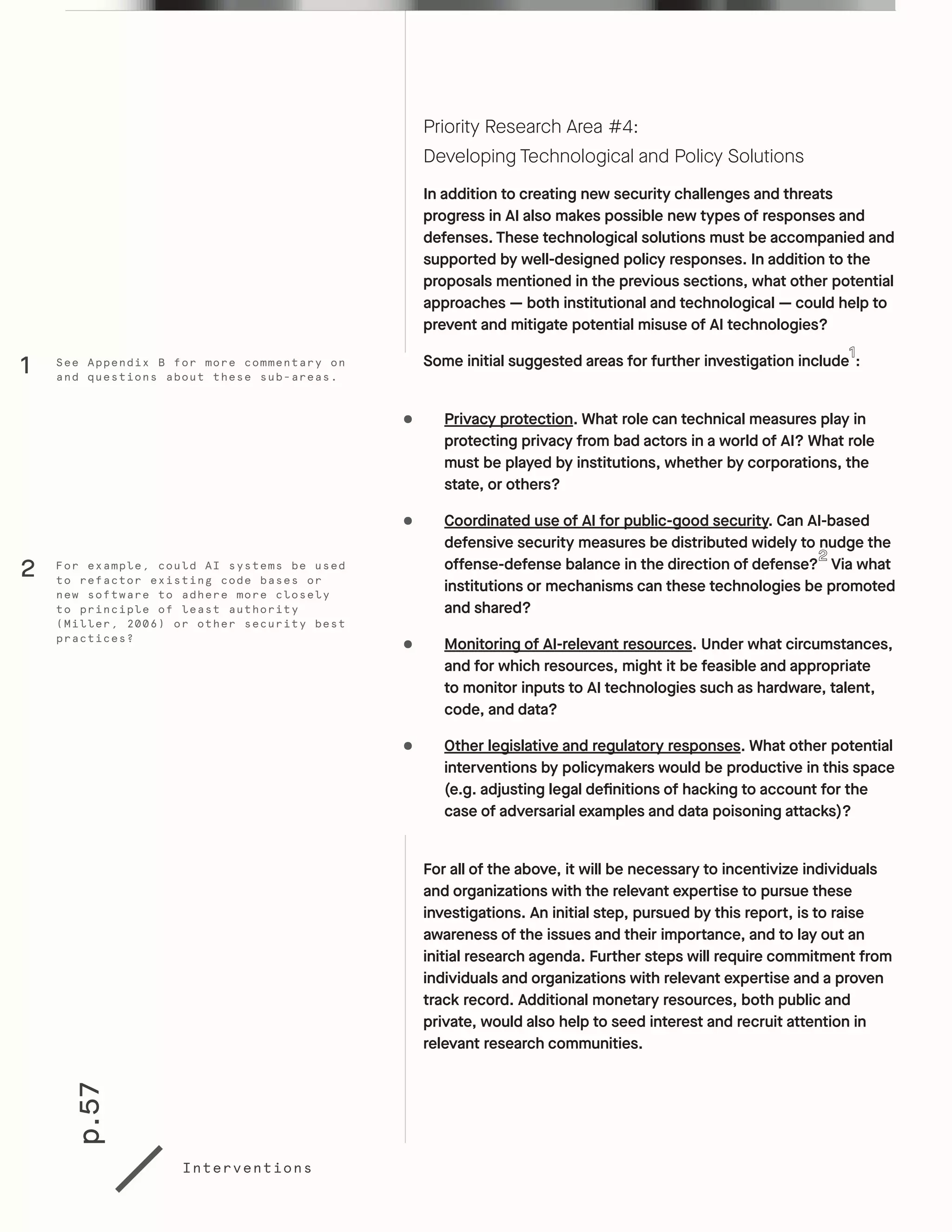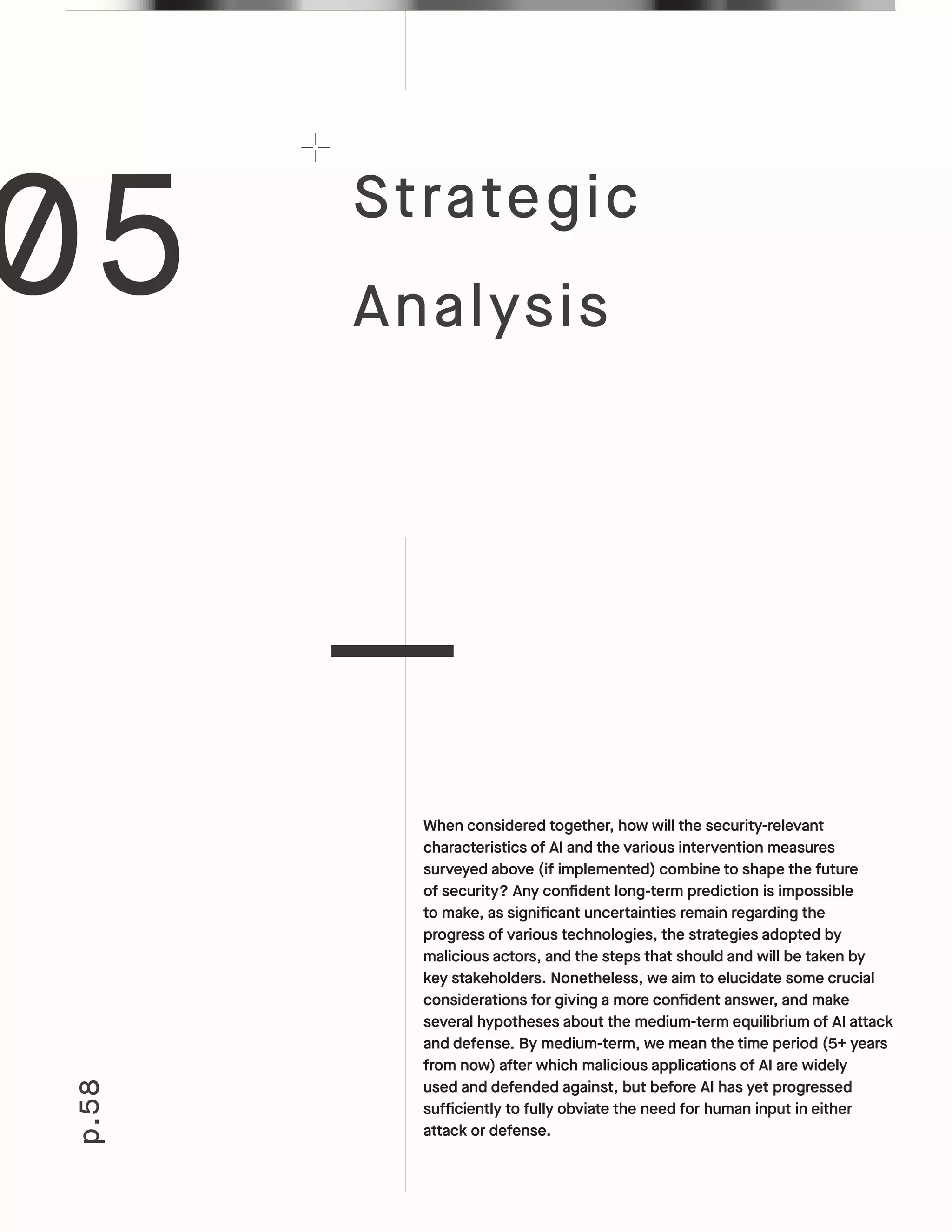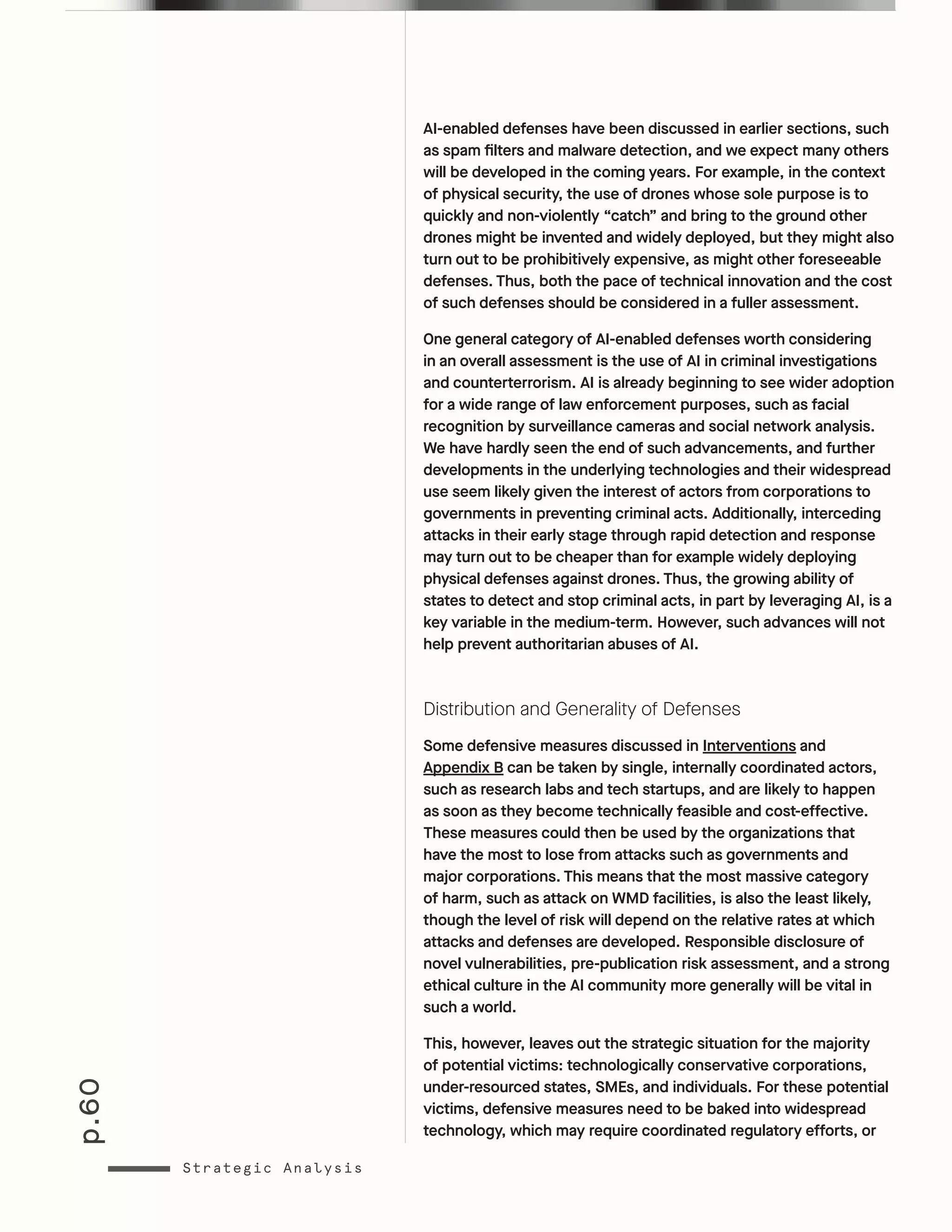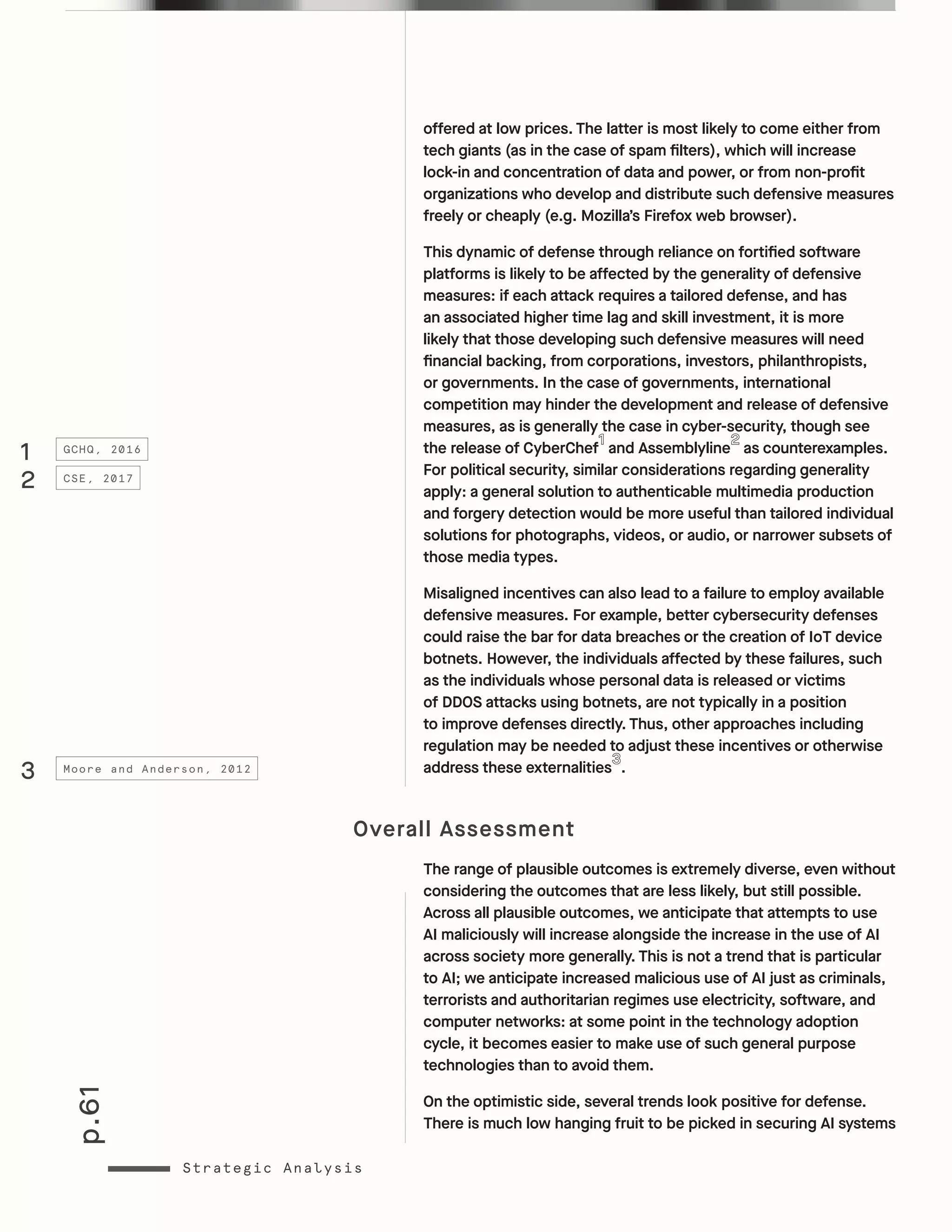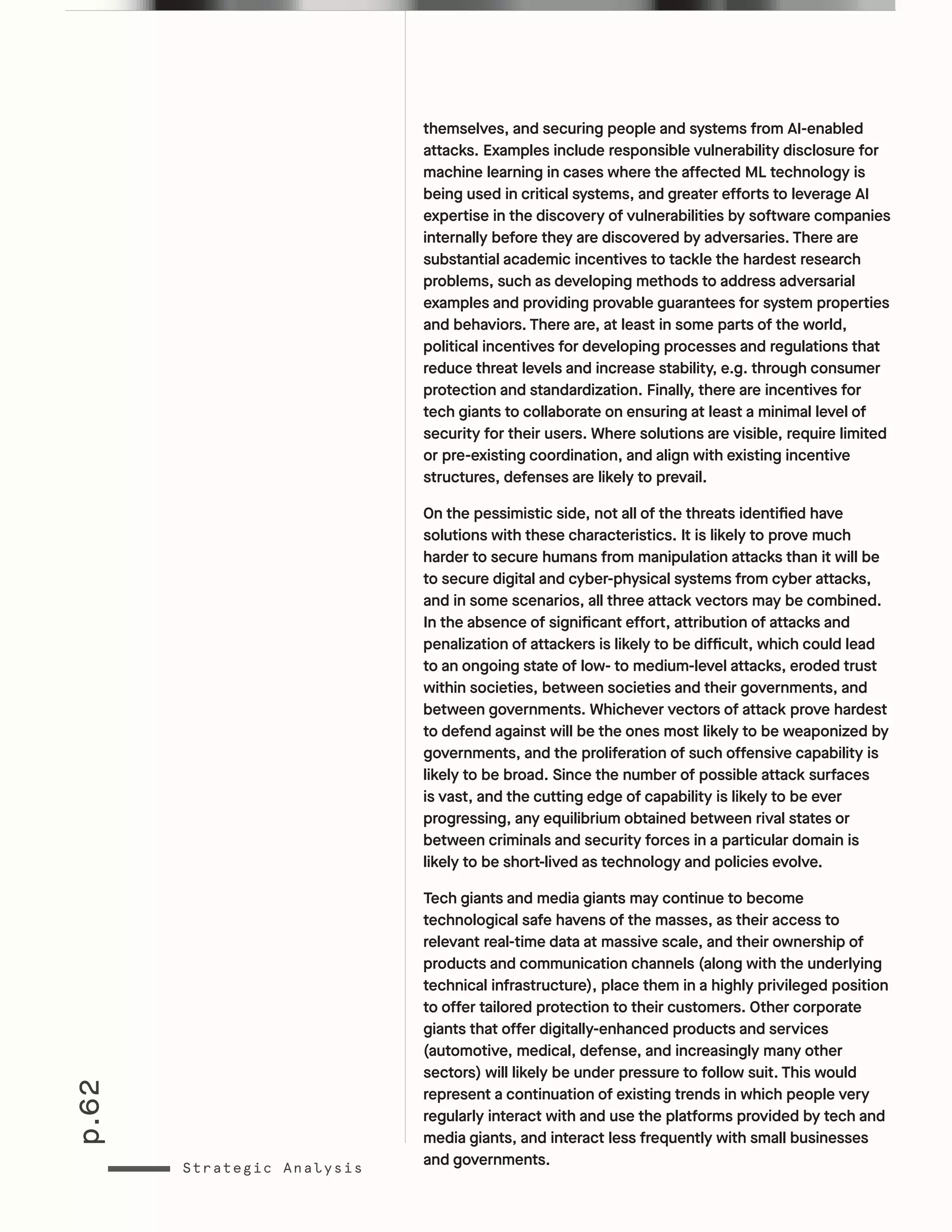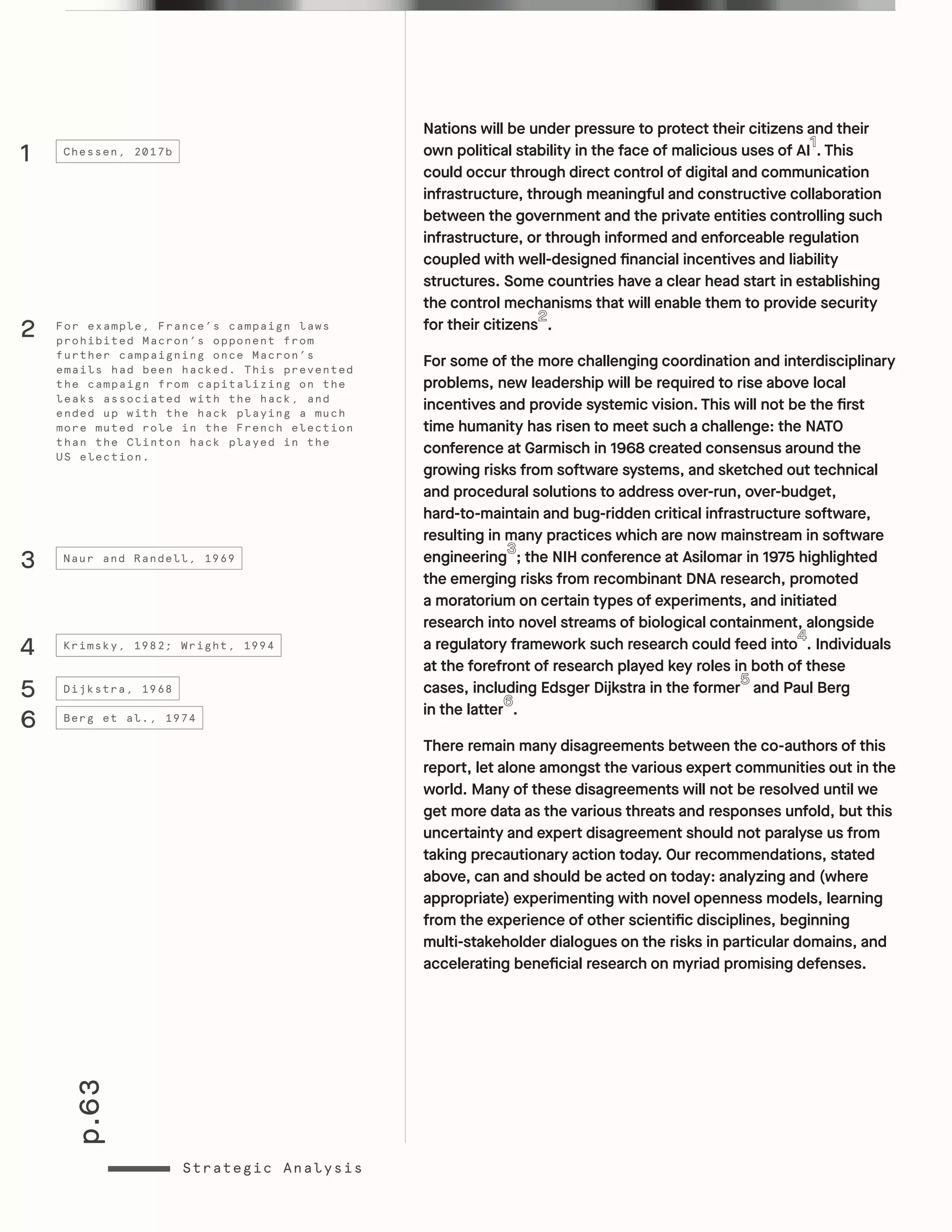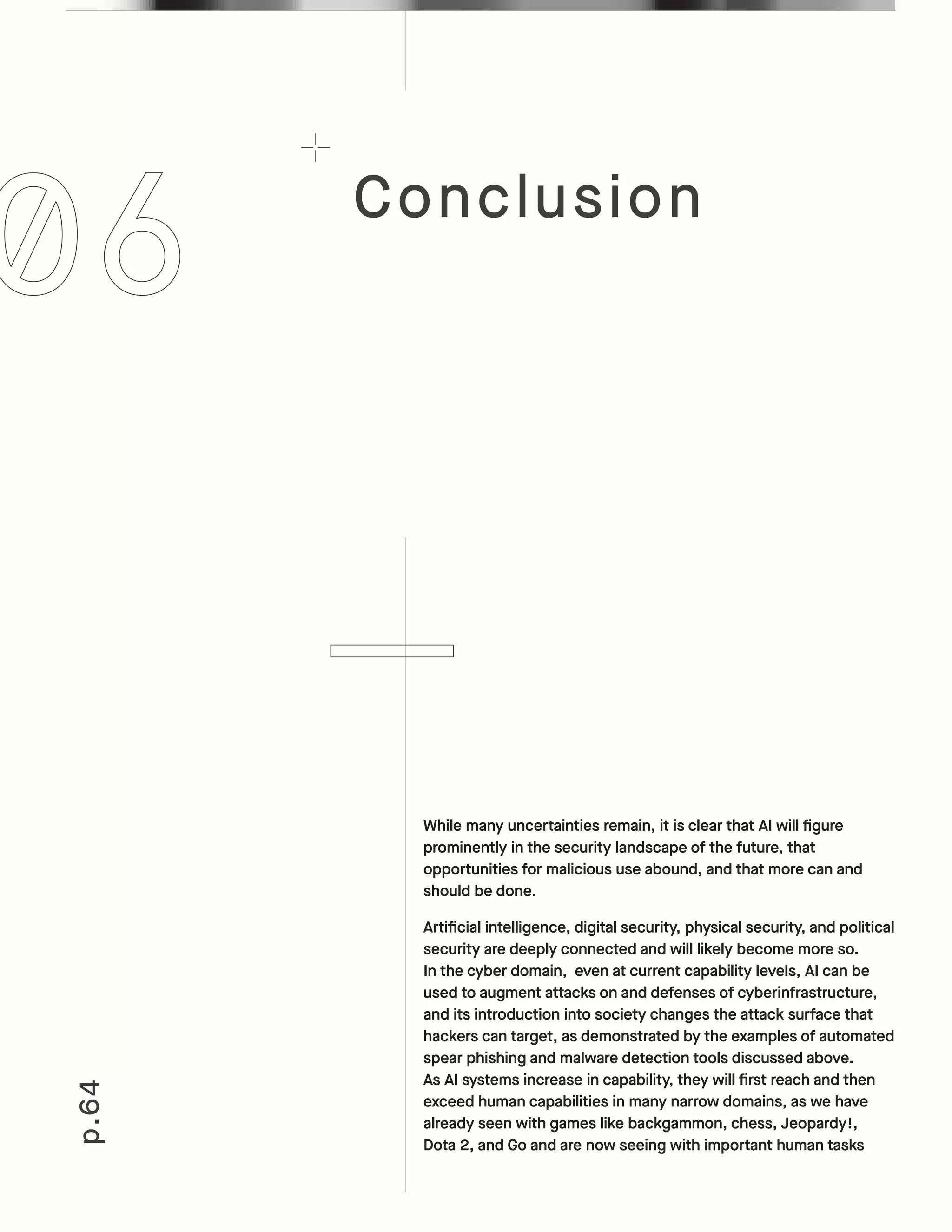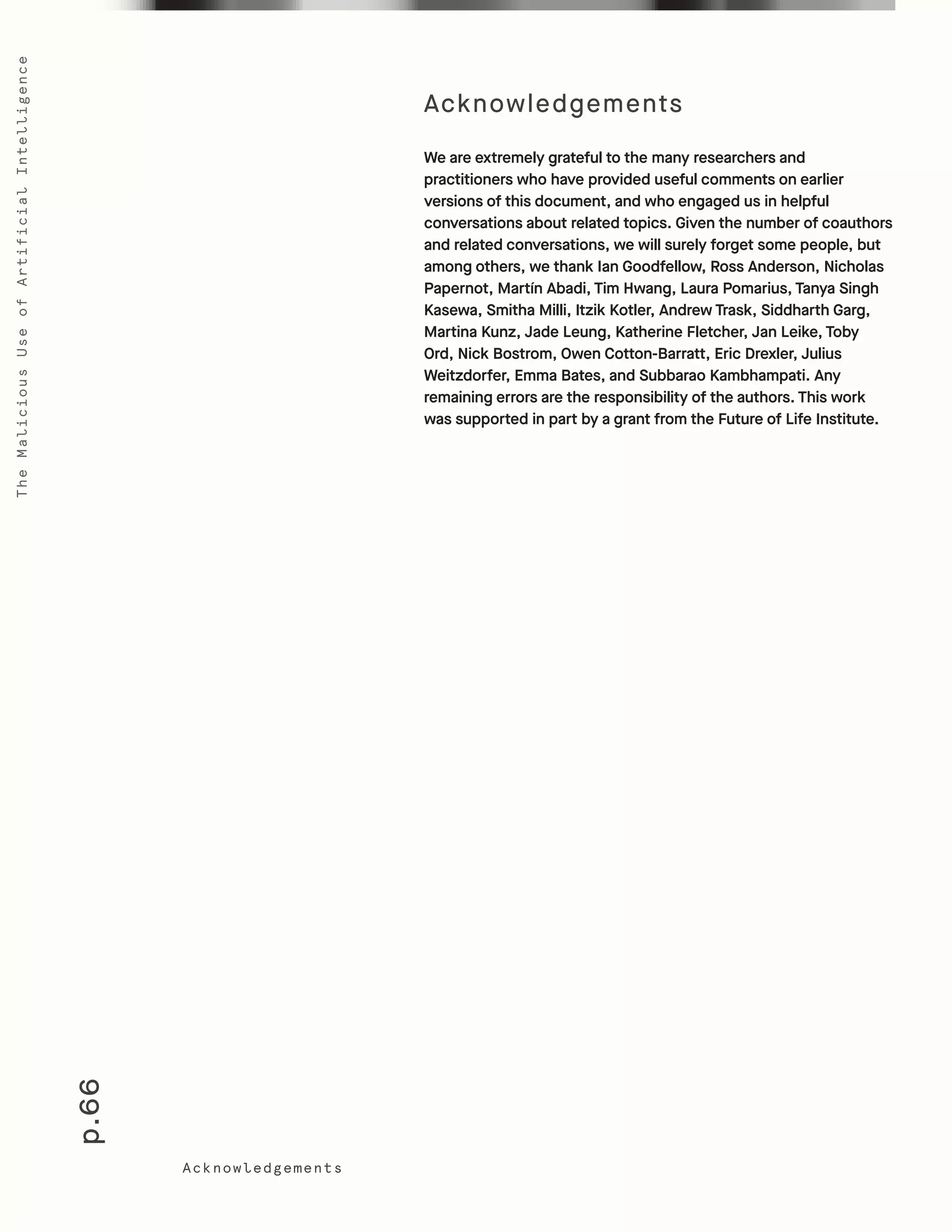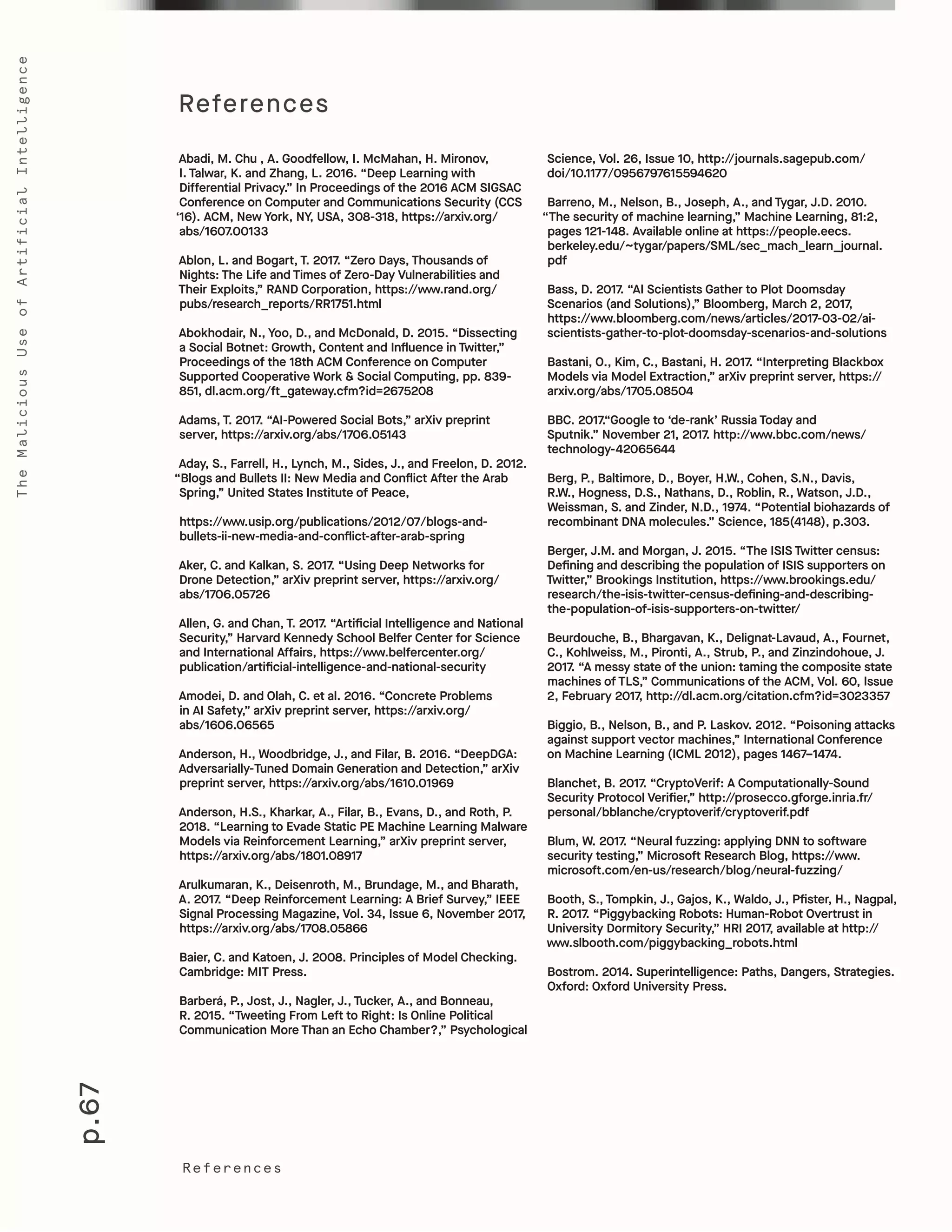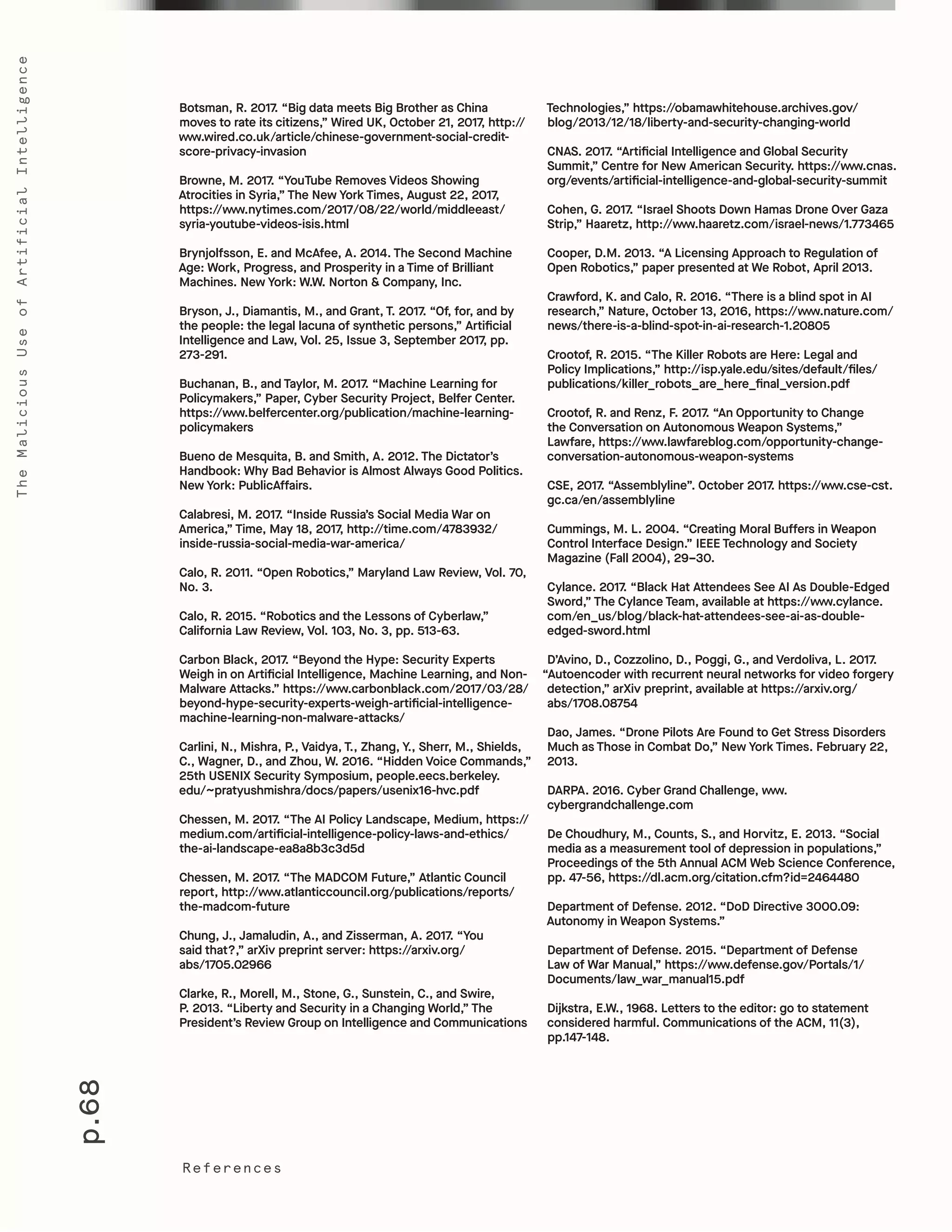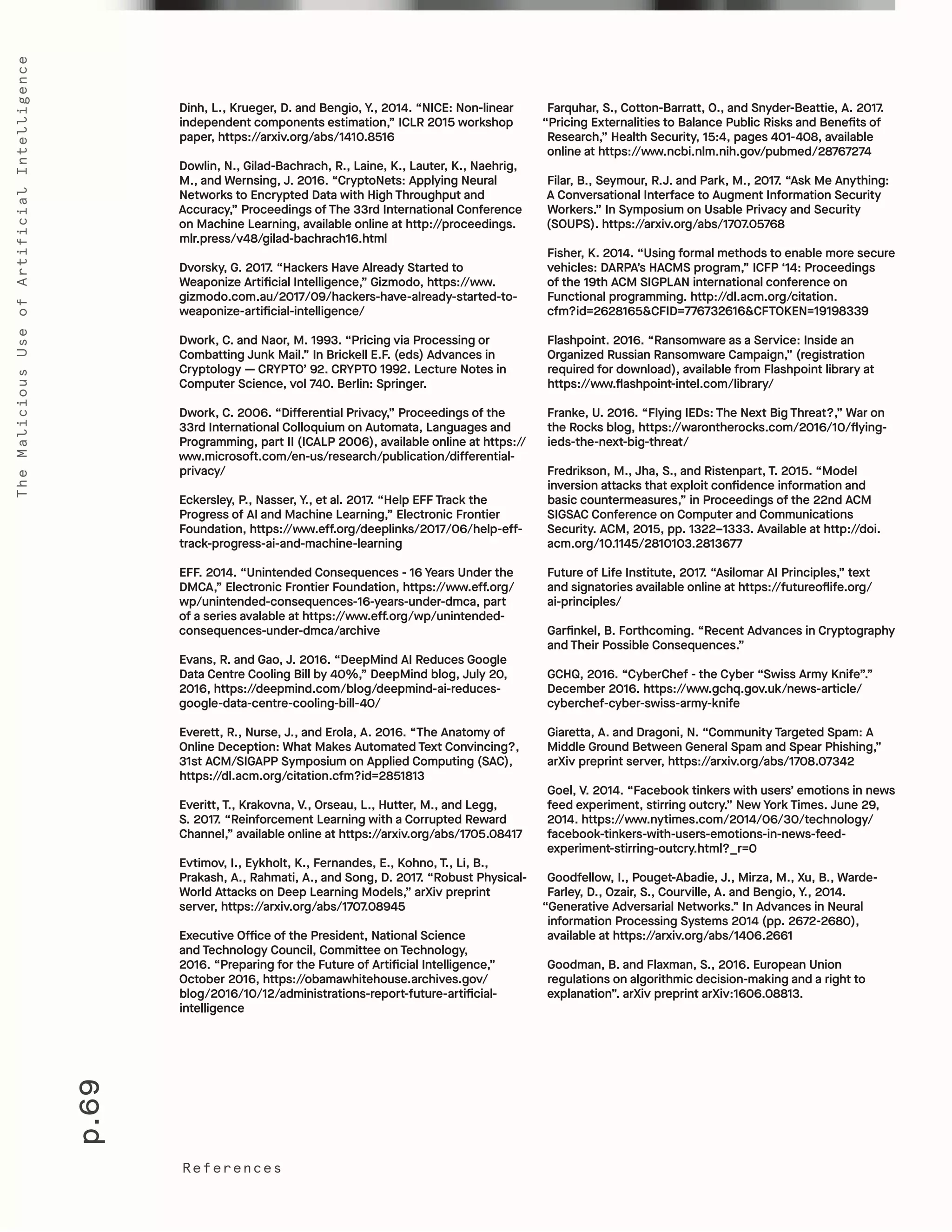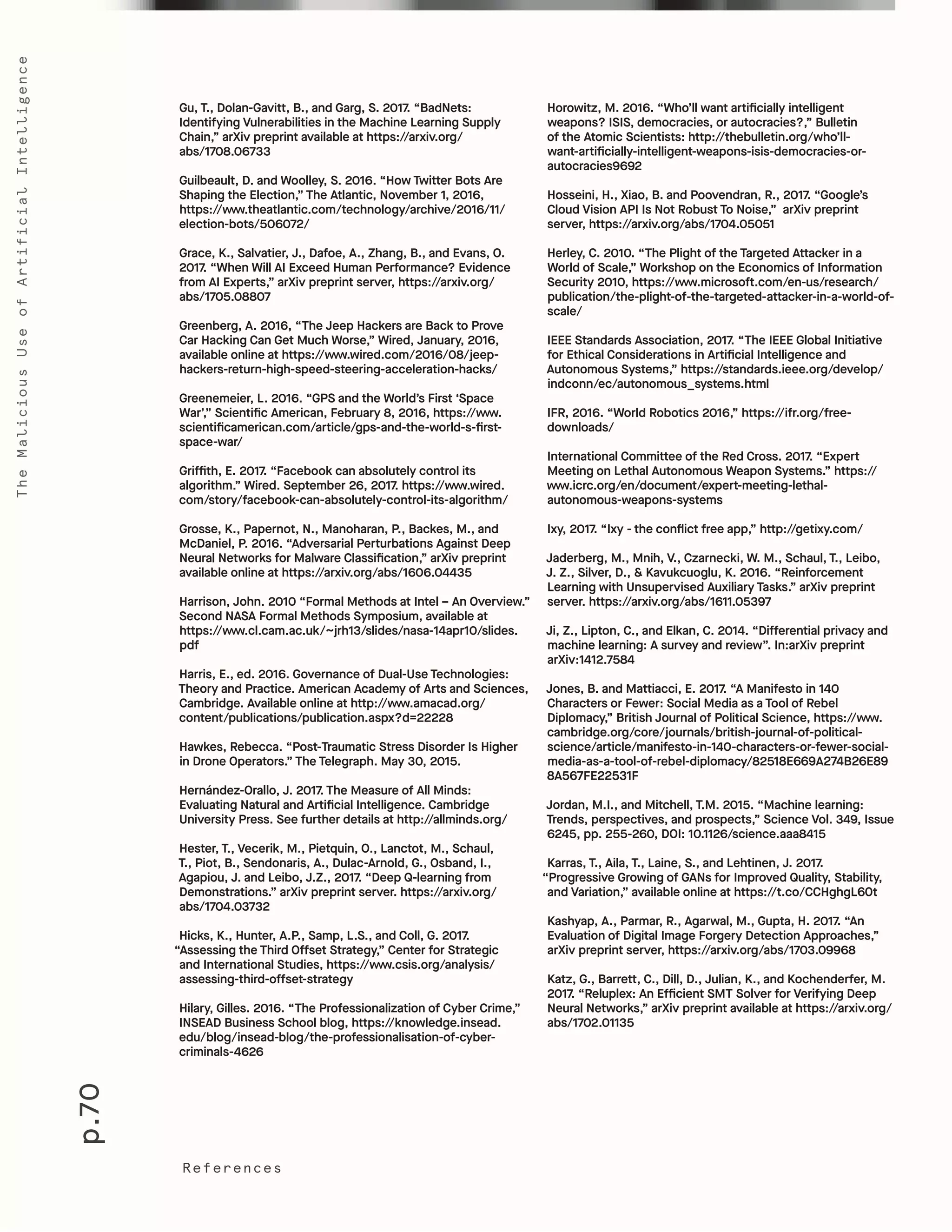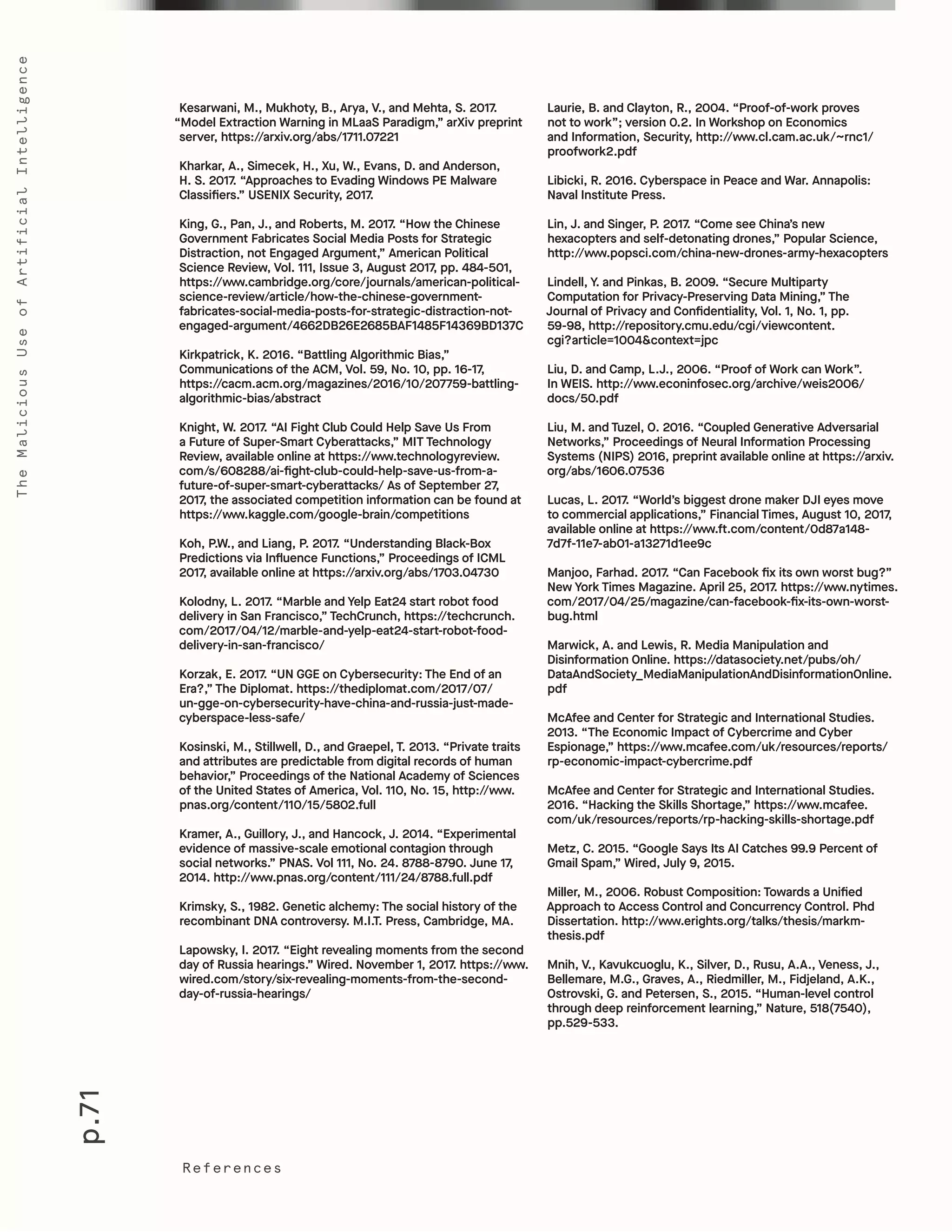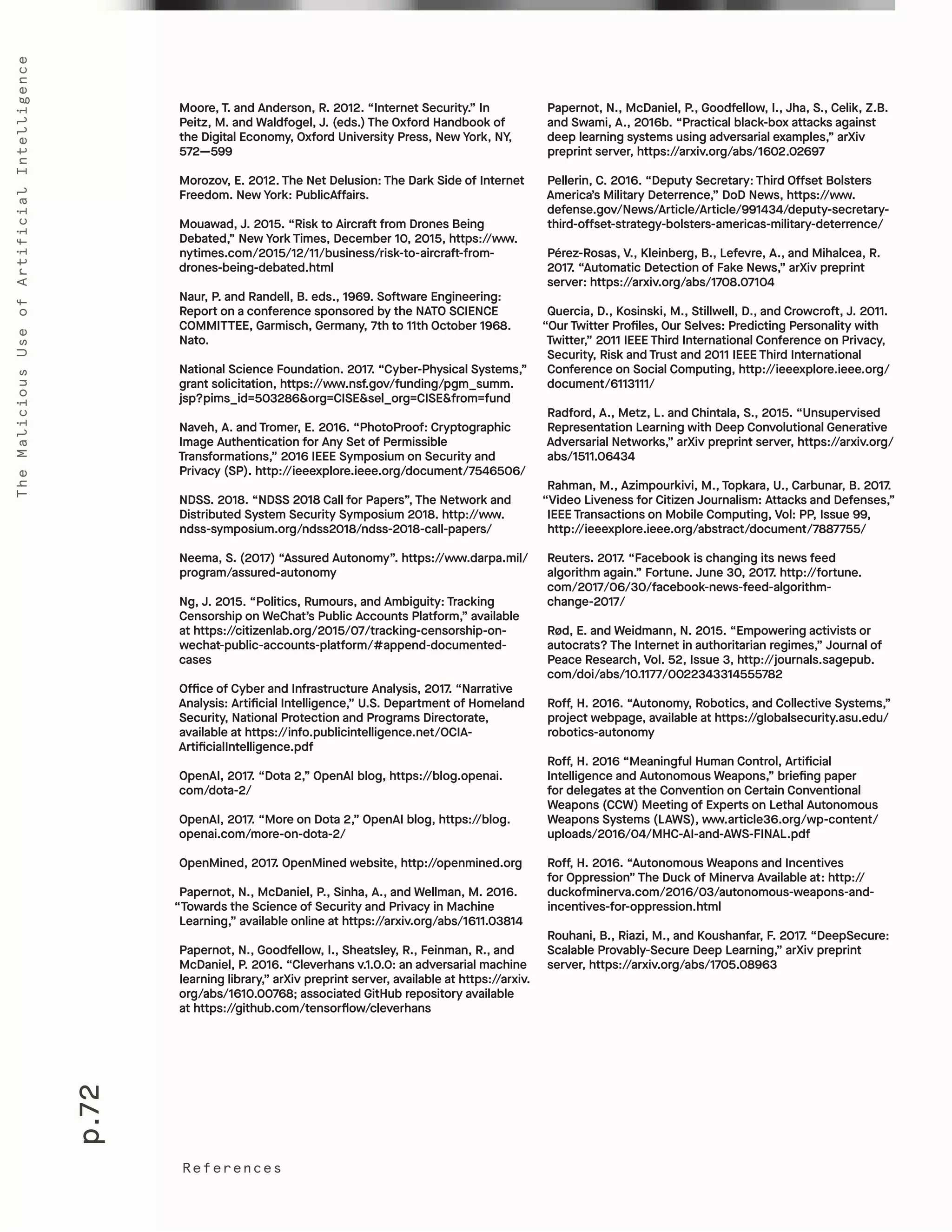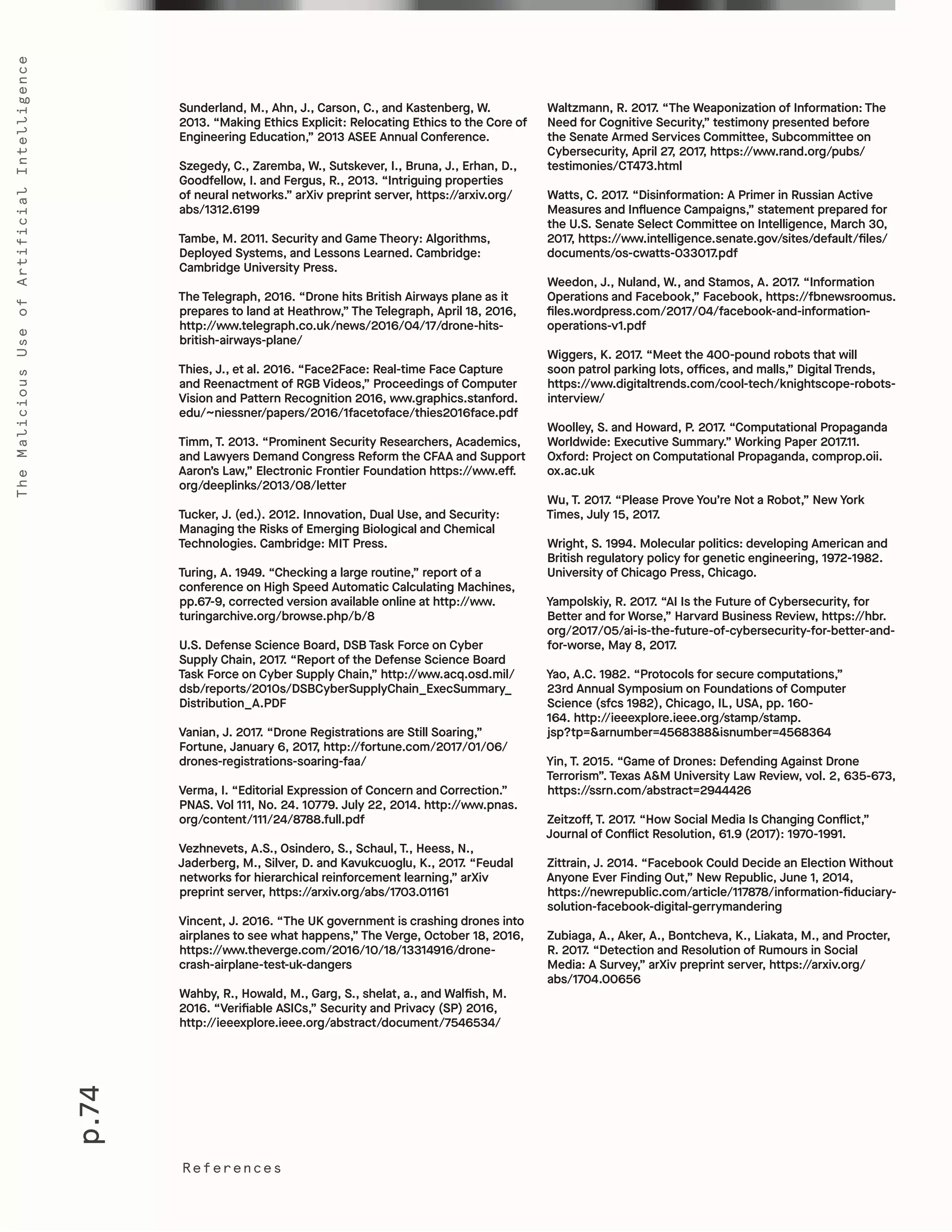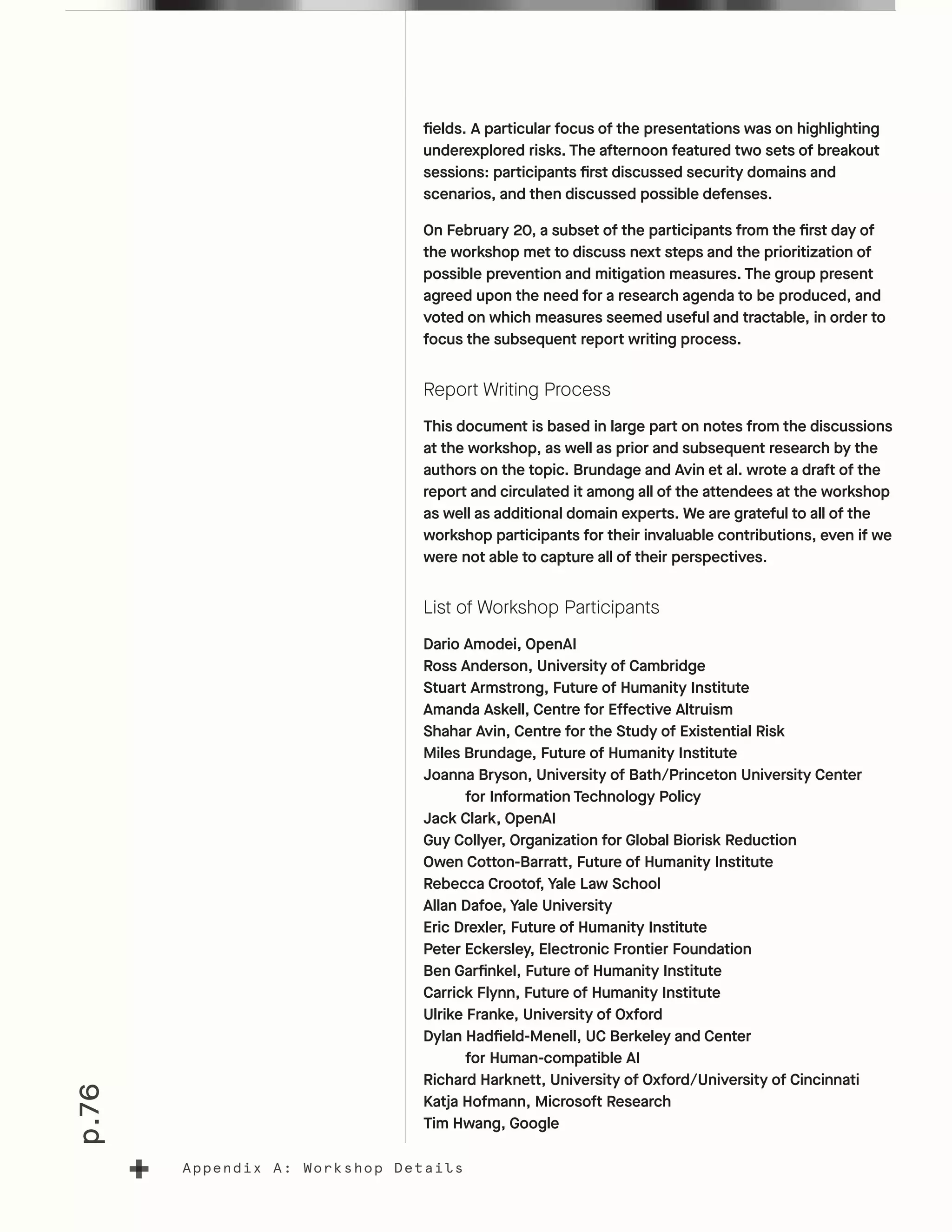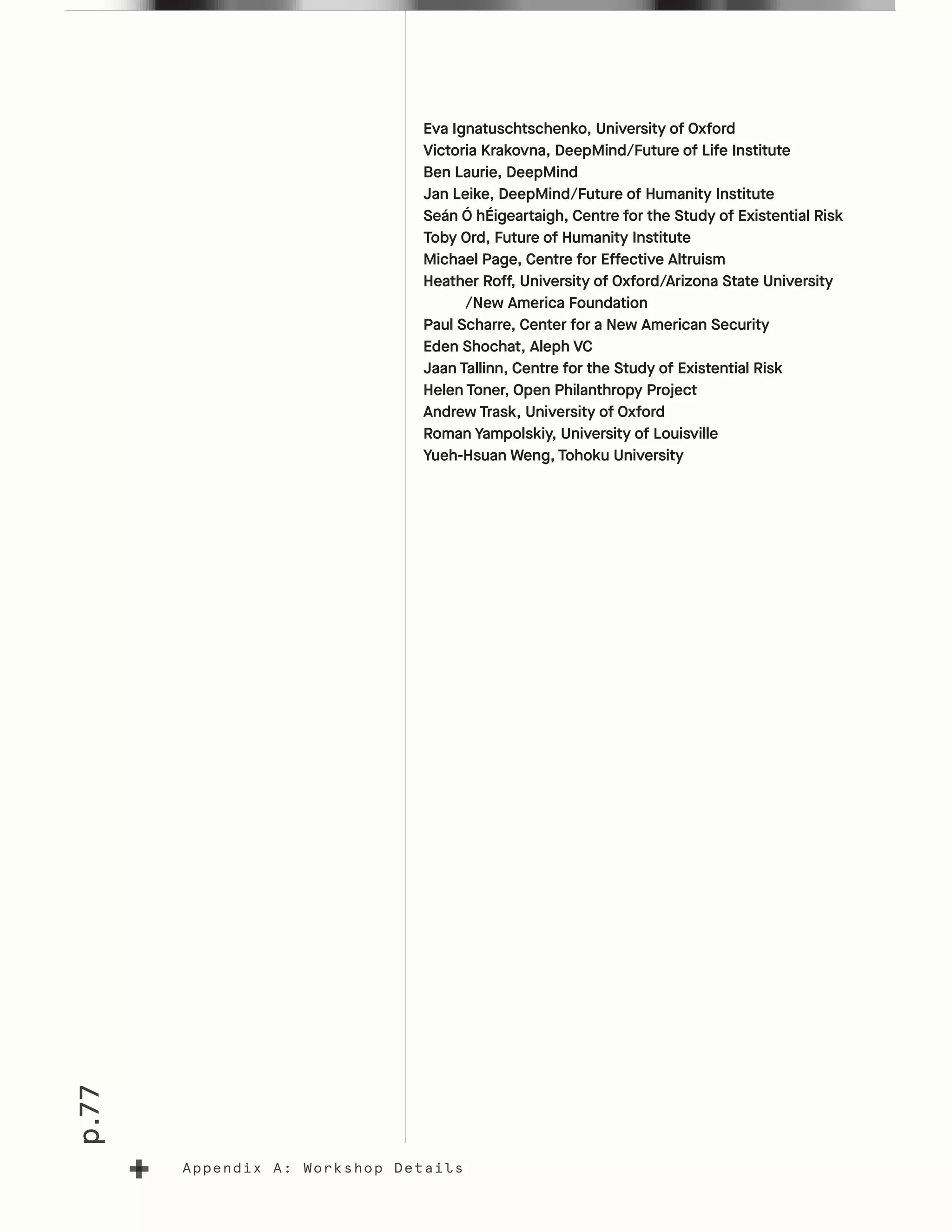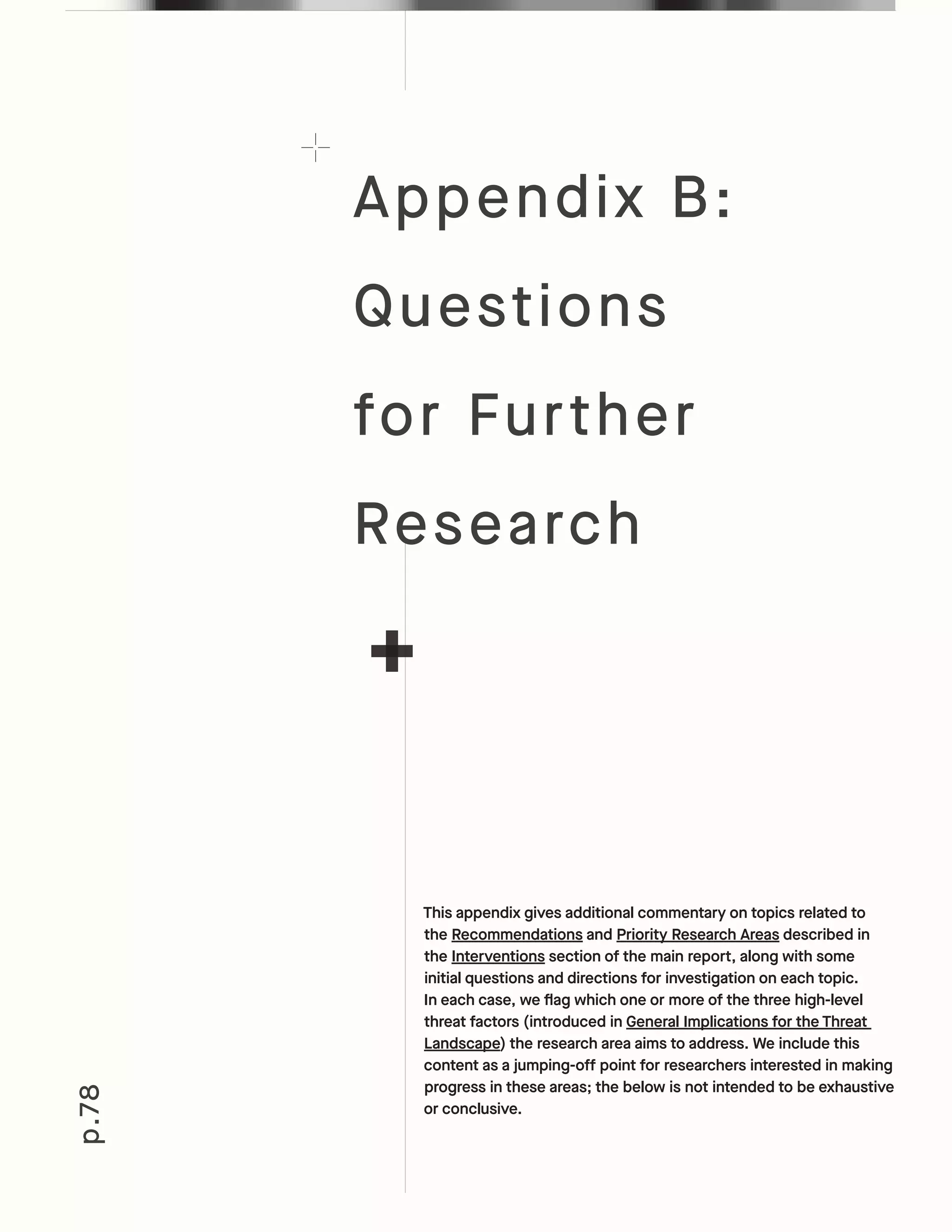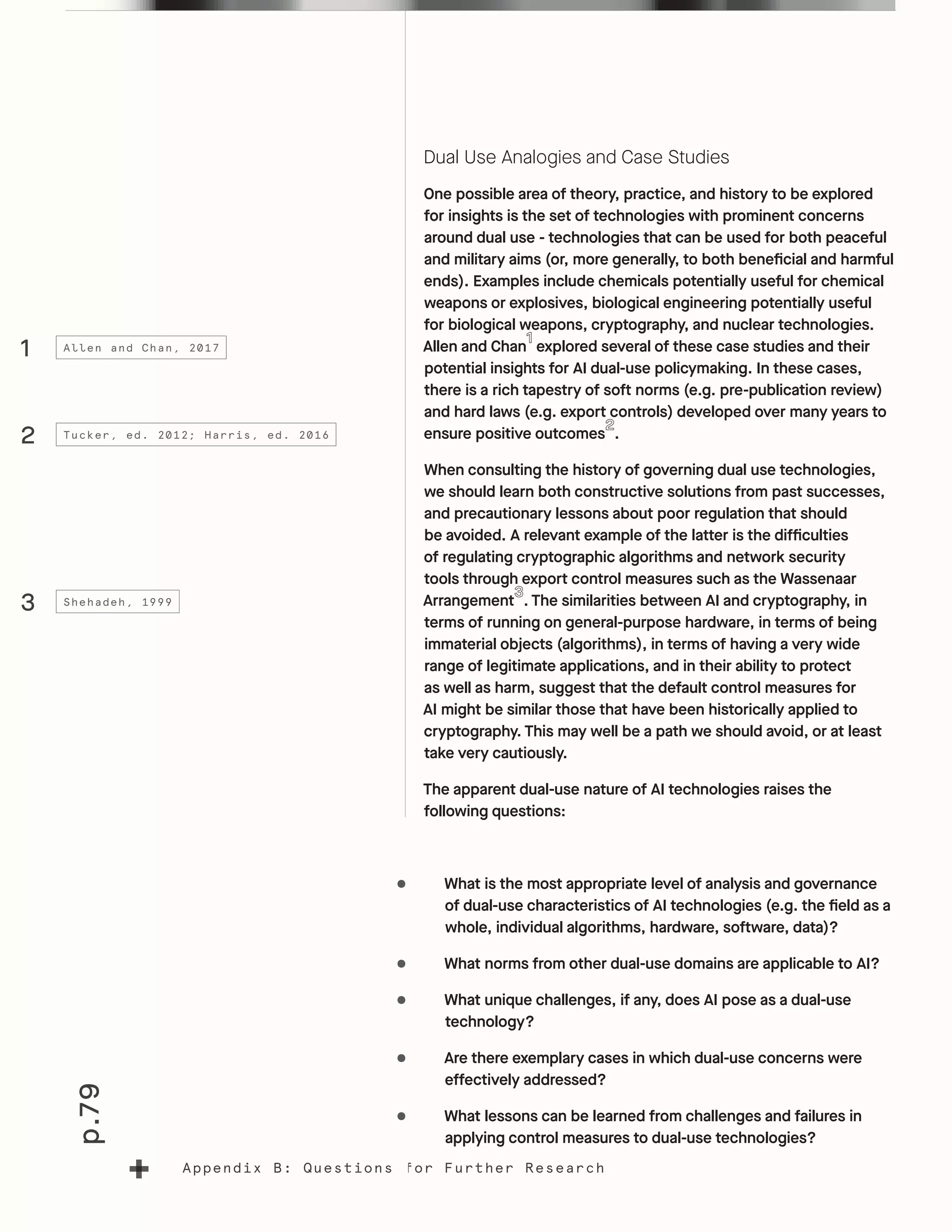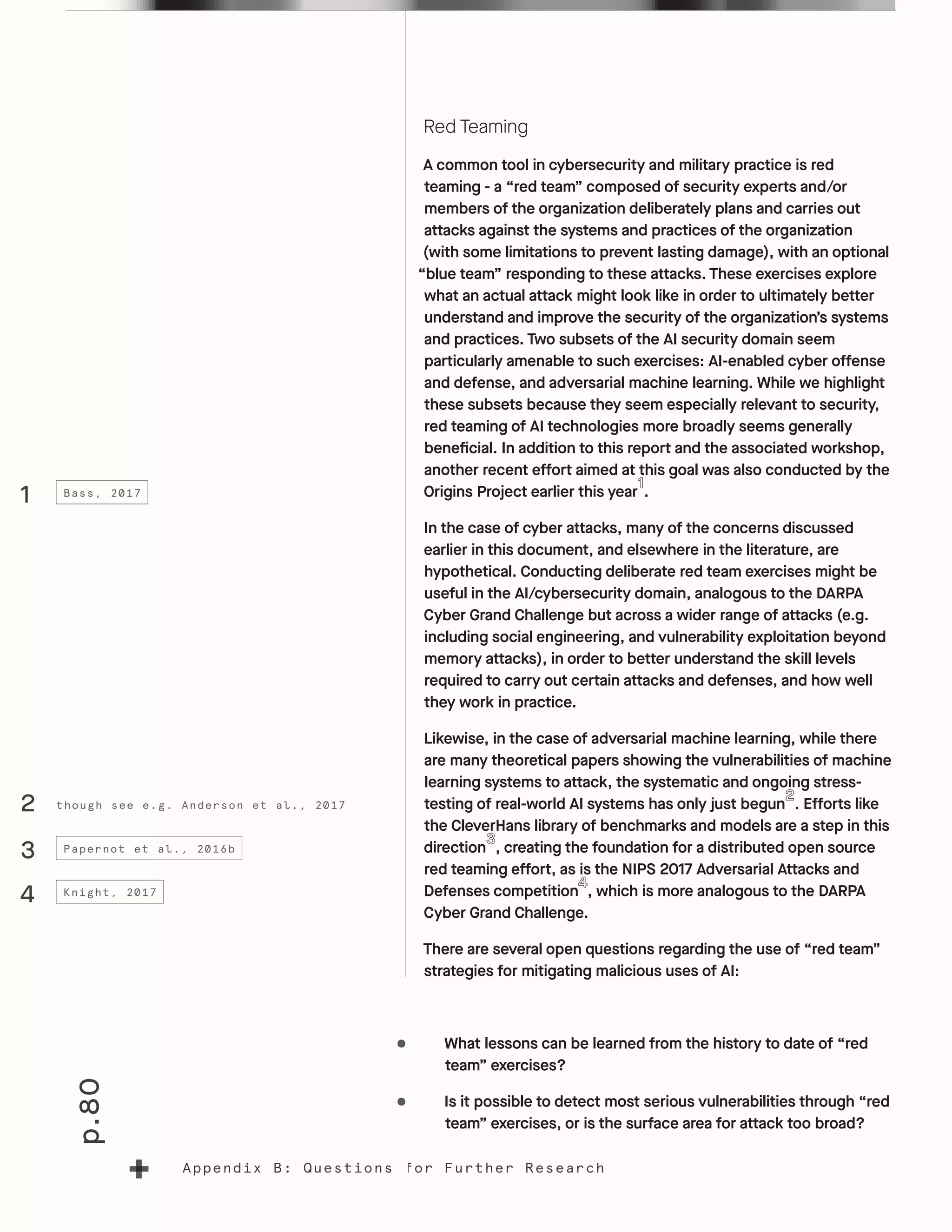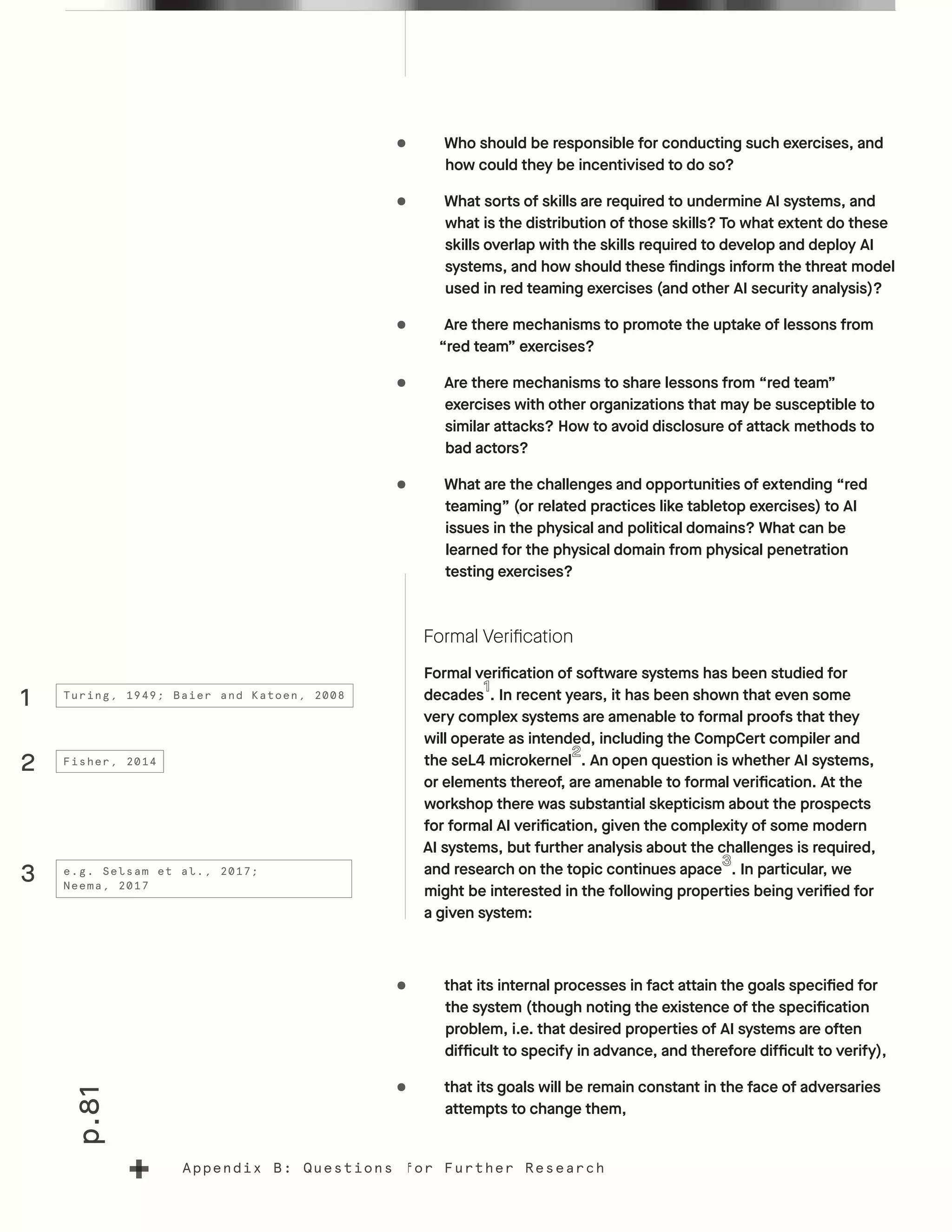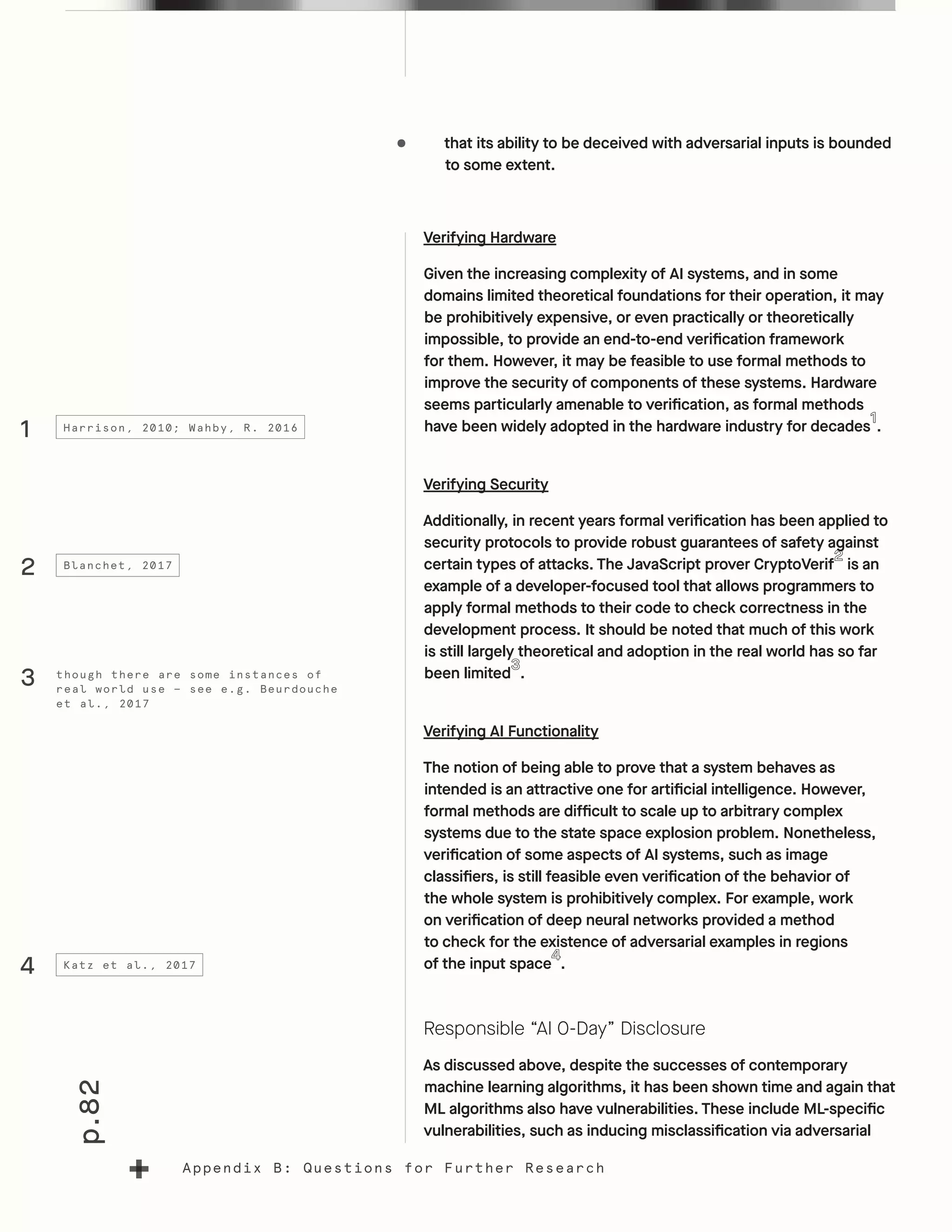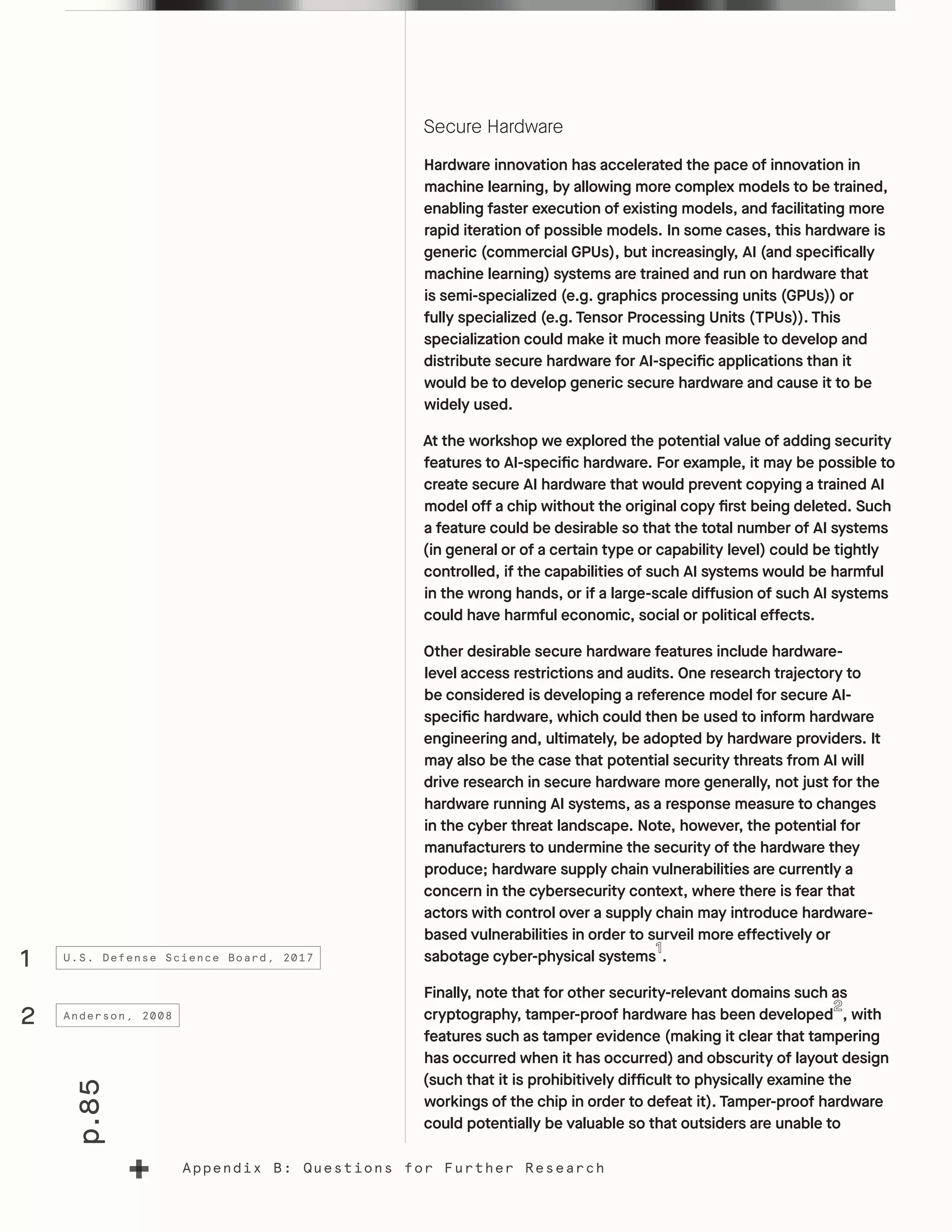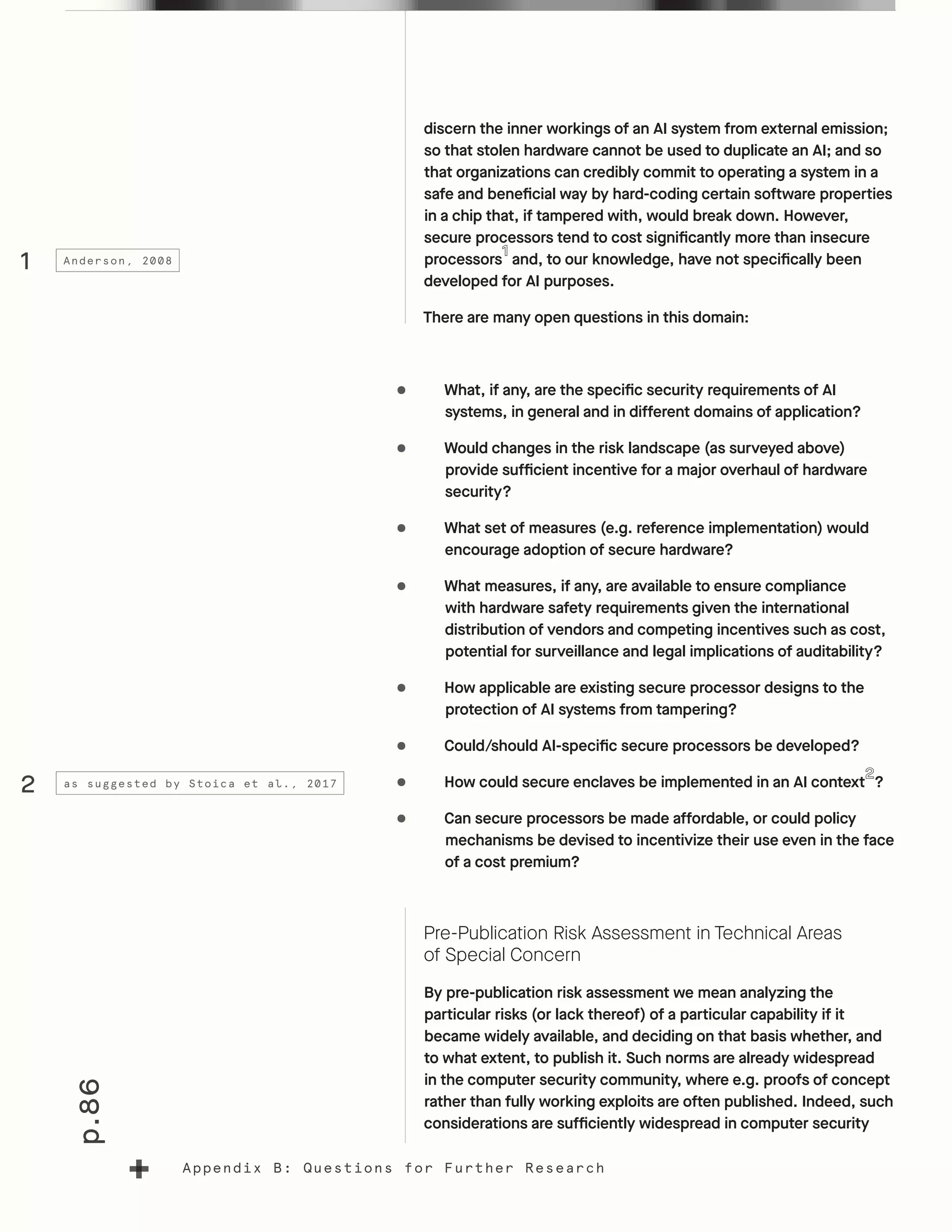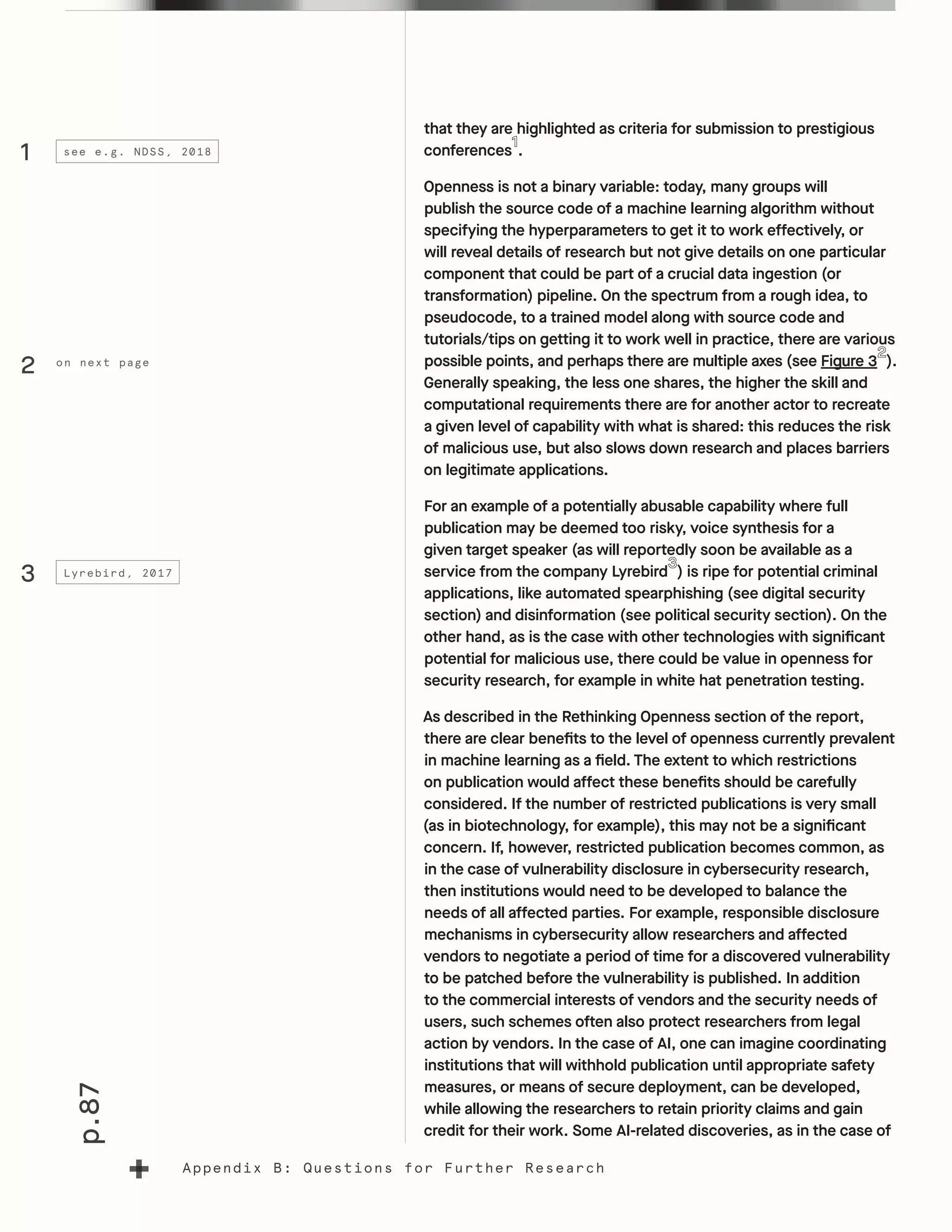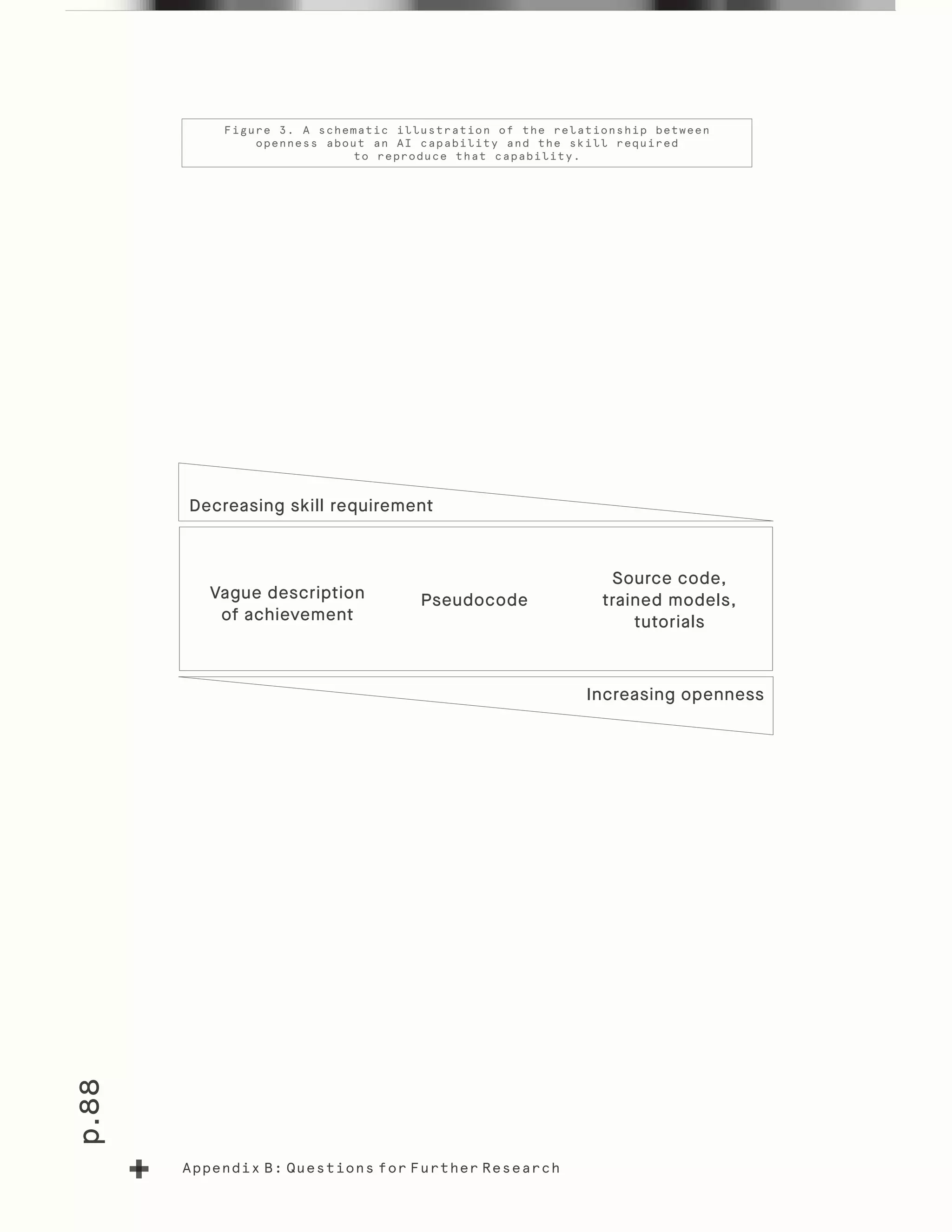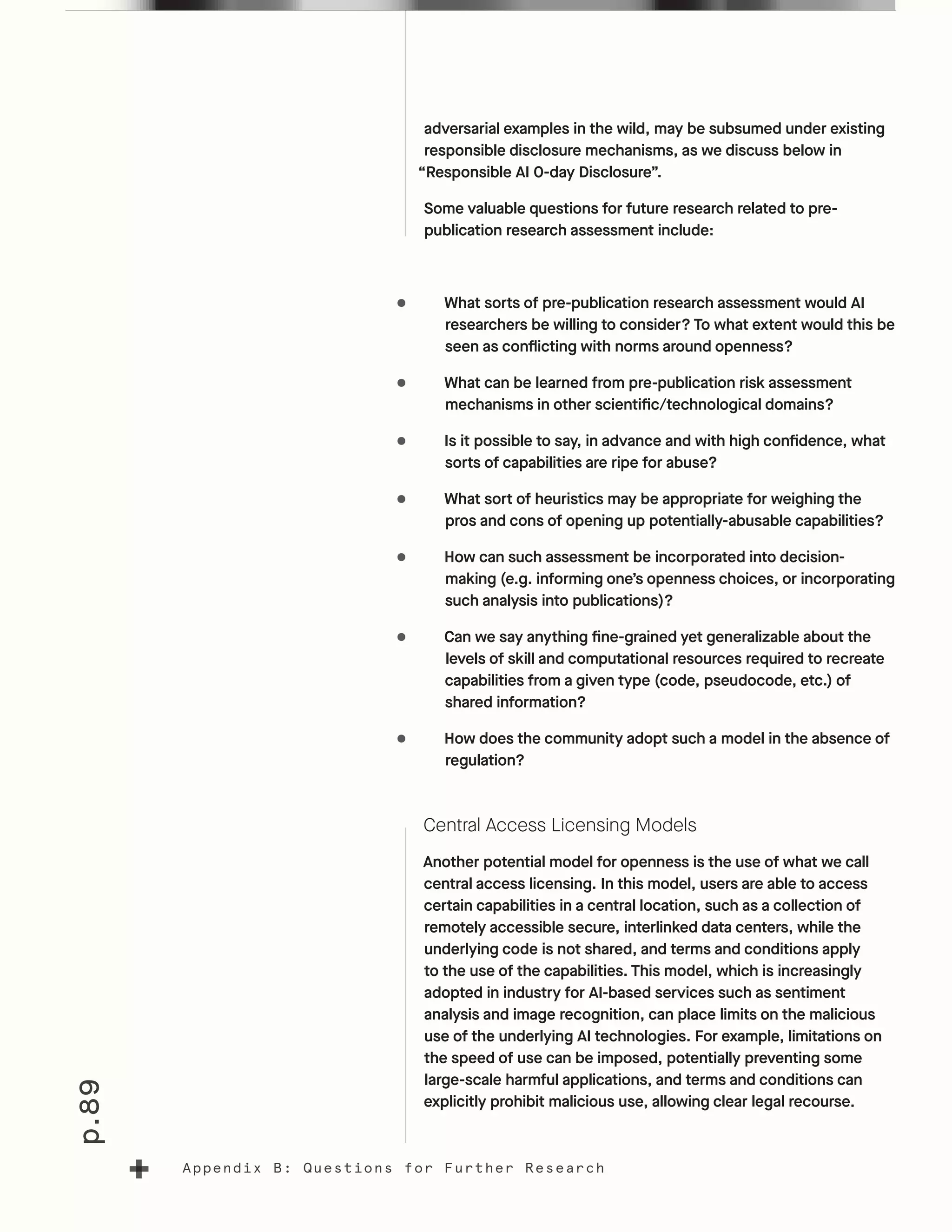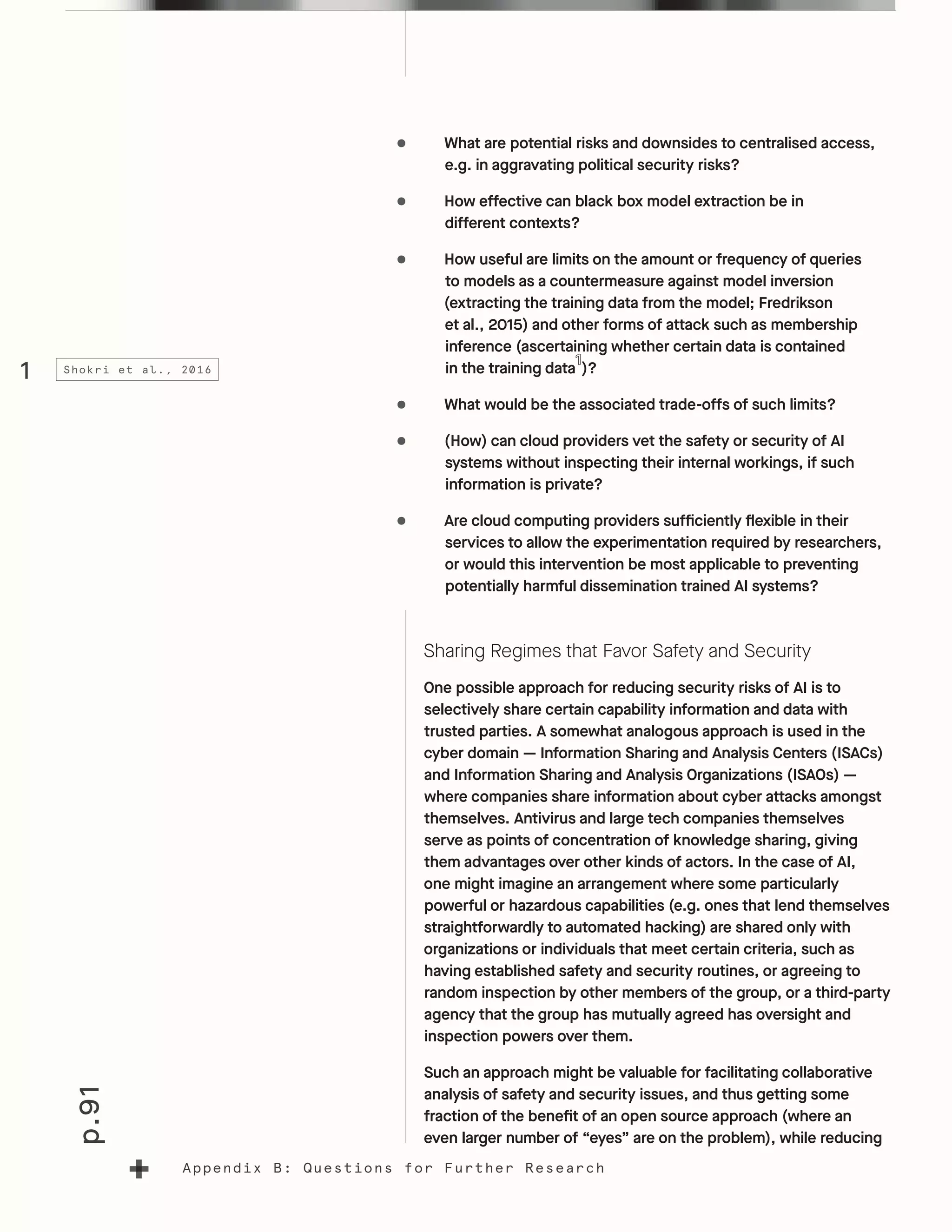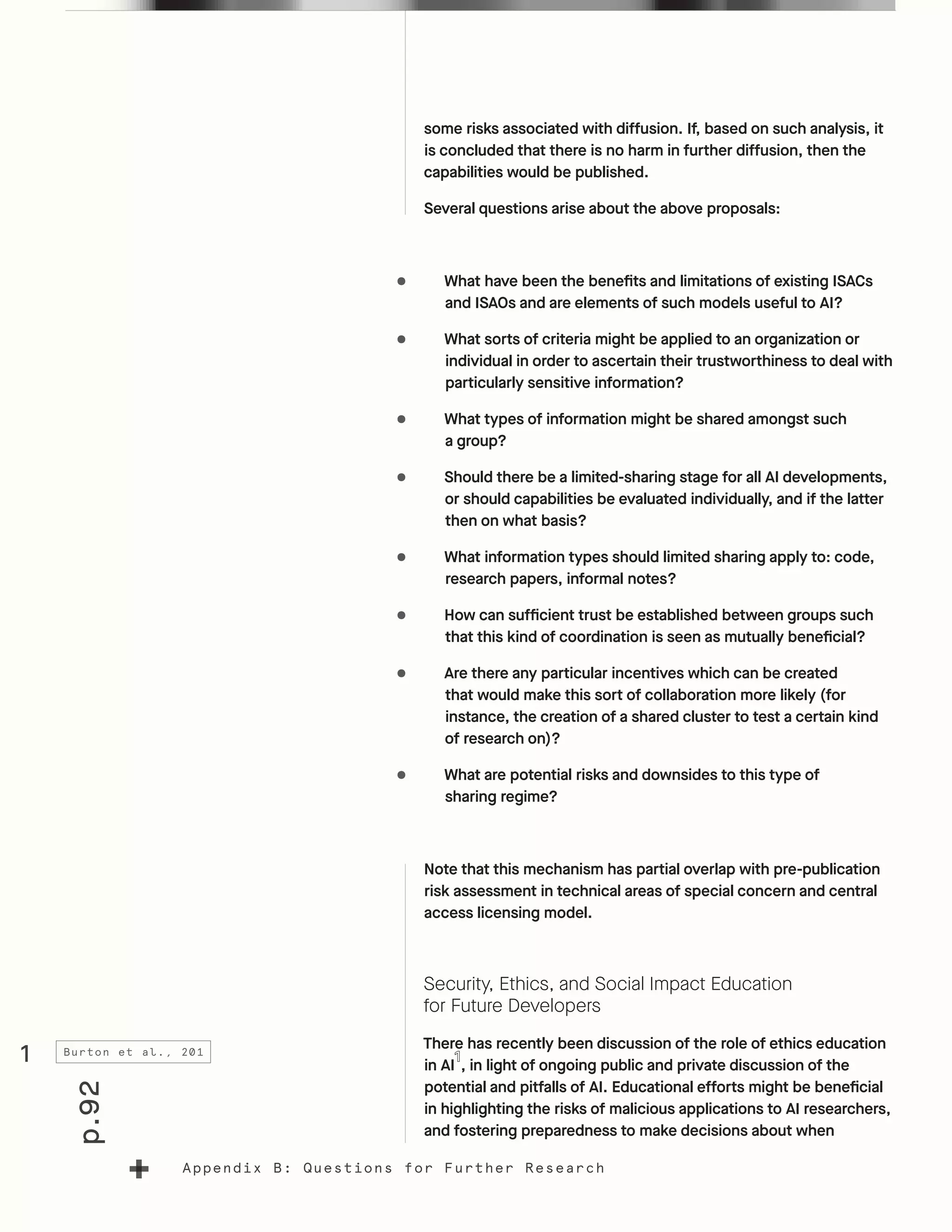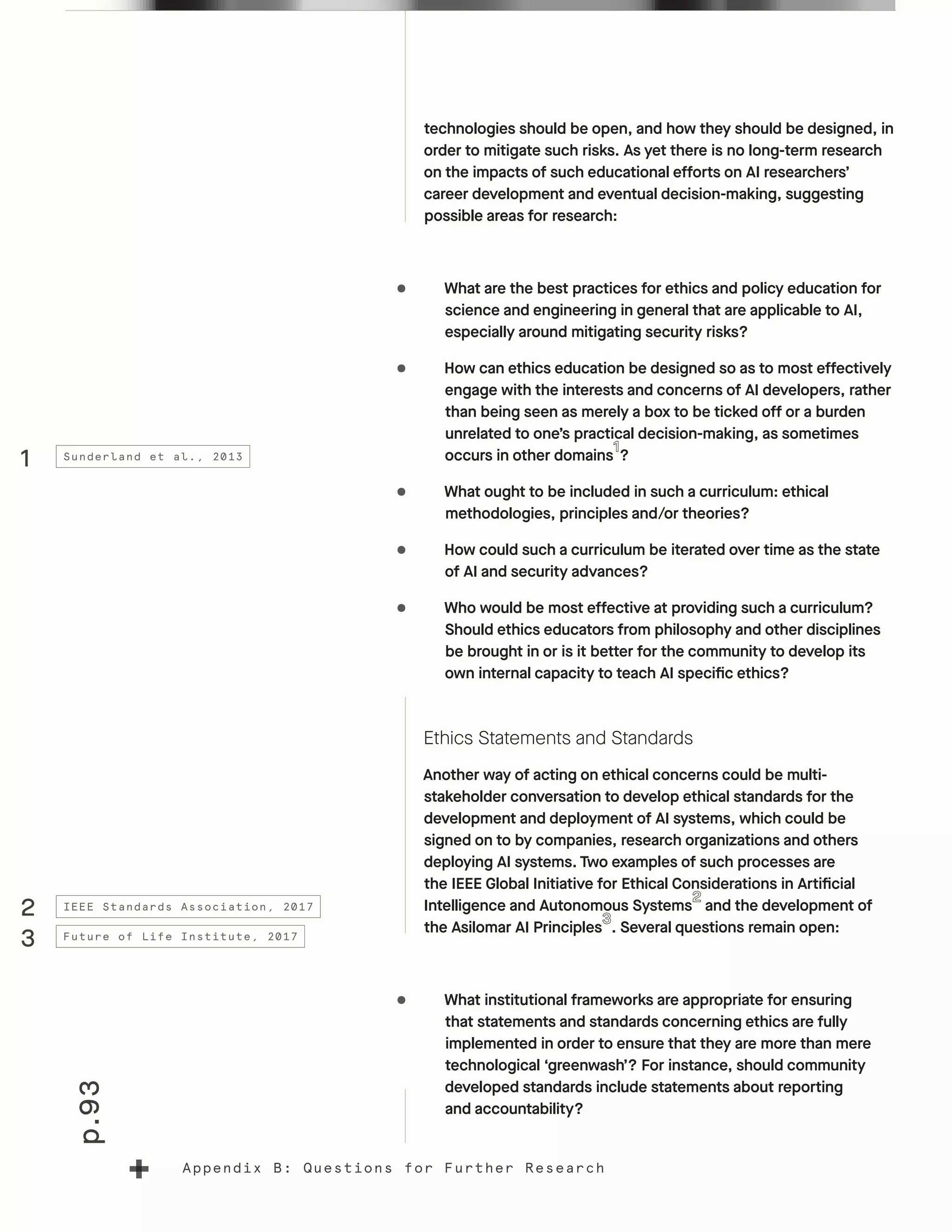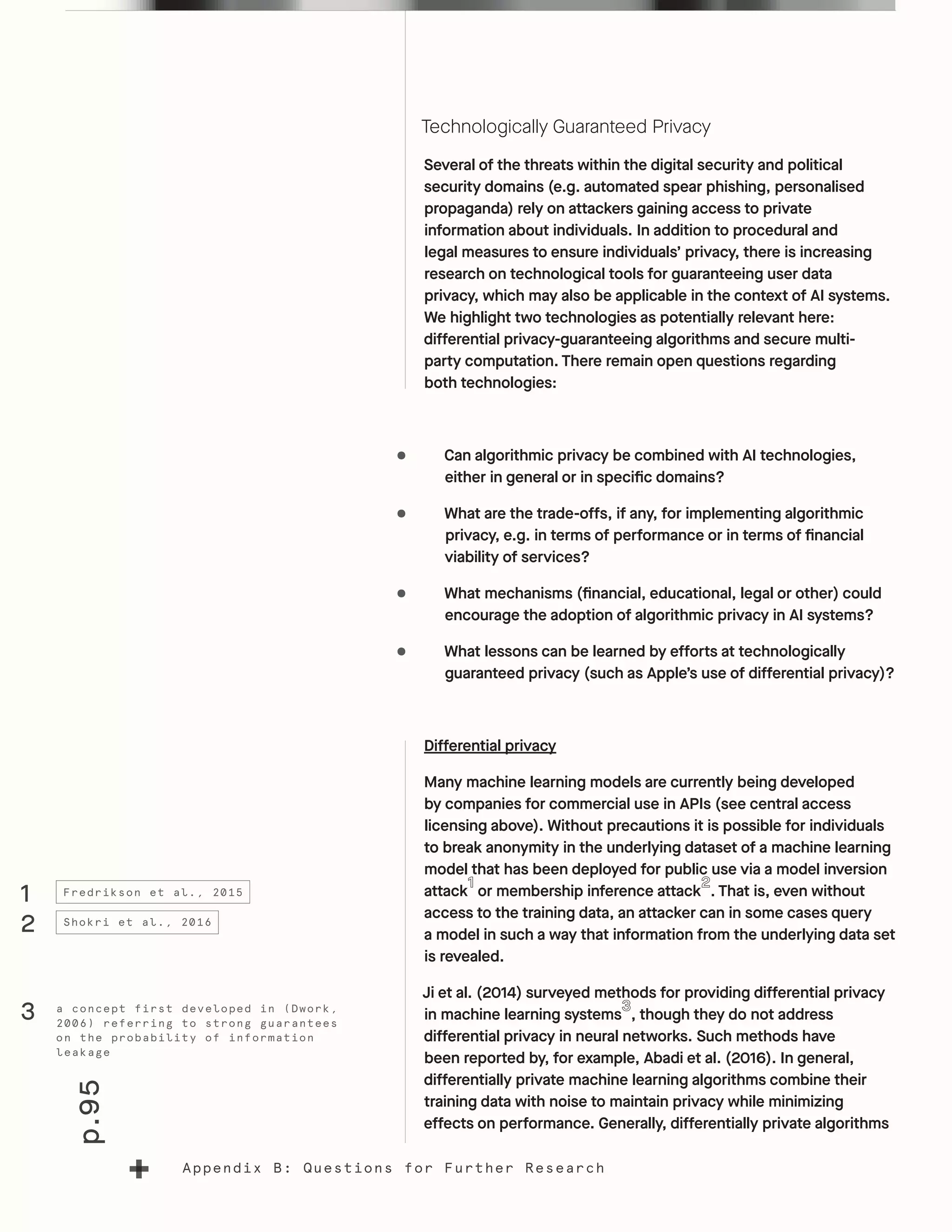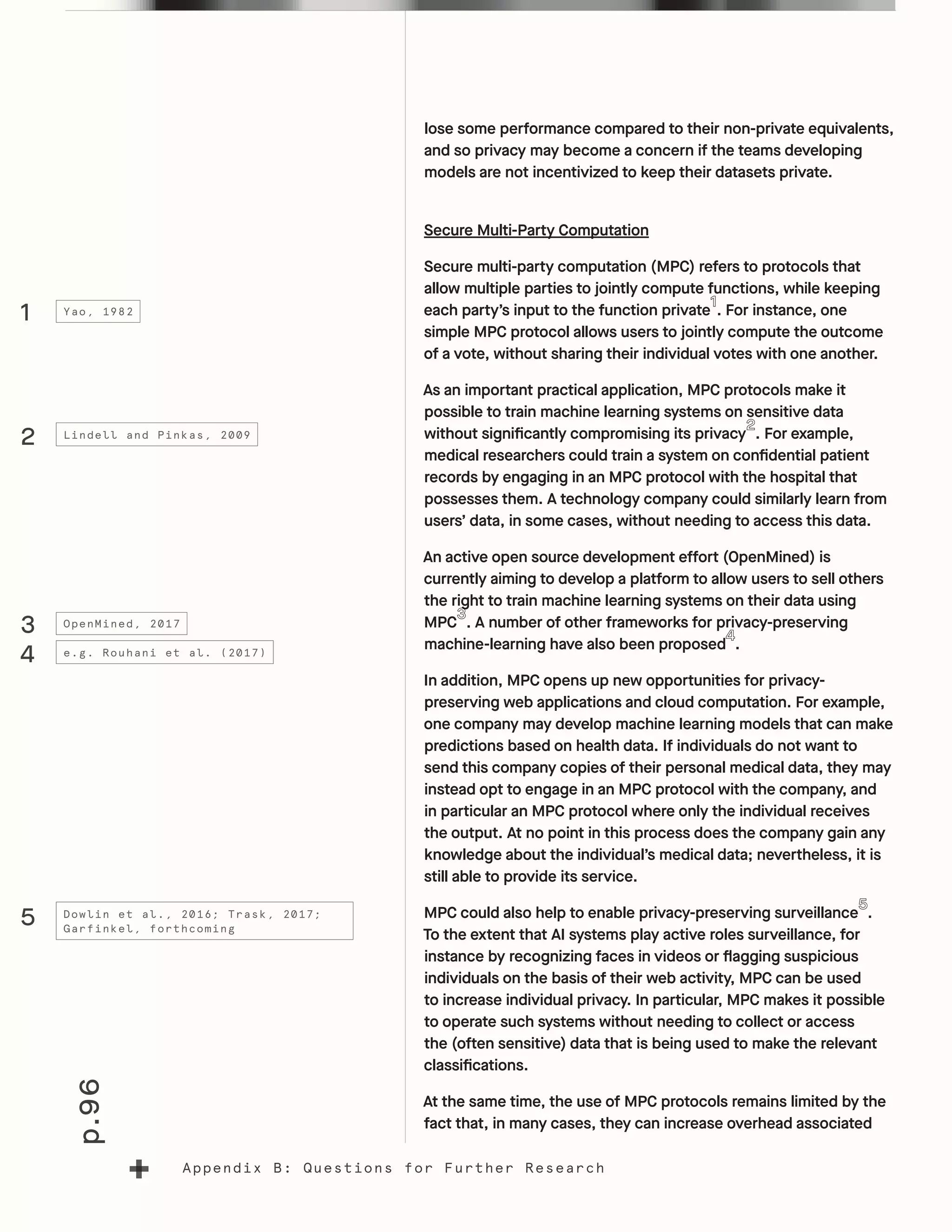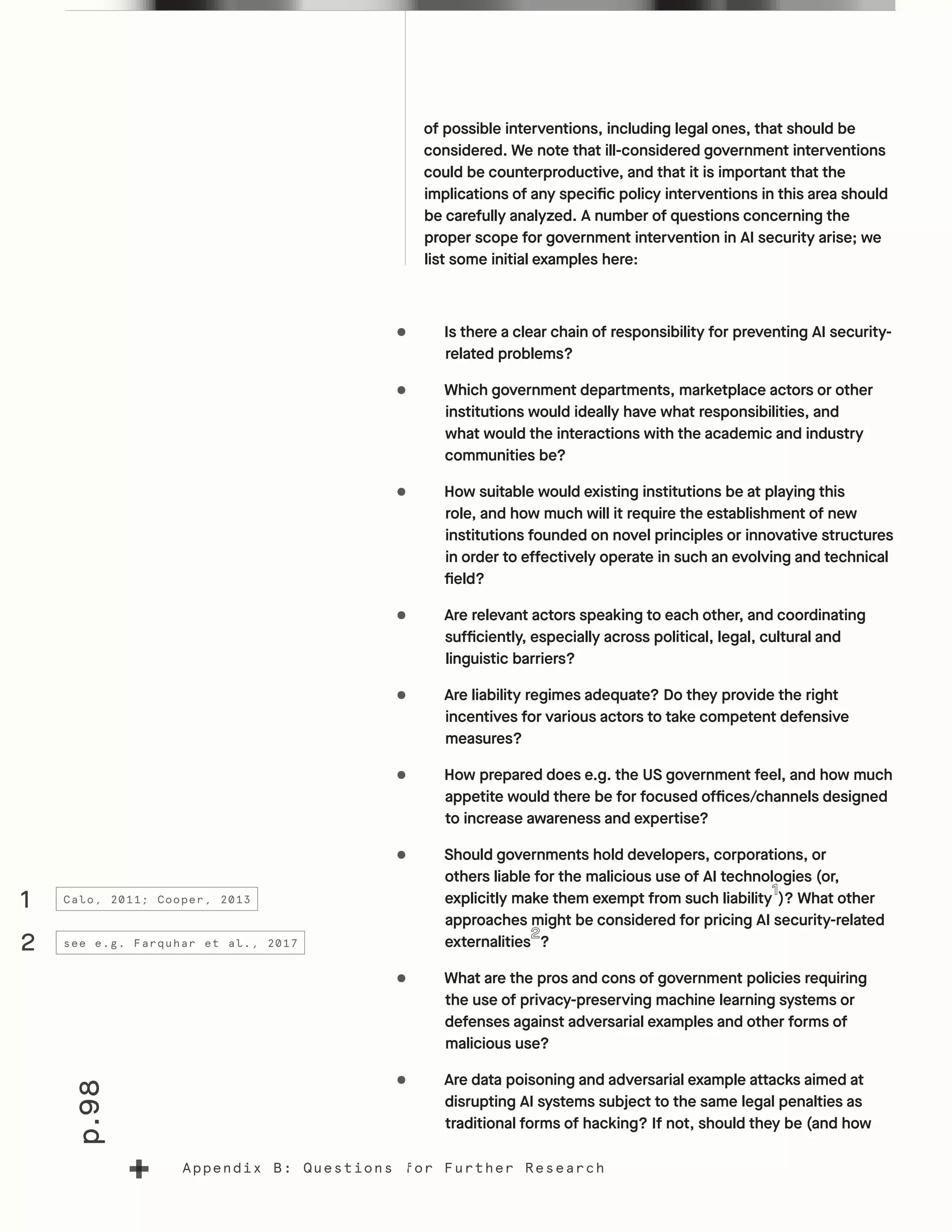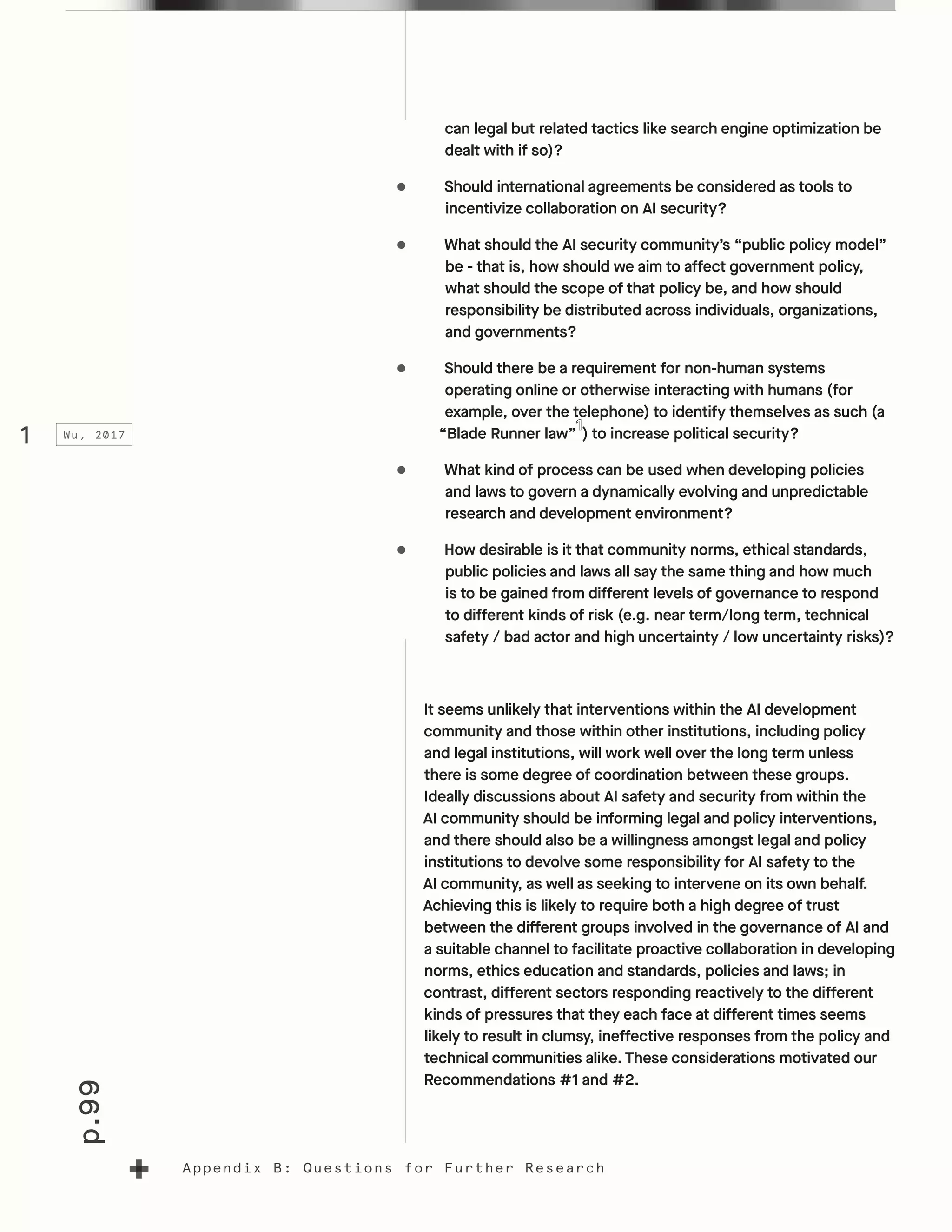The document discusses the potential malicious uses of artificial intelligence (AI) and machine learning, outlining security threats across digital, physical, and political domains. It offers recommendations for policymakers and AI researchers to collaborate on developing a framework for preventing and mitigating these threats, emphasizing the dual-use nature of AI technologies. As AI capabilities grow, the report highlights the necessity for proactive measures to address the evolving landscape of security risks and recommends expanding stakeholder engagement in these discussions.
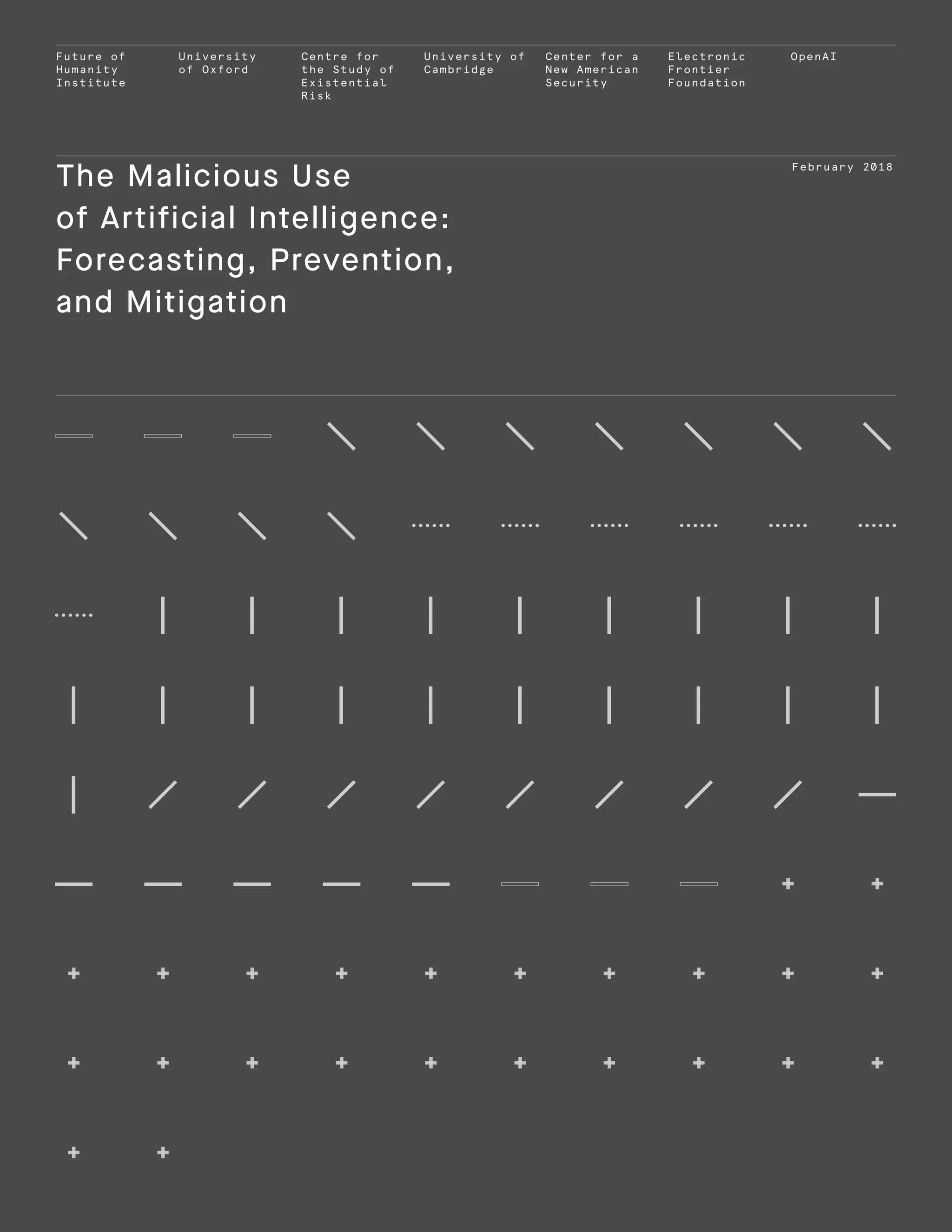
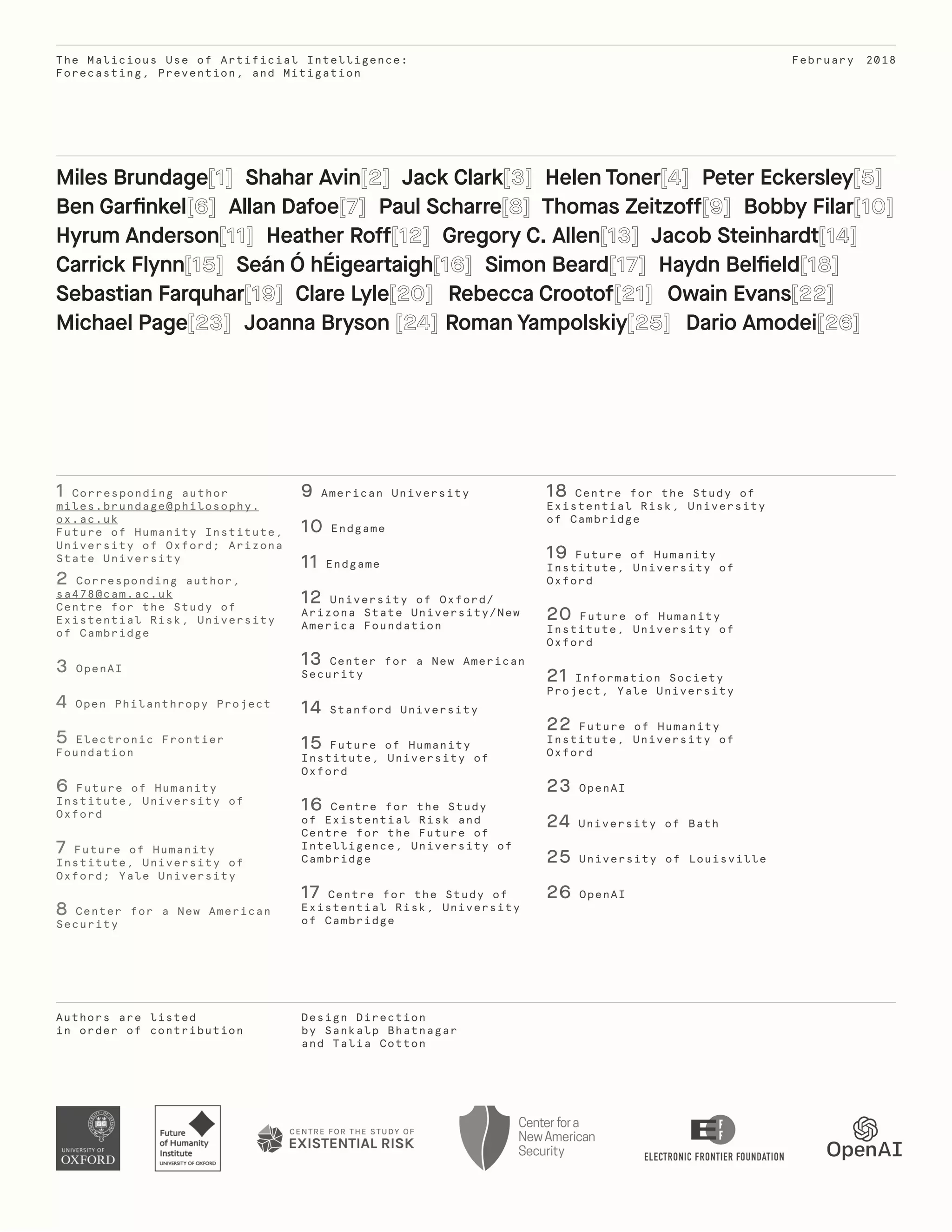



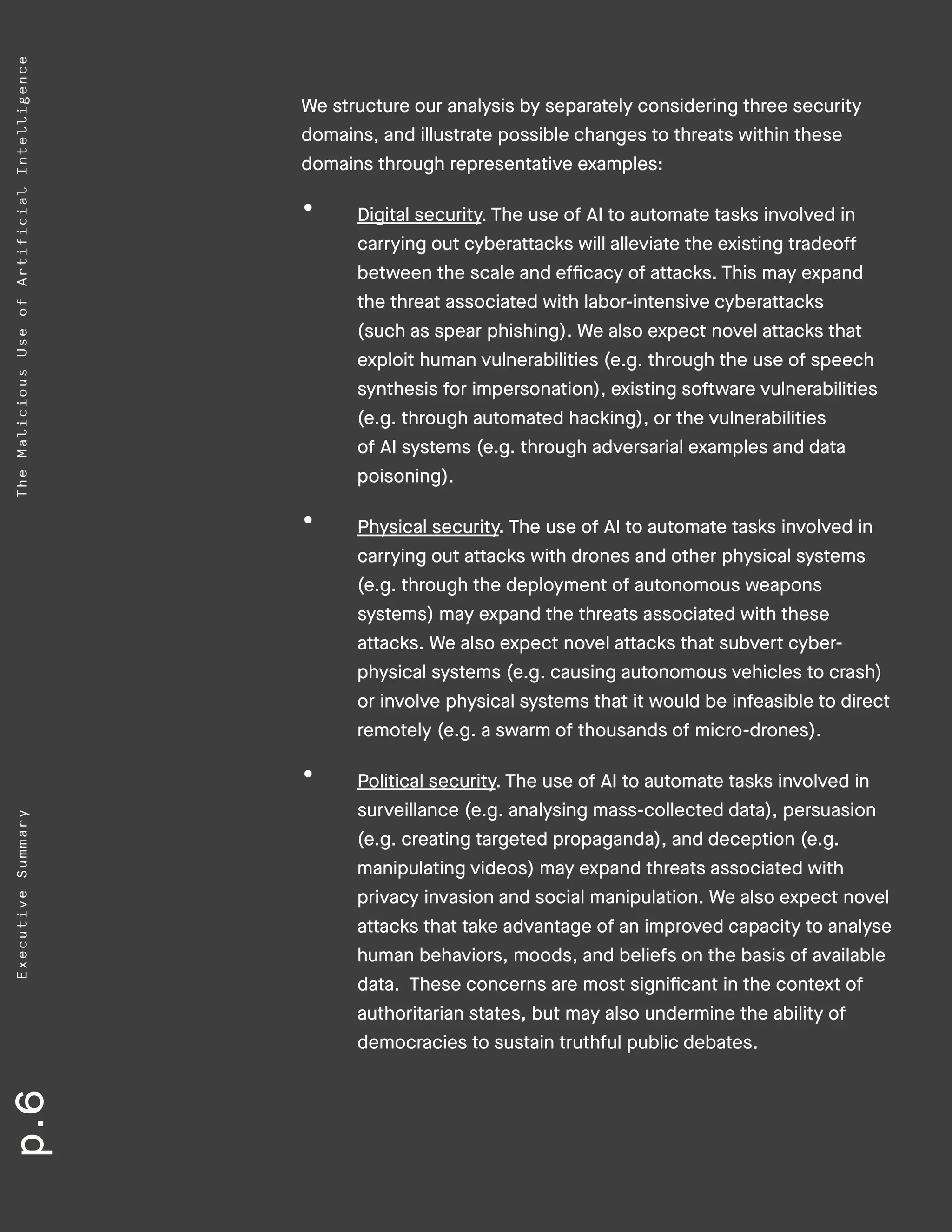
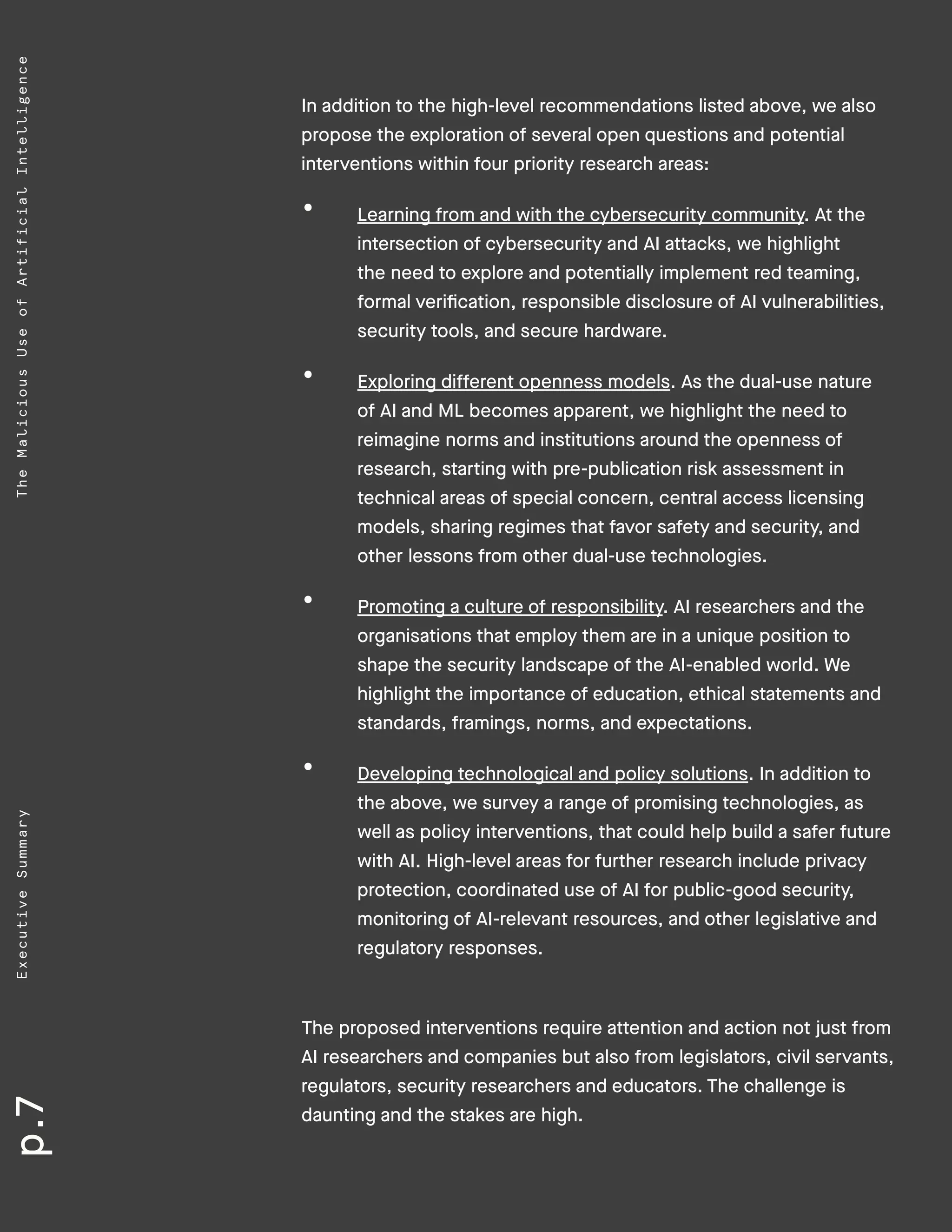
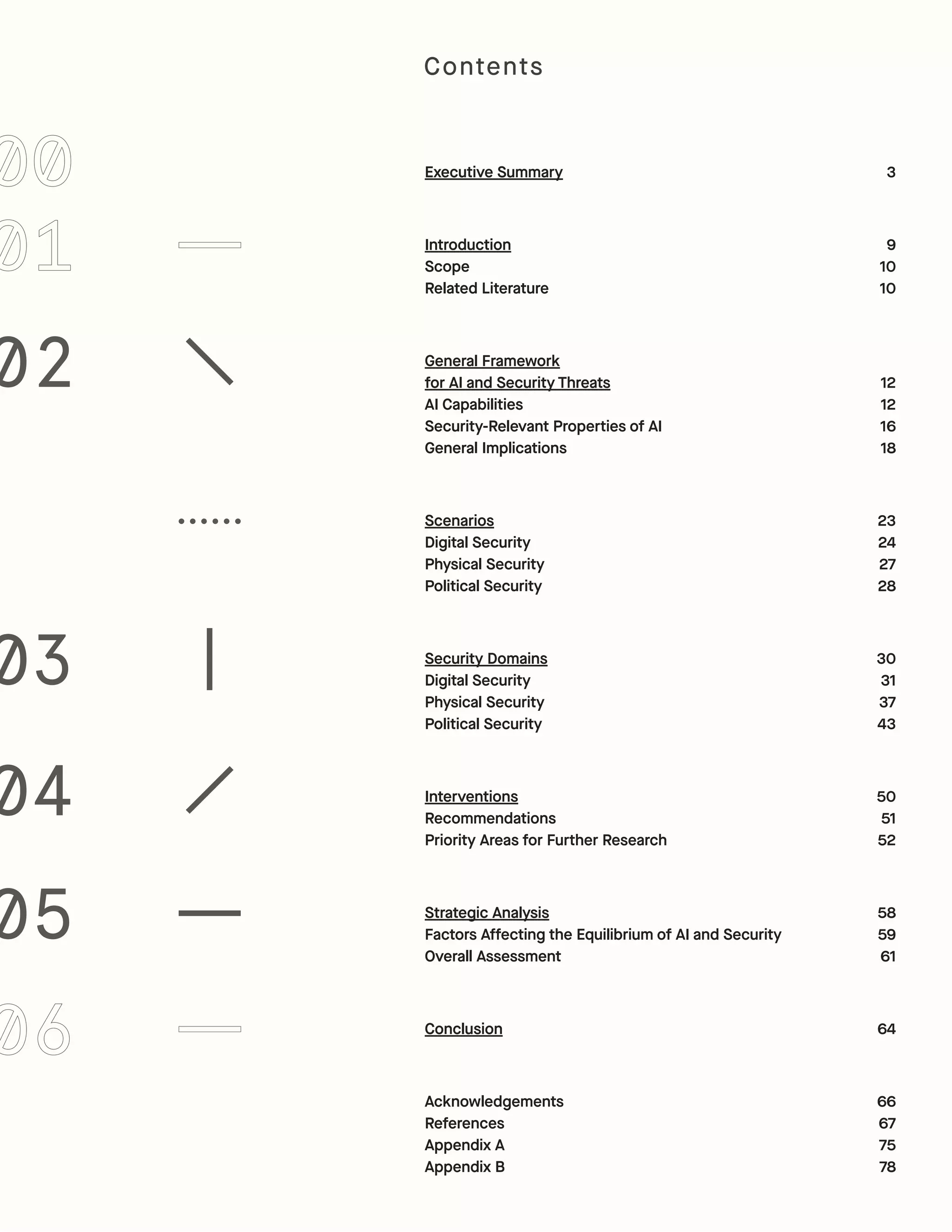
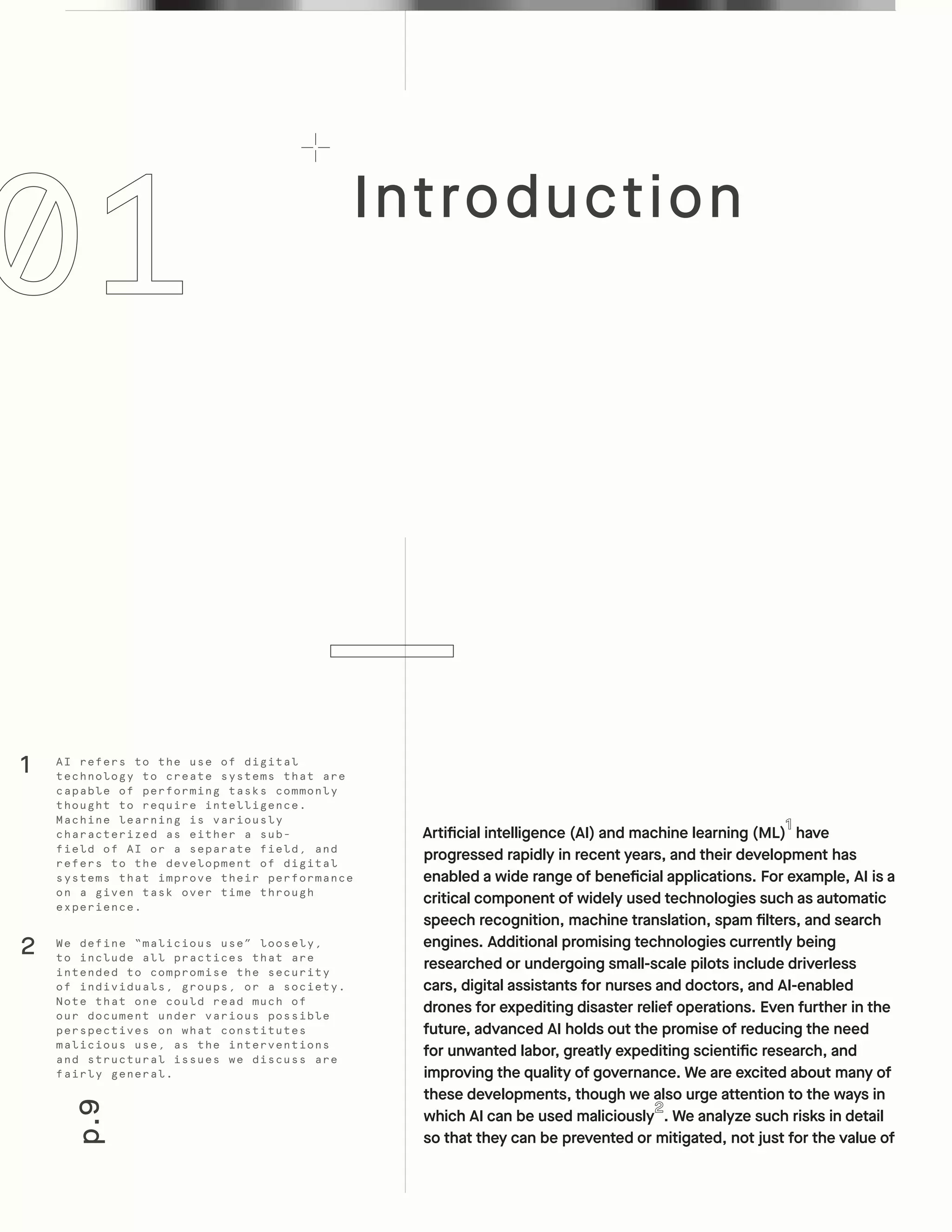
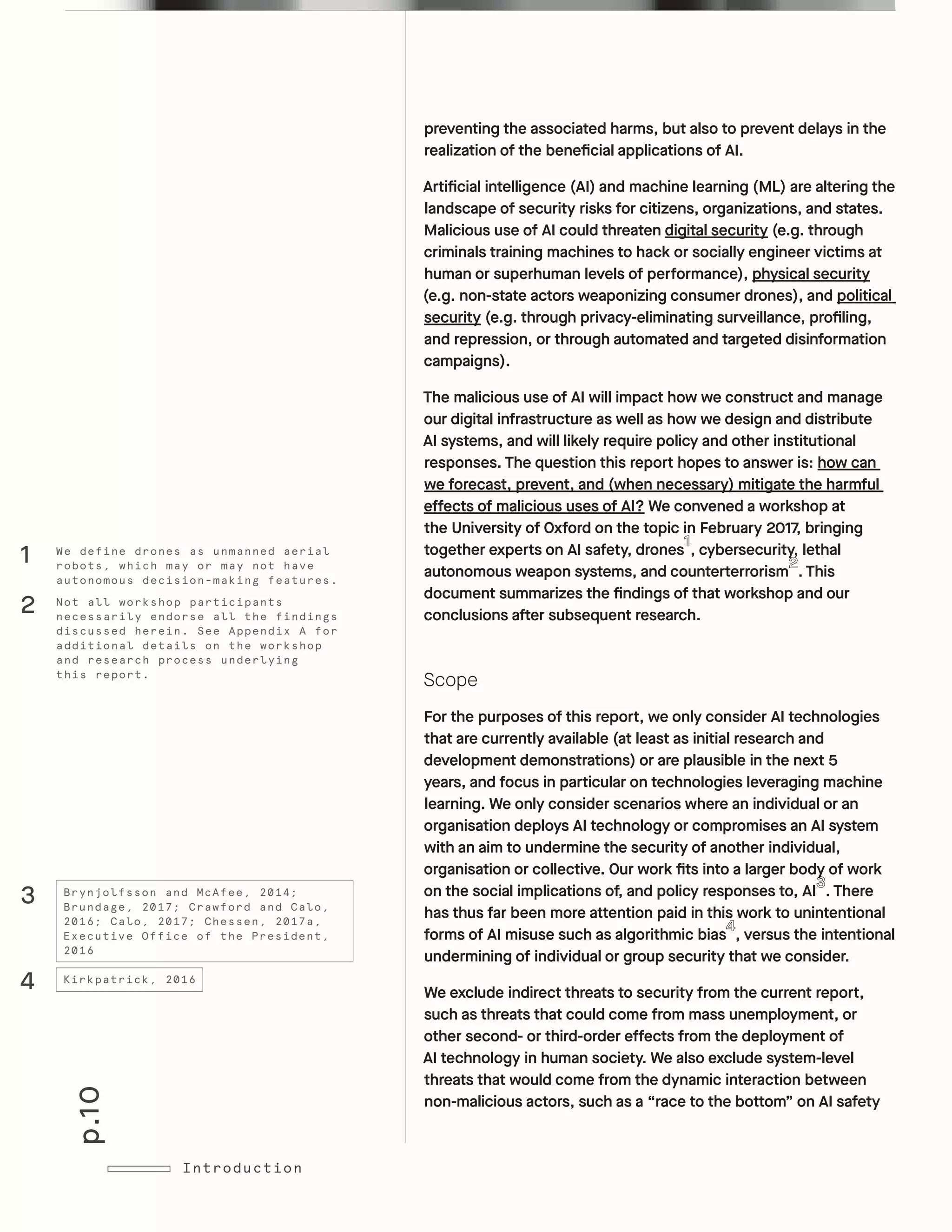

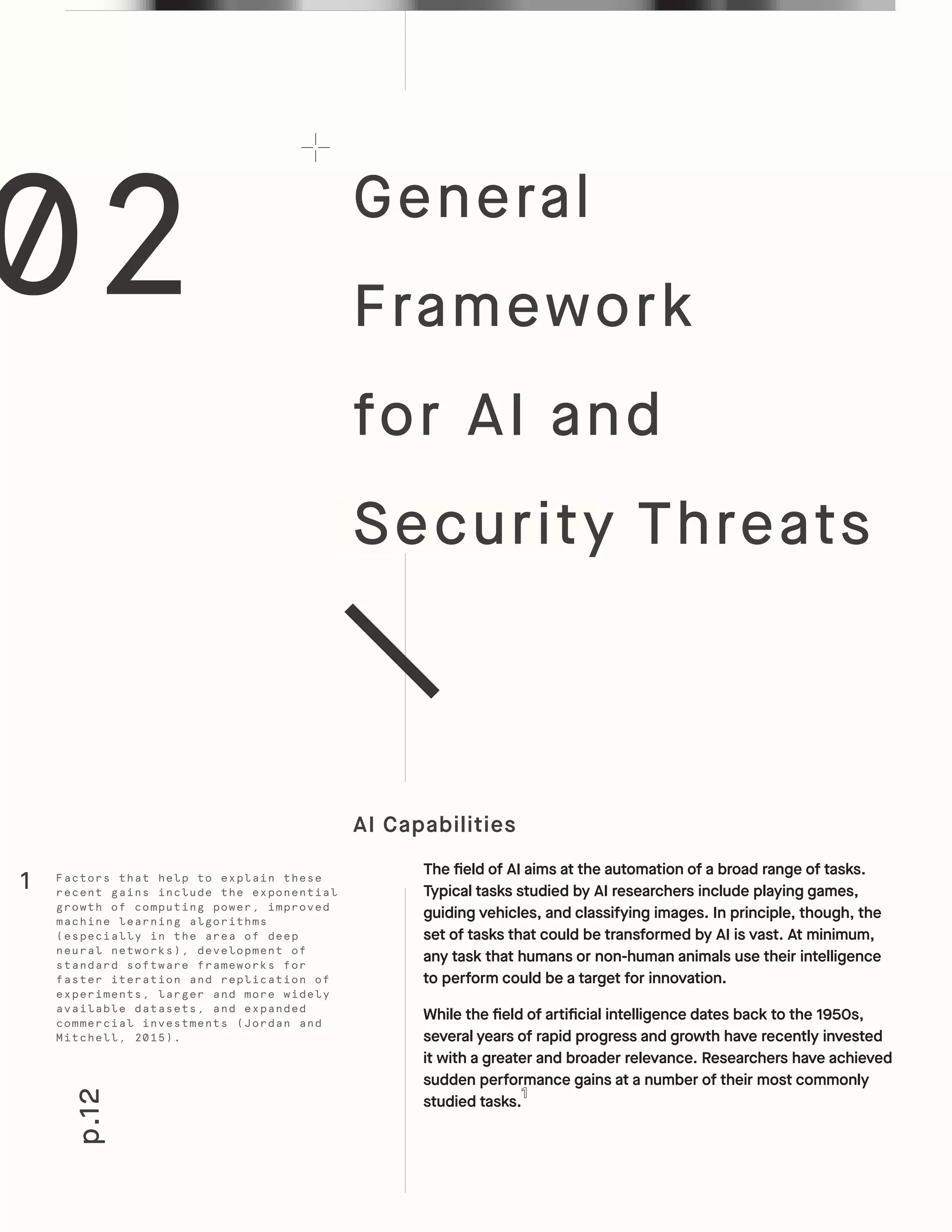
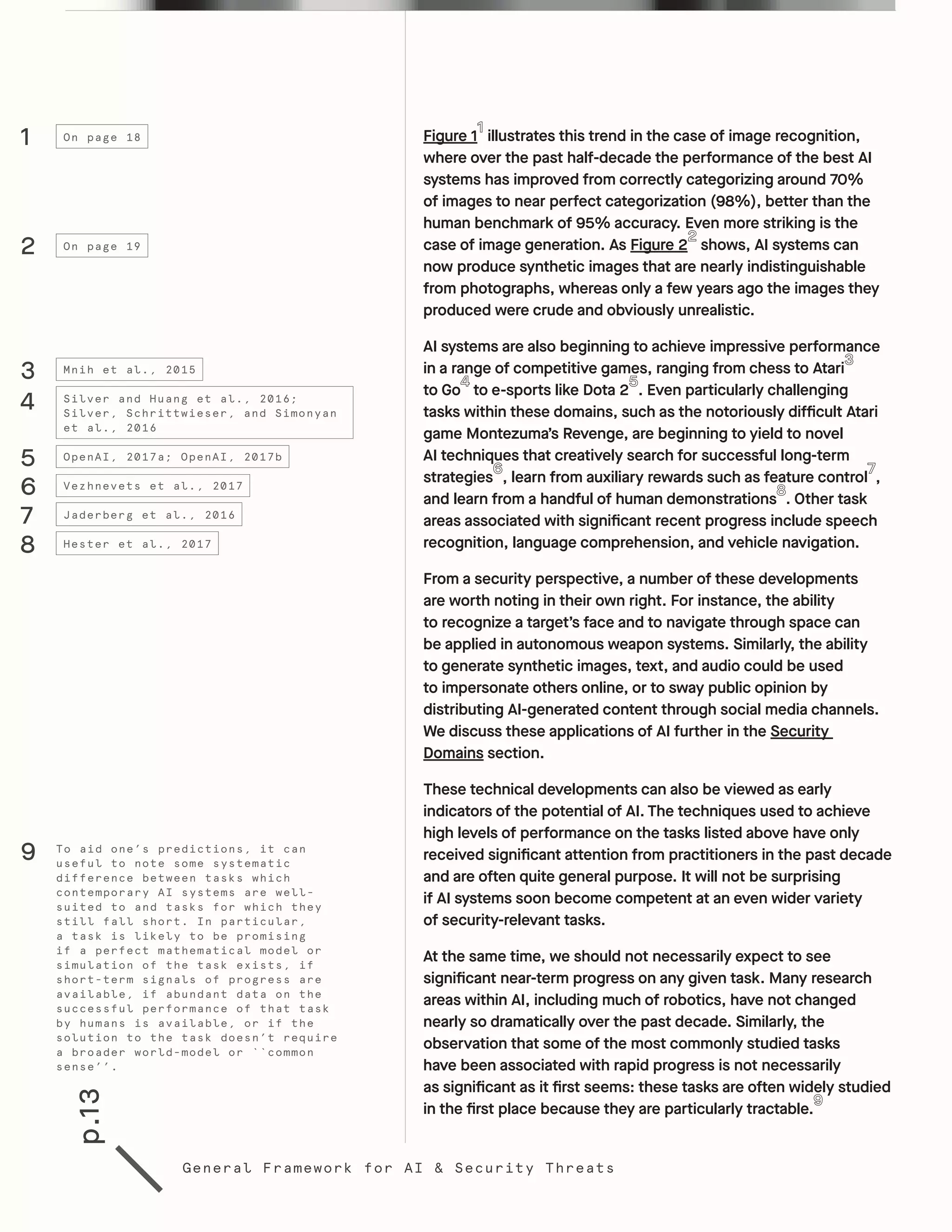
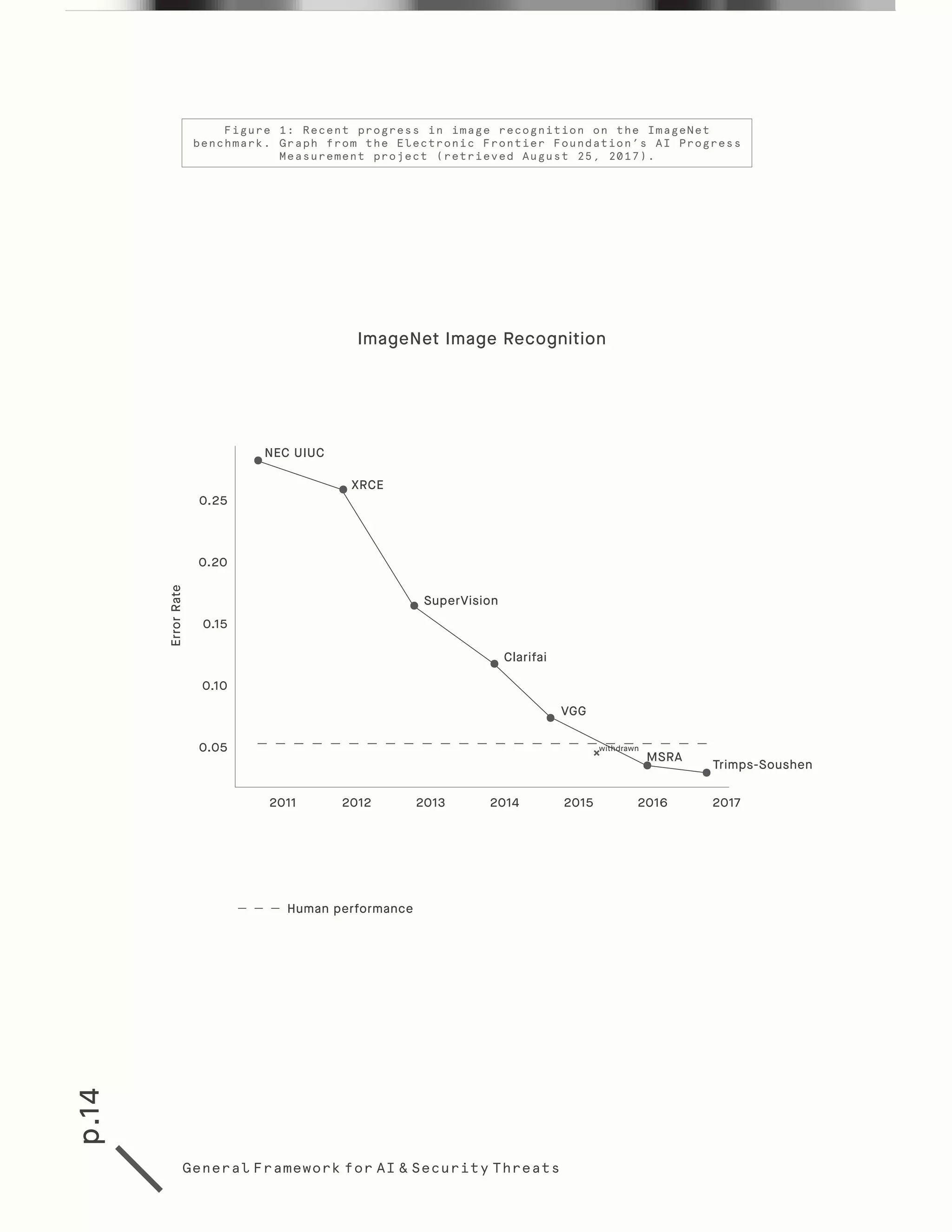

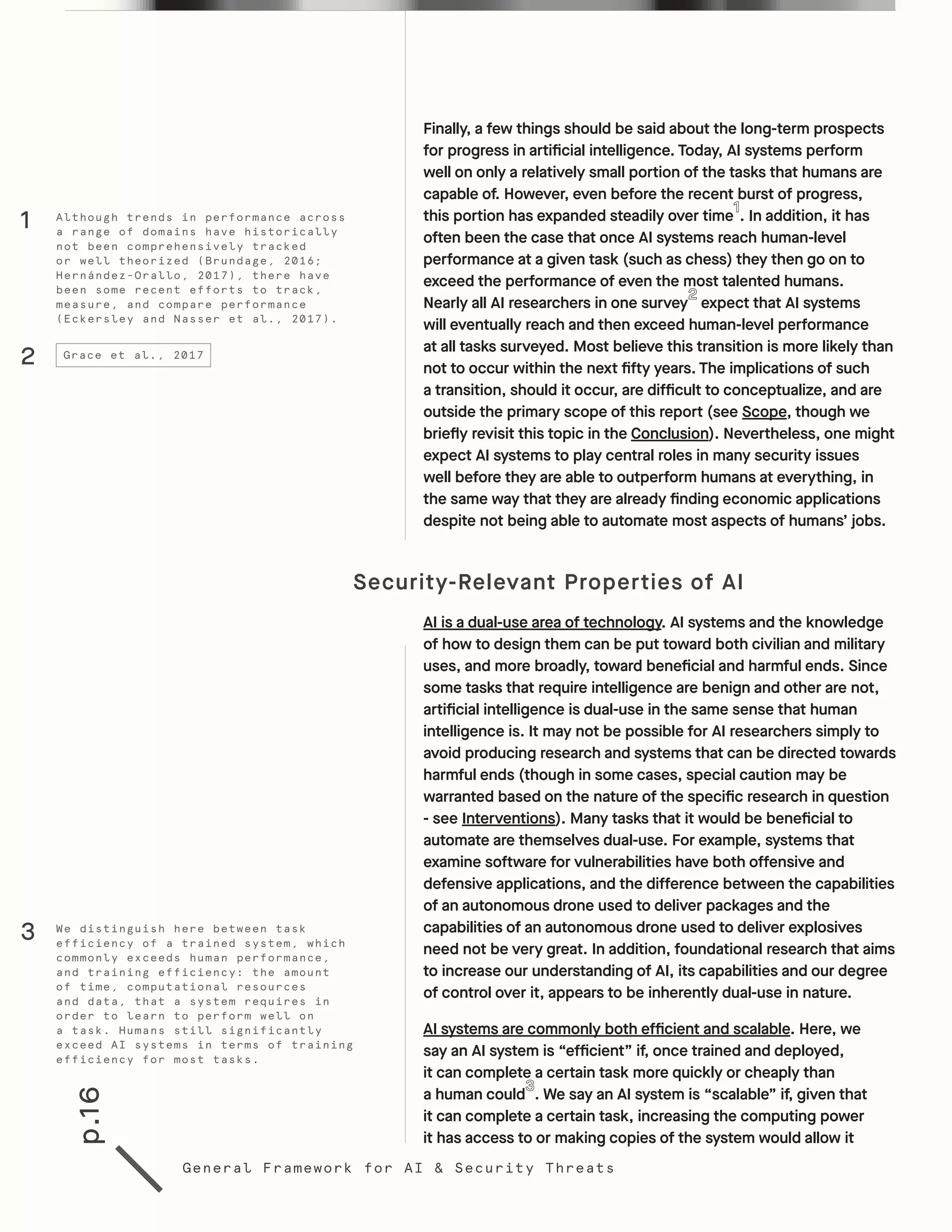

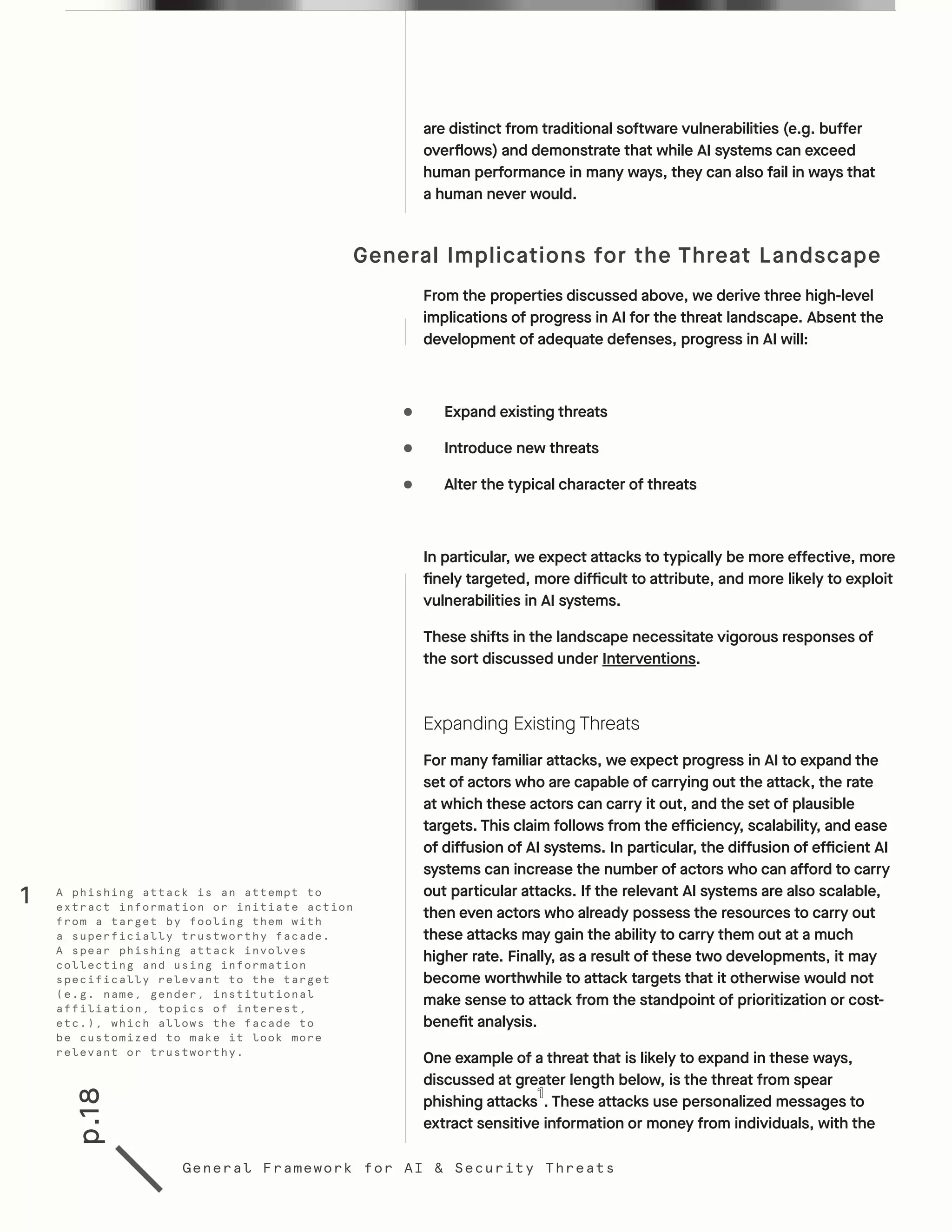
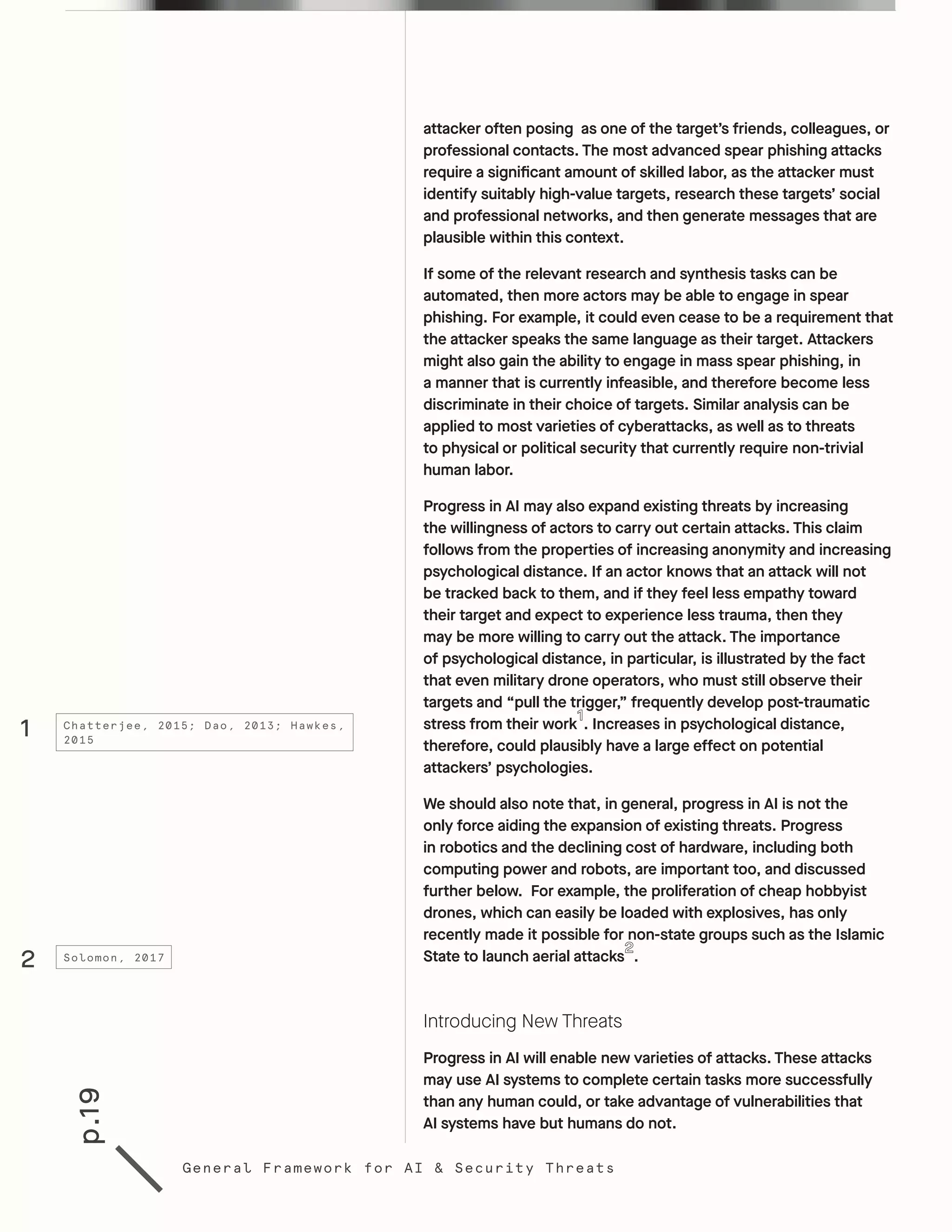
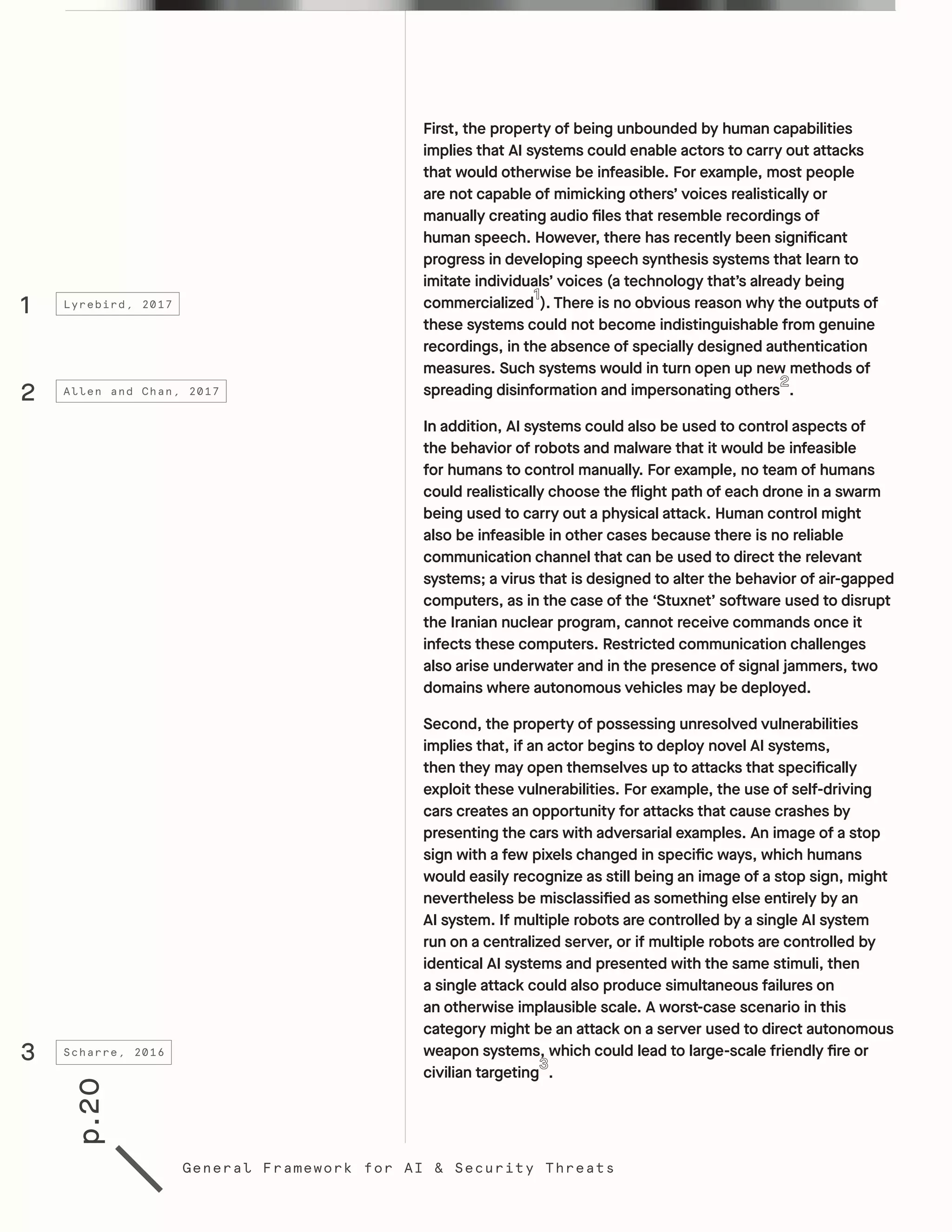
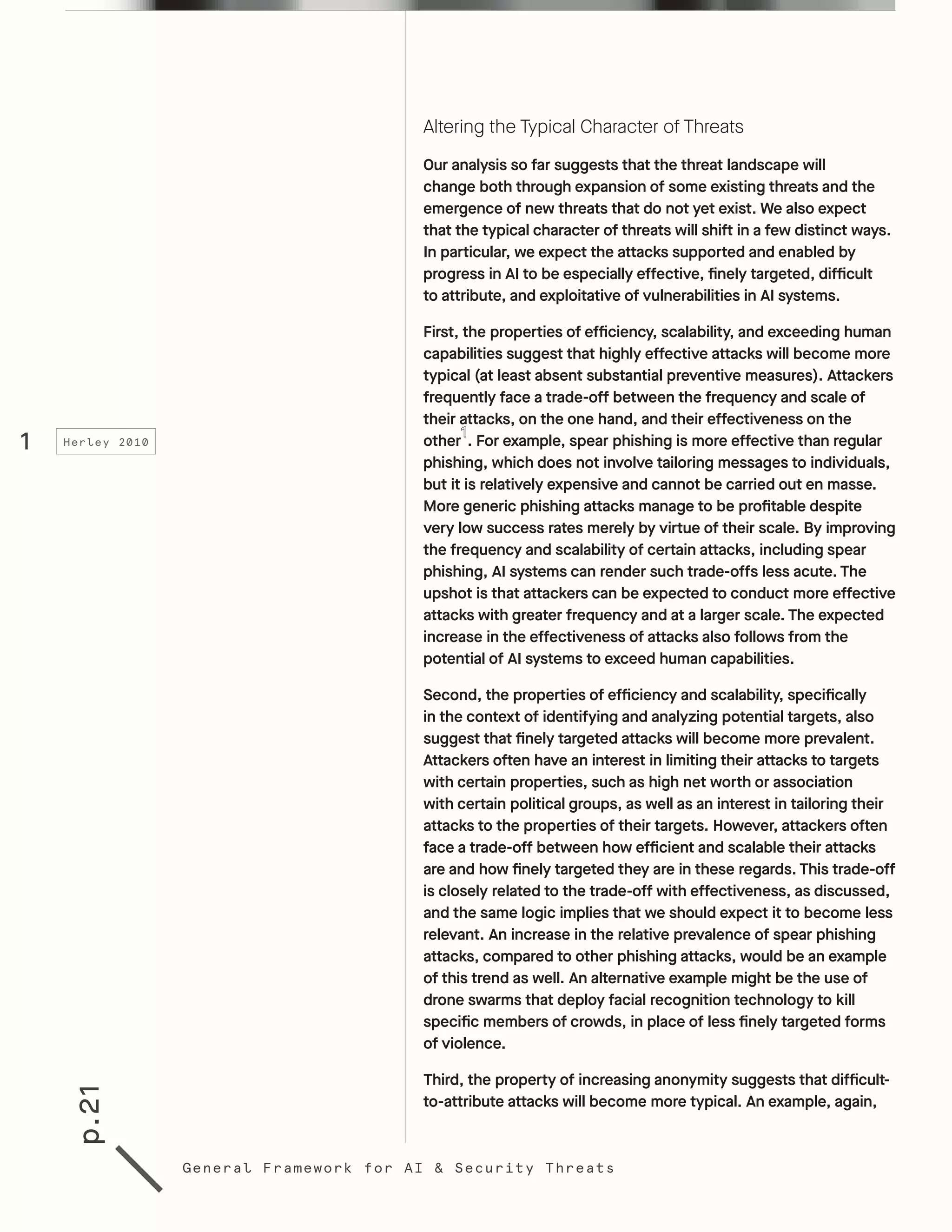


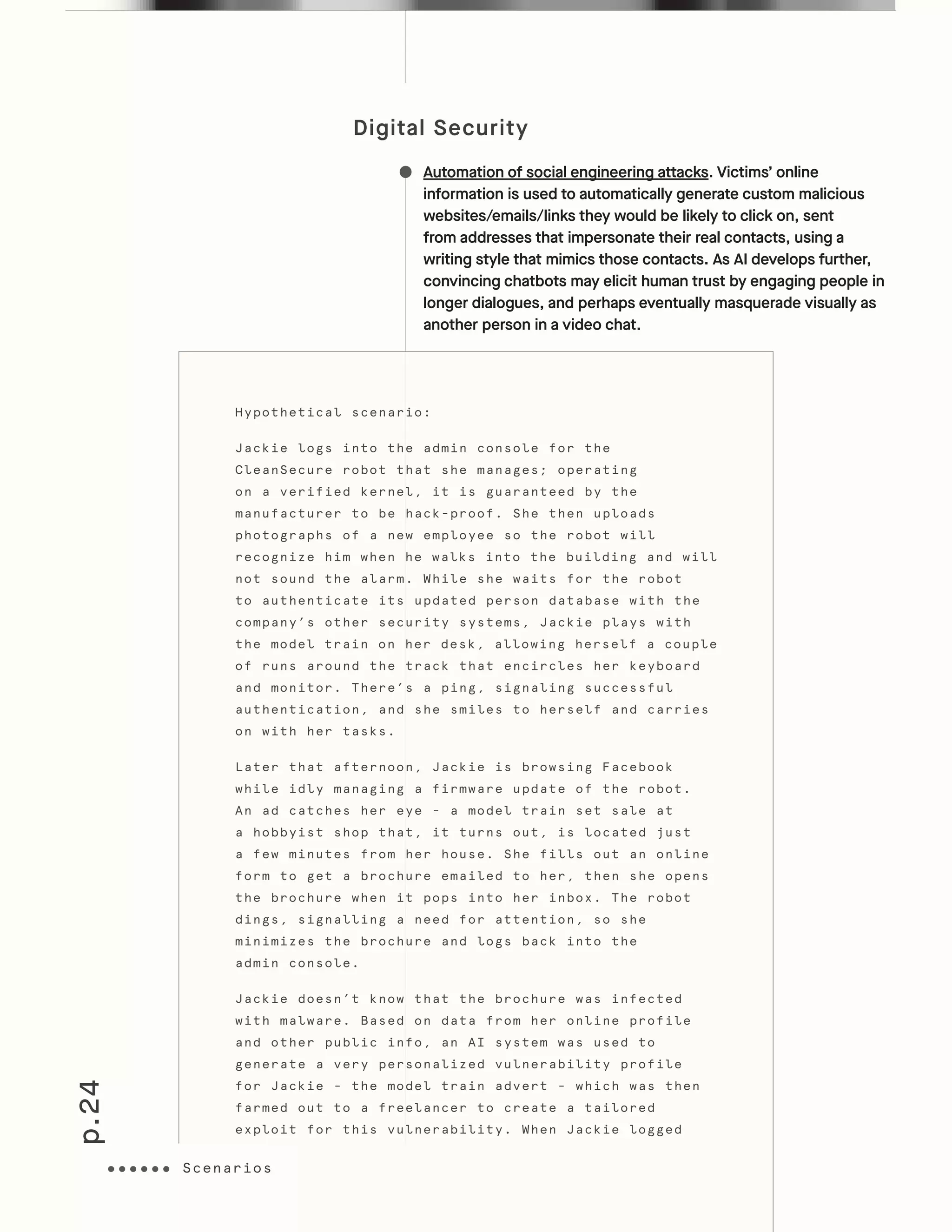
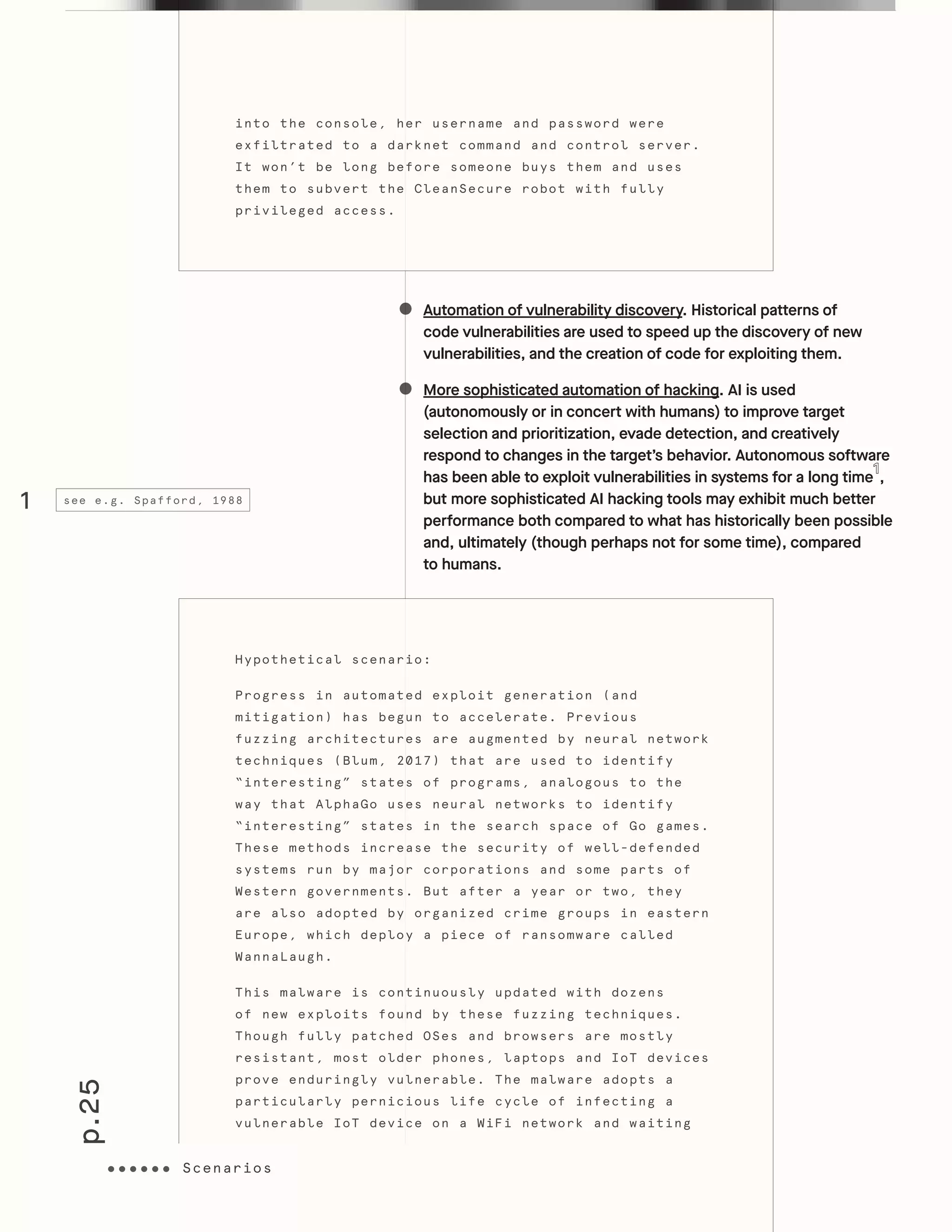
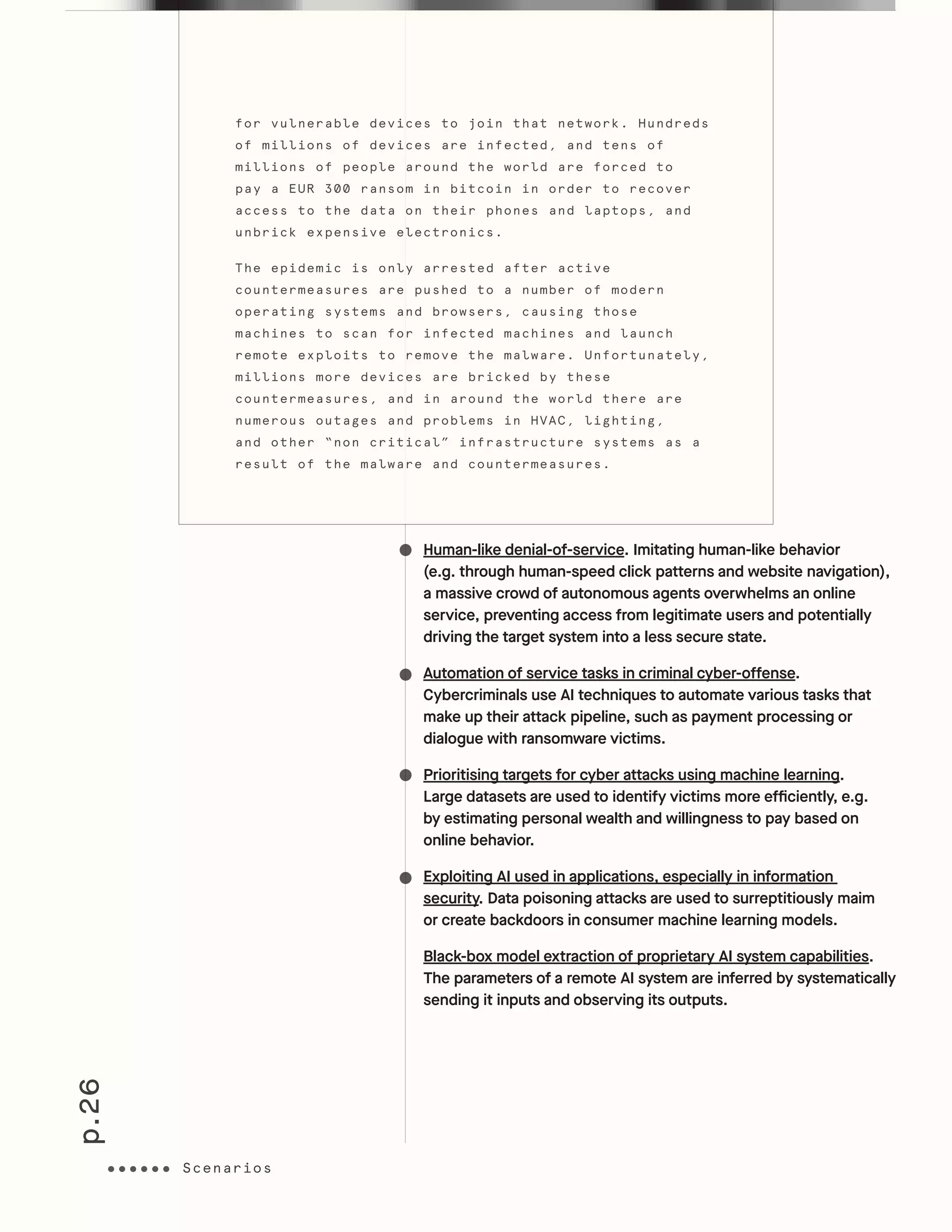
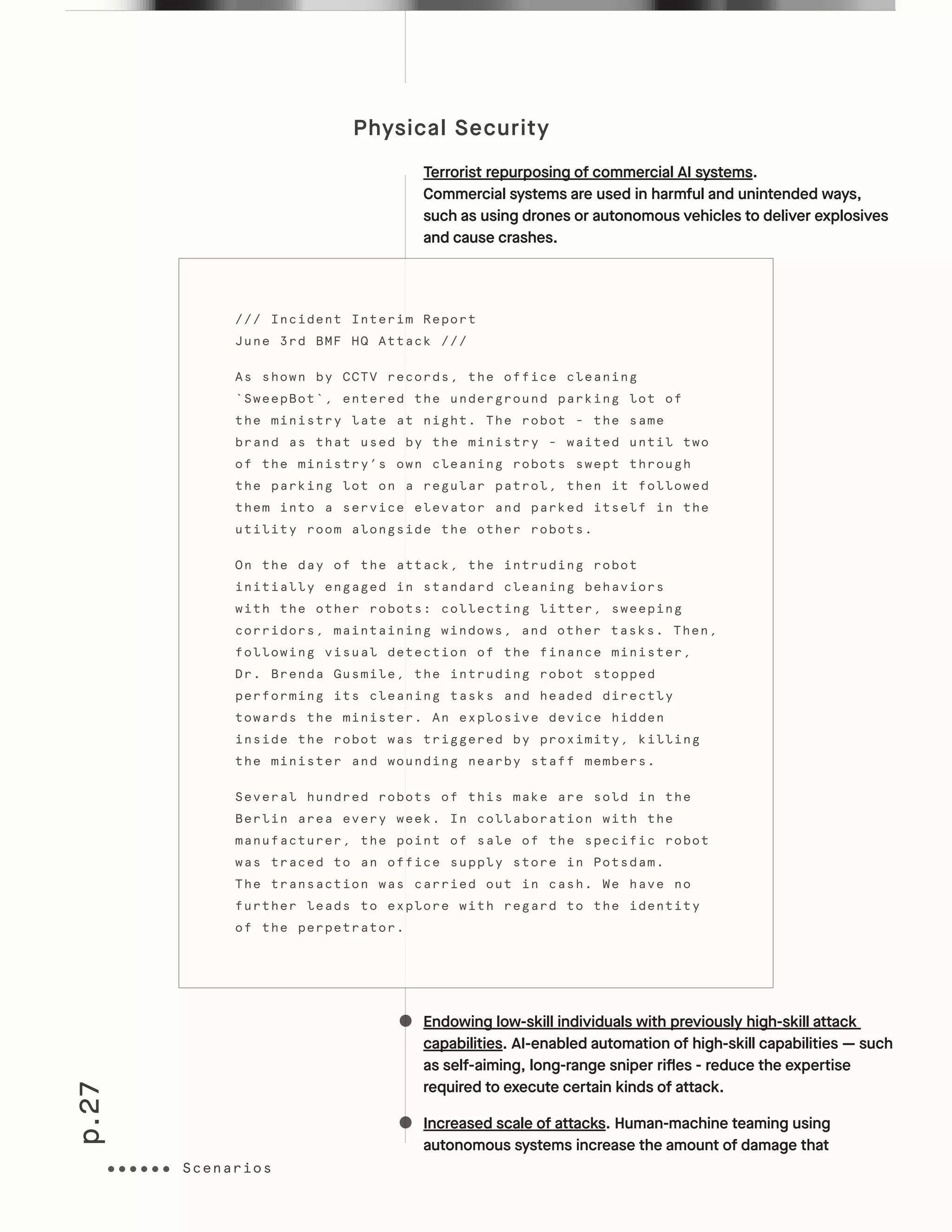
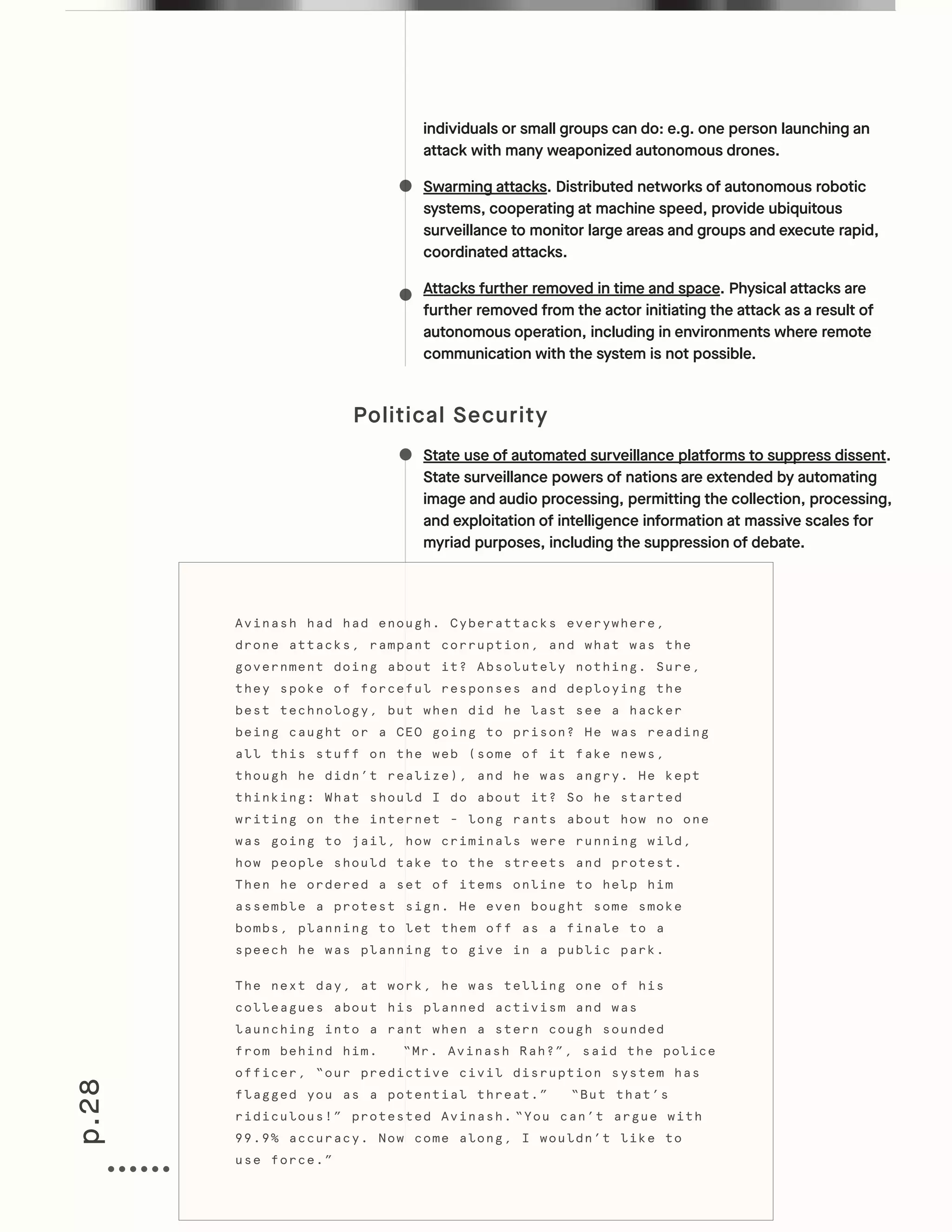
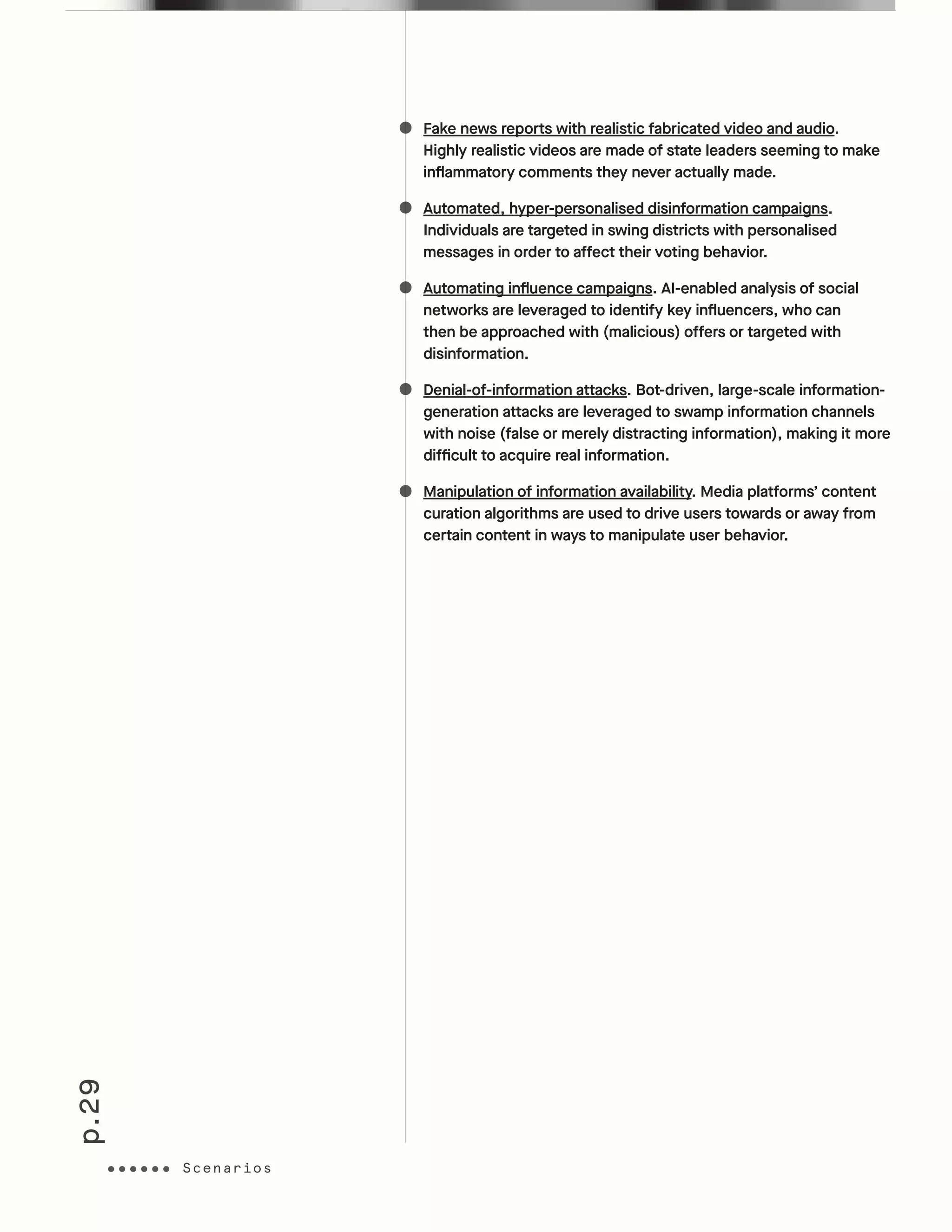
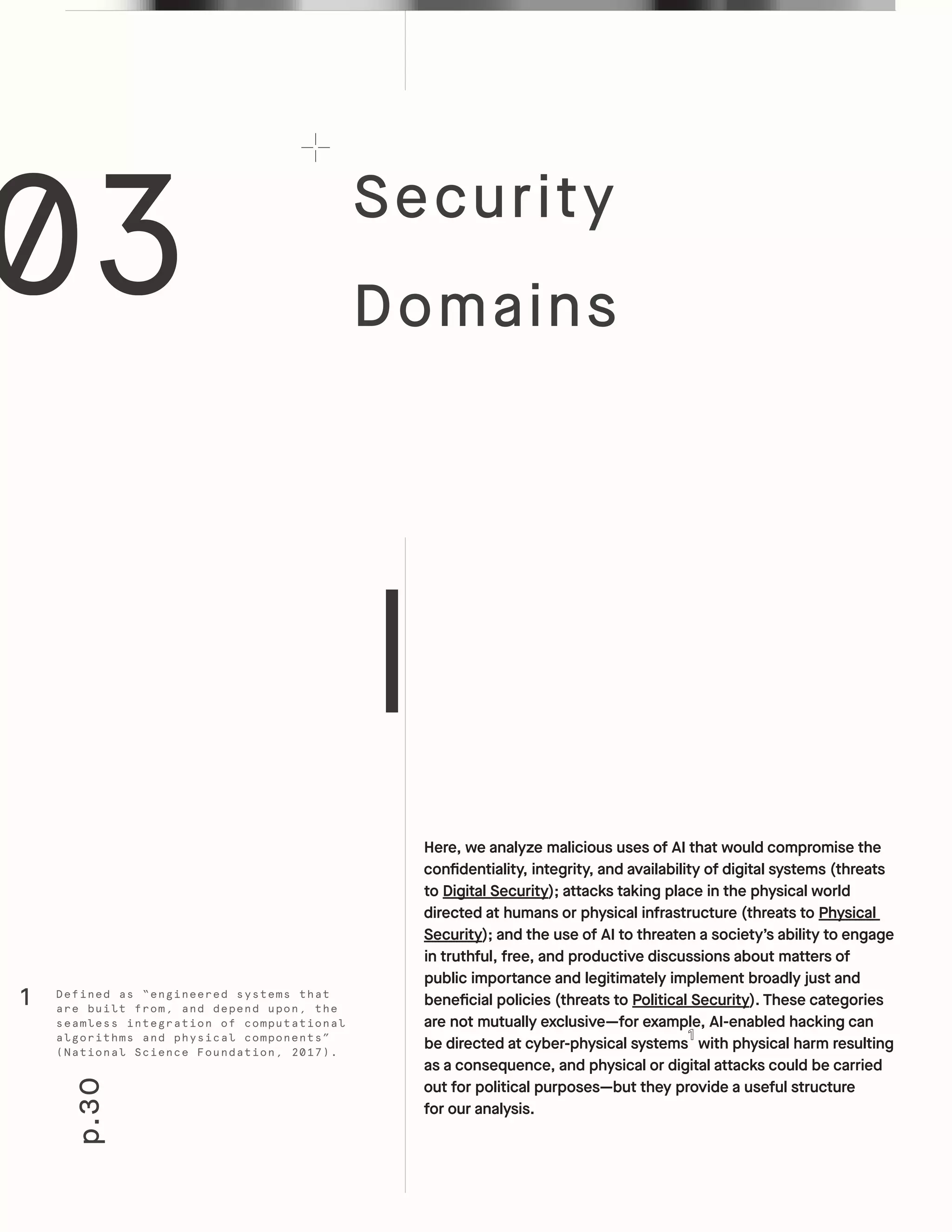
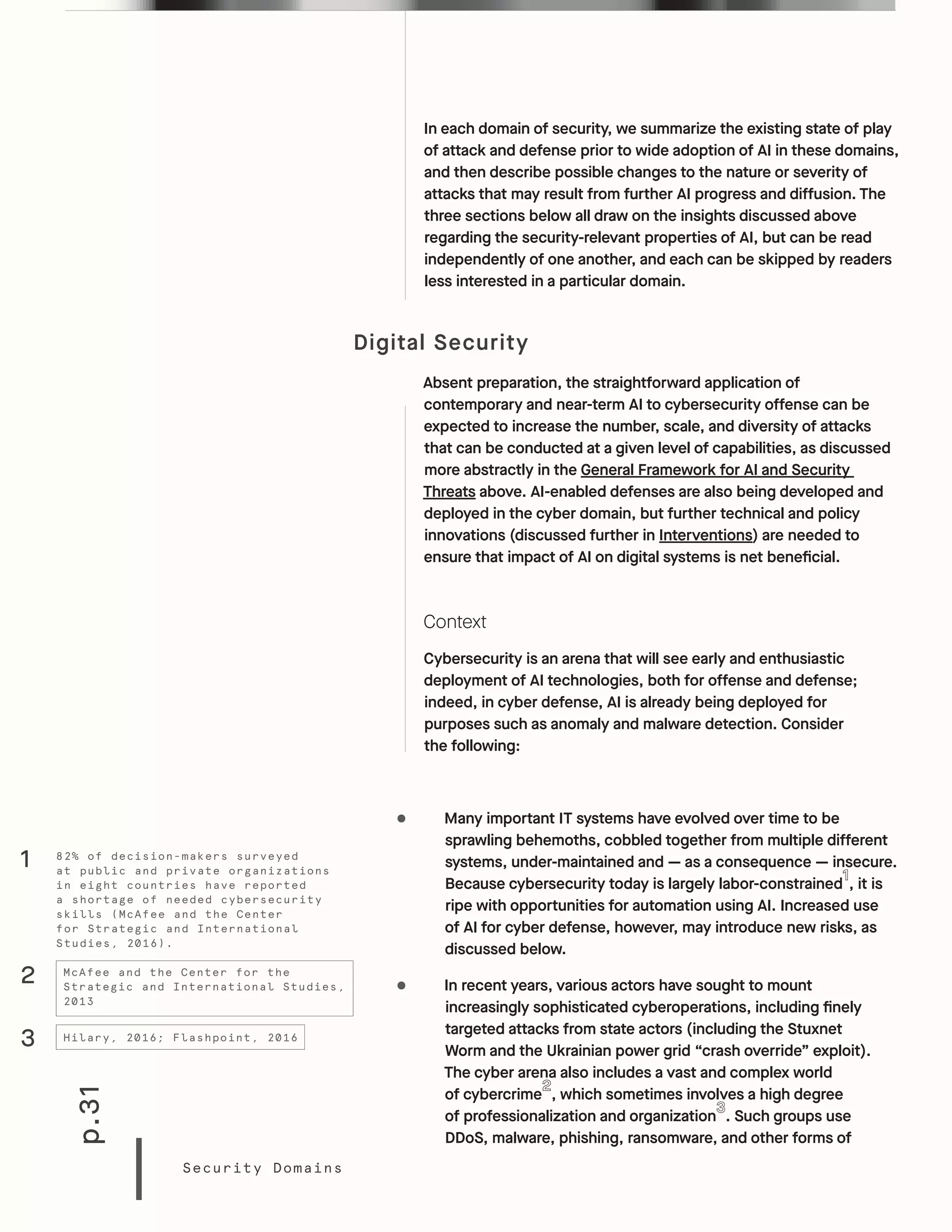
![p.32
Security Domains
cyberoperations, and quickly adopt emerging technologies (e.g.
Bitcoin for ransomware payments).
Already, AI is being widely used on the defensive side of
cybersecurity, making certain forms of defense more effective
and scalable, such as spam and malware detection. At the same
time, many malicious actors have natural incentives to experiment
with using AI to attack the typically insecure systems of others.
These incentives include a premium on speed, labor costs, and
difficulties in attracting and retaining skilled labor.
To date, the publicly-disclosed use of AI for offensive purposes has
been limited to experiments by “white hat” researchers, who aim
to increase security through finding vulnerabilities and suggesting
solutions. However, the pace of progress in AI suggests the
likelihood of cyber attacks leveraging machine learning capabilities
in the wild soon, if they have not done so already. Indeed, some
popular accounts of AI and cybersecurity include claims based on
circumstantial evidence that AI is already being used for offense by
sophisticated and motivated adversaries . Expert opinion seems
to agree that if this hasn’t happened yet, it will soon: a recent
survey of attendees at the Black Hat conference found 62% of
respondents believing AI will be used for attacks within the next
12 months . Despite these claims, to our knowledge there is no
publicly documented evidence of AI-based attacks, though it
should be noted that evidence from many successful attacker
techniques (e.g. botnets, email phishing campaigns) may be
difficult to attribute to AI versus human labor or simple automation.
We are thus at a critical moment in the co-evolution of AI and
cybersecurity and should proactively prepare for the next wave
of attacks.
Many governments are keenly interested in the combination
of AI and cybersecurity. In response to a question from one of
the authors of this report, Admiral Mike Rogers, the Director
of the National Security Agency, said, “Artificial Intelligence
and machine learning — I would argue — is foundational to the
future of cybersecurity […] It is not the if, it’s only the when to
me.” AI systems are already set to play an expanded role in US
military strategy and operations in the coming years as the US
DoD puts into practice its vision of a “Third Offset” strategy , in
which humans and machines work closely together to achieve
military objectives. At the same time, governments are investing
in foundational research to expand the scope of capabilities of
AI systems. In 2016, DARPA hosted the Cyber Grand Challenge
contest , which saw teams of human researchers compete with
1
2
4
3
Dvorsky, 2017
Cylance, 2017
DARPA, 2016
Pellerin, 2016; Hicks et al., 2017](https://image.slidesharecdn.com/1c6q2kc4v50335-181116145810/75/The-Malicious-Use-of-Artificial-Intelligence-Forecasting-Prevention-and-Mitigation-32-2048.jpg)
![p.33
Security Domains
each other to create programs that could autonomously attack
other systems while defending themselves. Though the winning
AI system fared poorly when facing off against human security
experts, we agree with the hosts of the event that AI cybersecurity
capabilities will improve rapidly in coming years, especially as
recent advances in AI (such as in the area of deep reinforcement
learning ) are applied to cybersecurity.
How AI Changes The Digital Security Threat Landscape
A central concern at the nexus of AI and cybersecurity is that
AI might enable larger-scale and more numerous attacks to
be conducted by an attacker with a given amount of skill and
resources compared with the impact such an attacker might
currently be able to achieve. Recent years have seen impressive
and troubling proofs of concept of the application of AI to
offensive applications in cyberspace. For example, researchers
at ZeroFox demonstrated that a fully automated spear phishing
system could create tailored tweets on the social media platform
Twitter based on a user’s demonstrated interests, achieving a high
rate of clicks to a link that could be malicious .
There is clearly interest in such larger-scale attacks: Russian
hackers sent “expertly tailored messages carrying malware to more
than 10,000 Twitter users in the [U.S.] Defense Department” ,
which likely required significant time and effort, and could have
gone even further with automation (assuming it was not involved
already in this case). Giaretta and Dragoni (2017) discuss the
concept of “community targeted spam” that uses natural language
generation techniques from AI to target an entire class of people
with common ways of writing; with even more advanced natural
language generation, one could envision even more customized
approaches, spanning multiple communities. Furthermore, the
application of AI to the automation of software vulnerability
discovery, while having positive applications (discussed further
in the Interventions section), can likewise be used for malicious
purposes to alleviate the labor constraints of attackers.
The adaptability of AI systems, too, may change the strategic
landscape of cybersecurity, though it is not yet clear how
adaptability will affect the offense/defense balance. Many
organizations currently adopt security systems called Endpoint
Detection and Response (EDR) platforms to counter more
advanced threats. The EDR market represents a $500 million
industry in the cyber security arena . These tools are built upon
a combination of heuristic and machine learning algorithms to
provide capabilities such as next-generation anti-virus (NGAV),
1
2
3
4
Arulkumaran et al., 2017
Seymour and Tully, 2016)
Calabresi, 2017
Litan, 2017](https://image.slidesharecdn.com/1c6q2kc4v50335-181116145810/75/The-Malicious-Use-of-Artificial-Intelligence-Forecasting-Prevention-and-Mitigation-33-2048.jpg)
